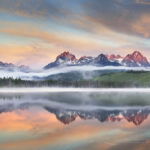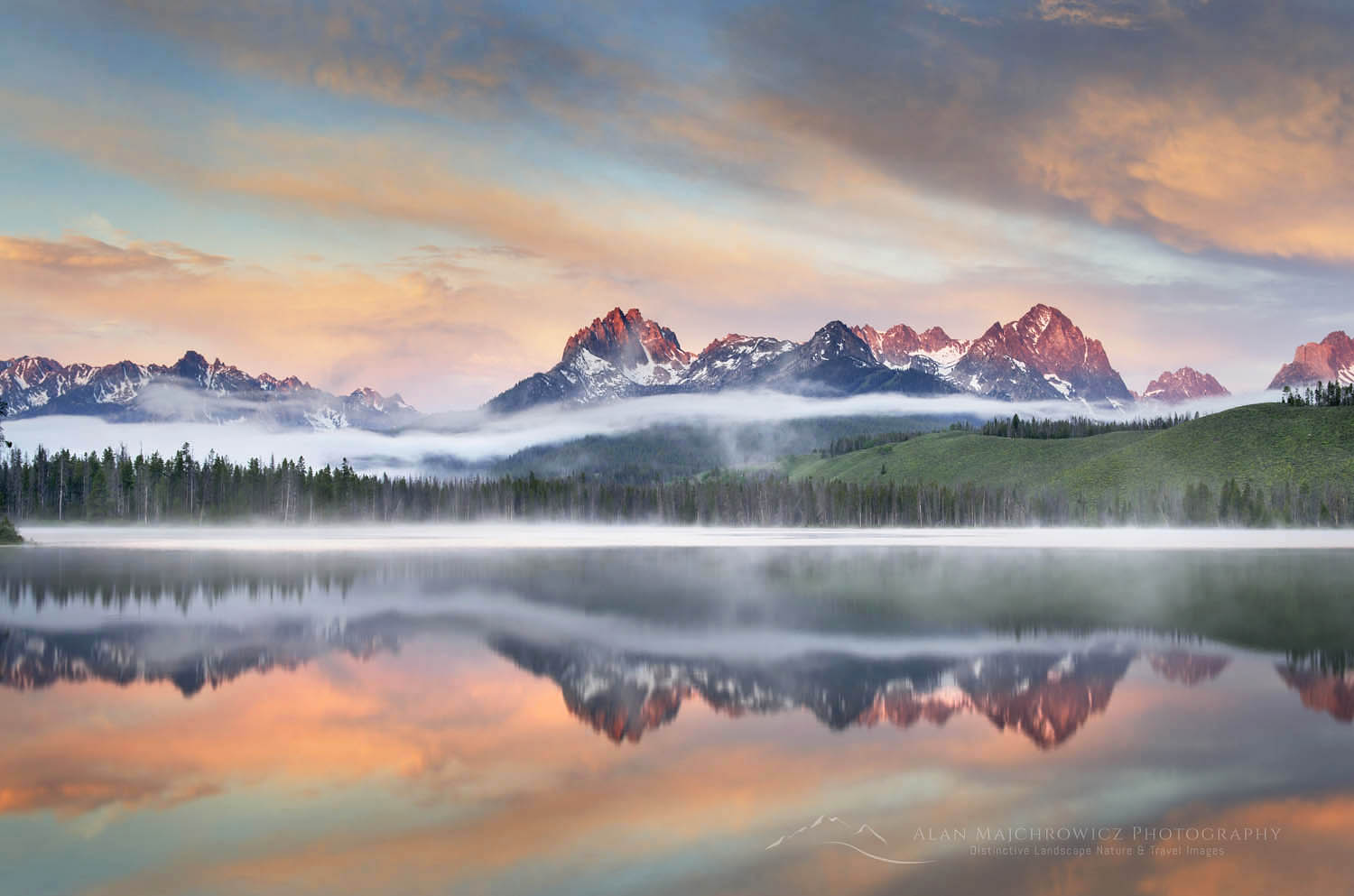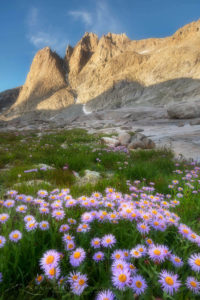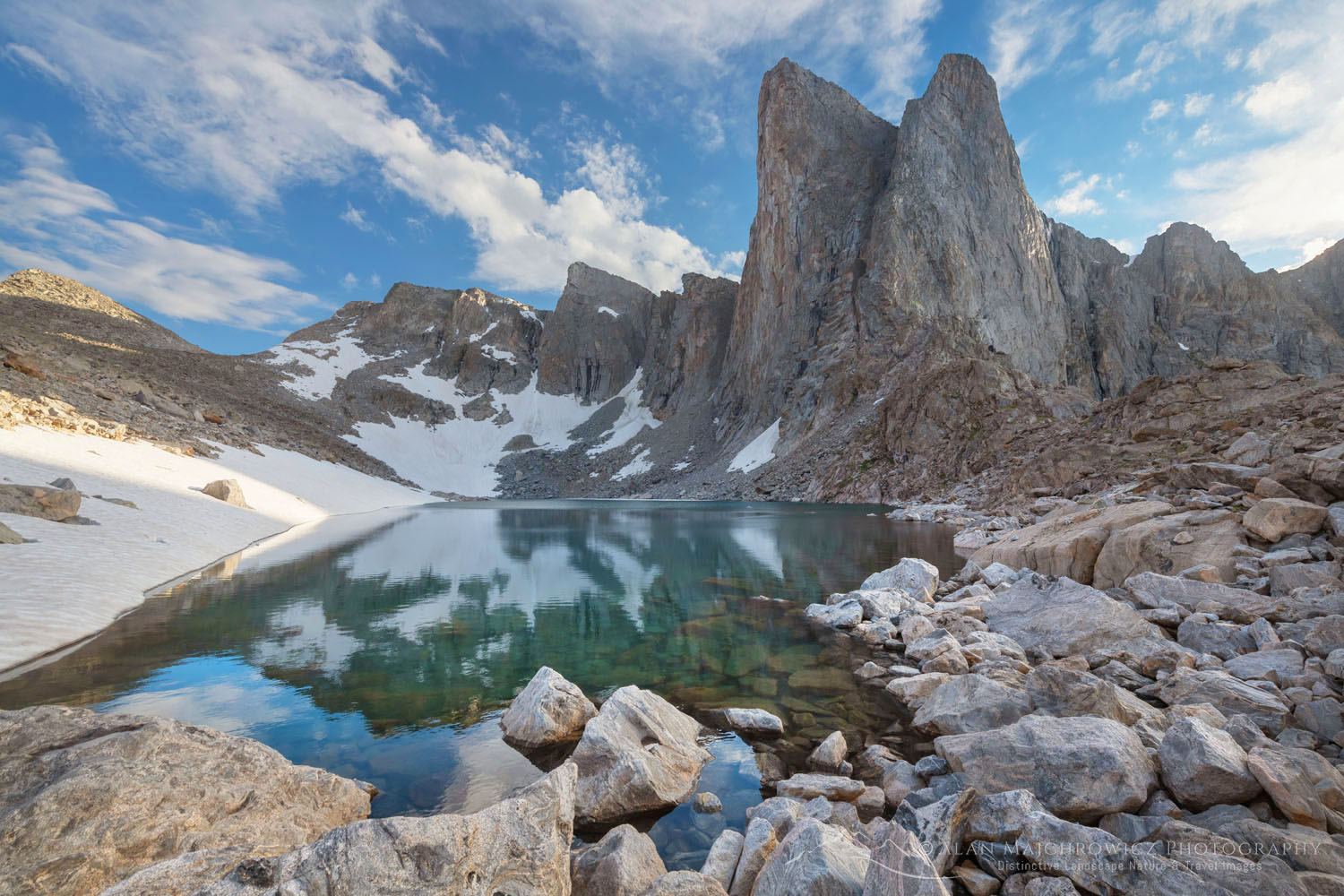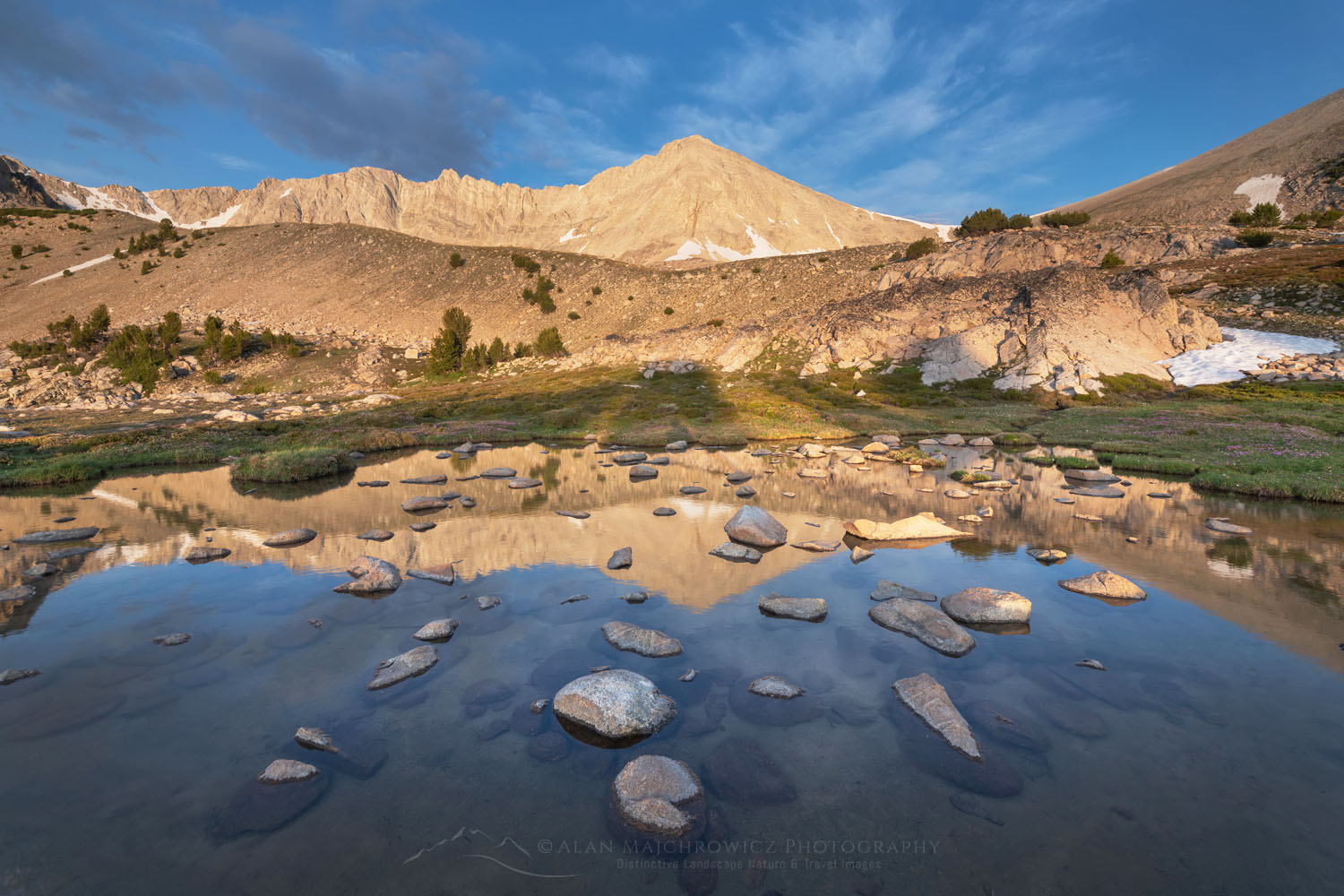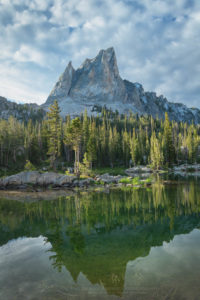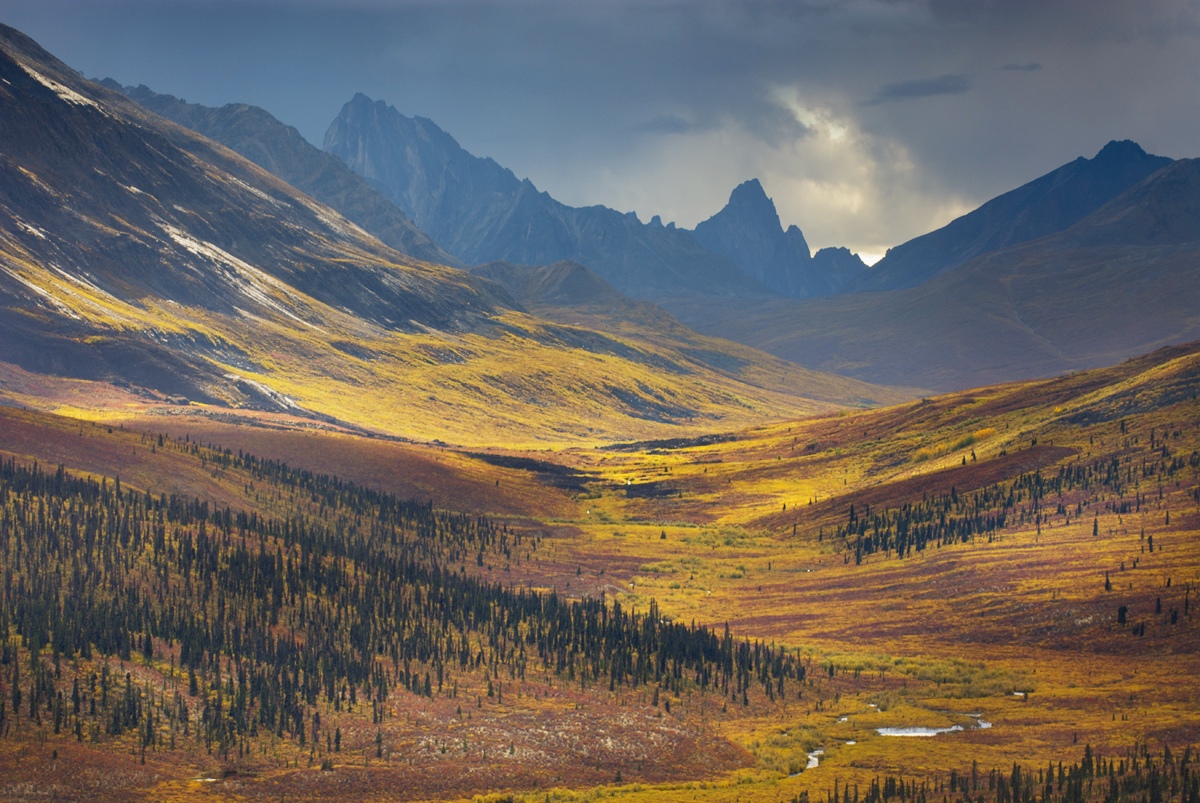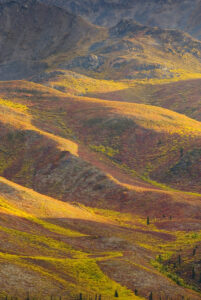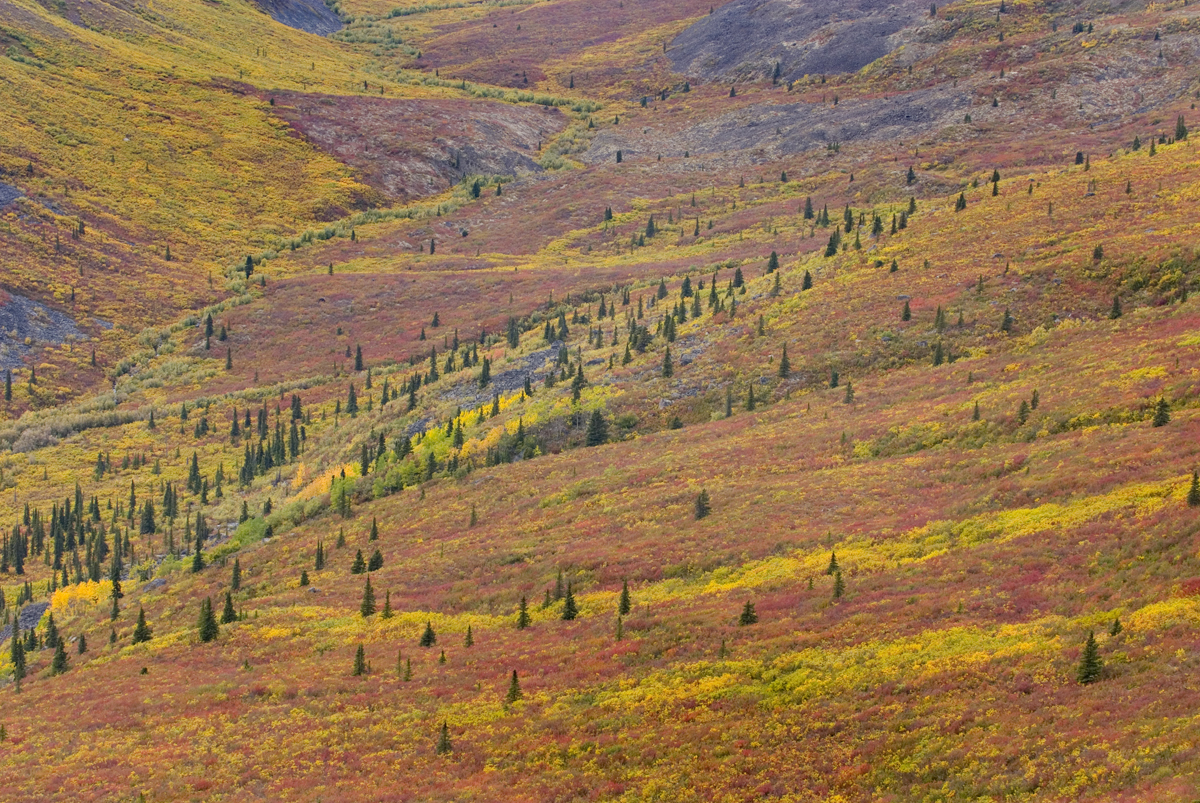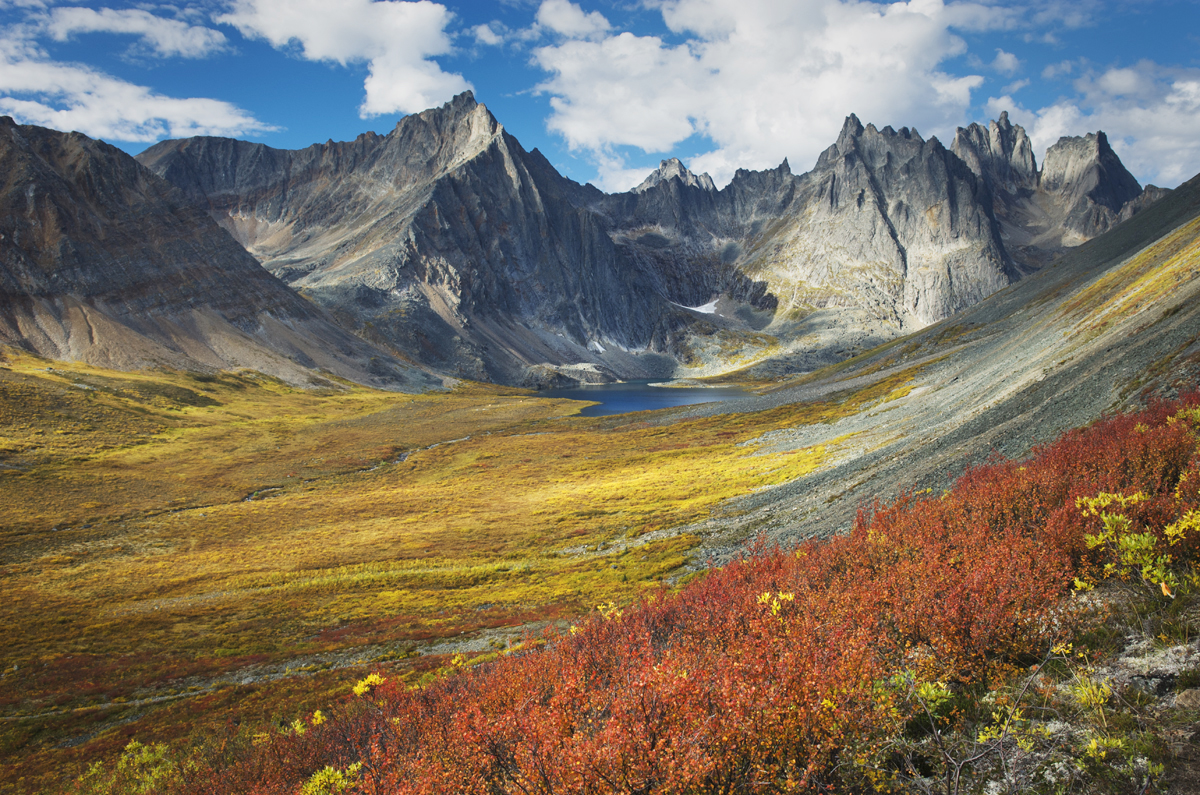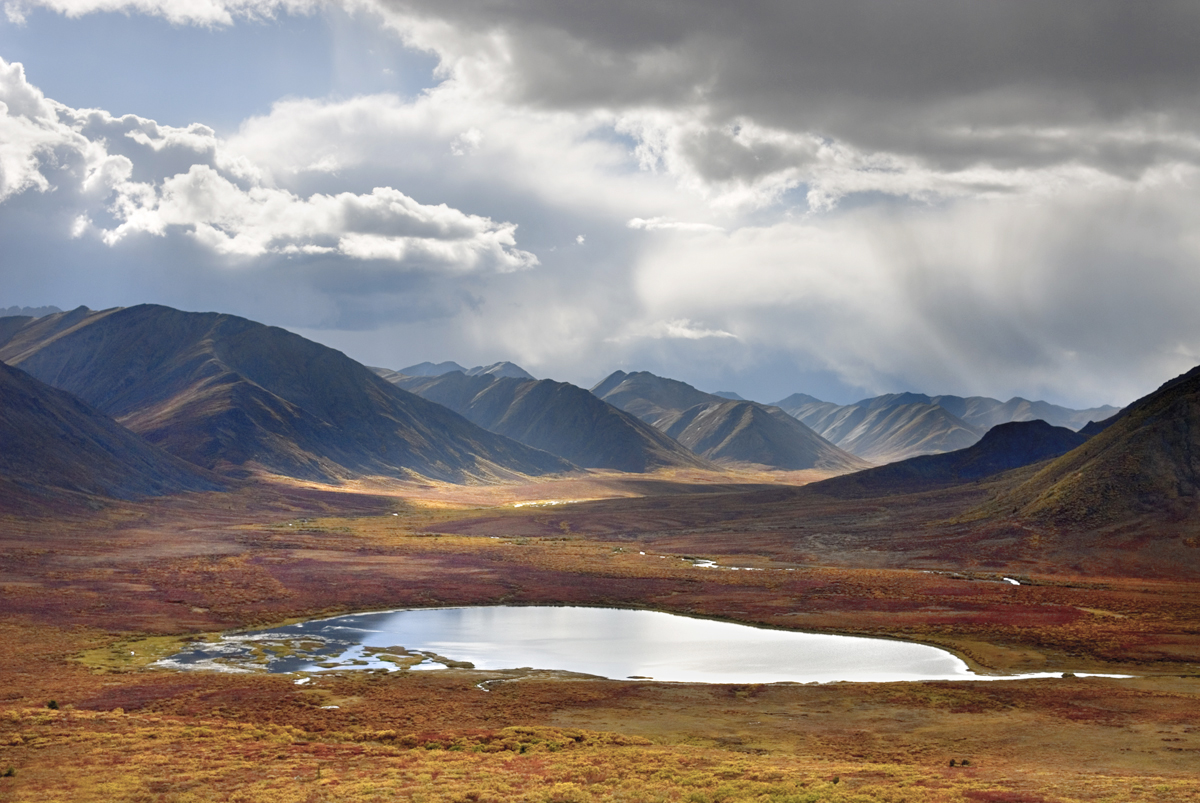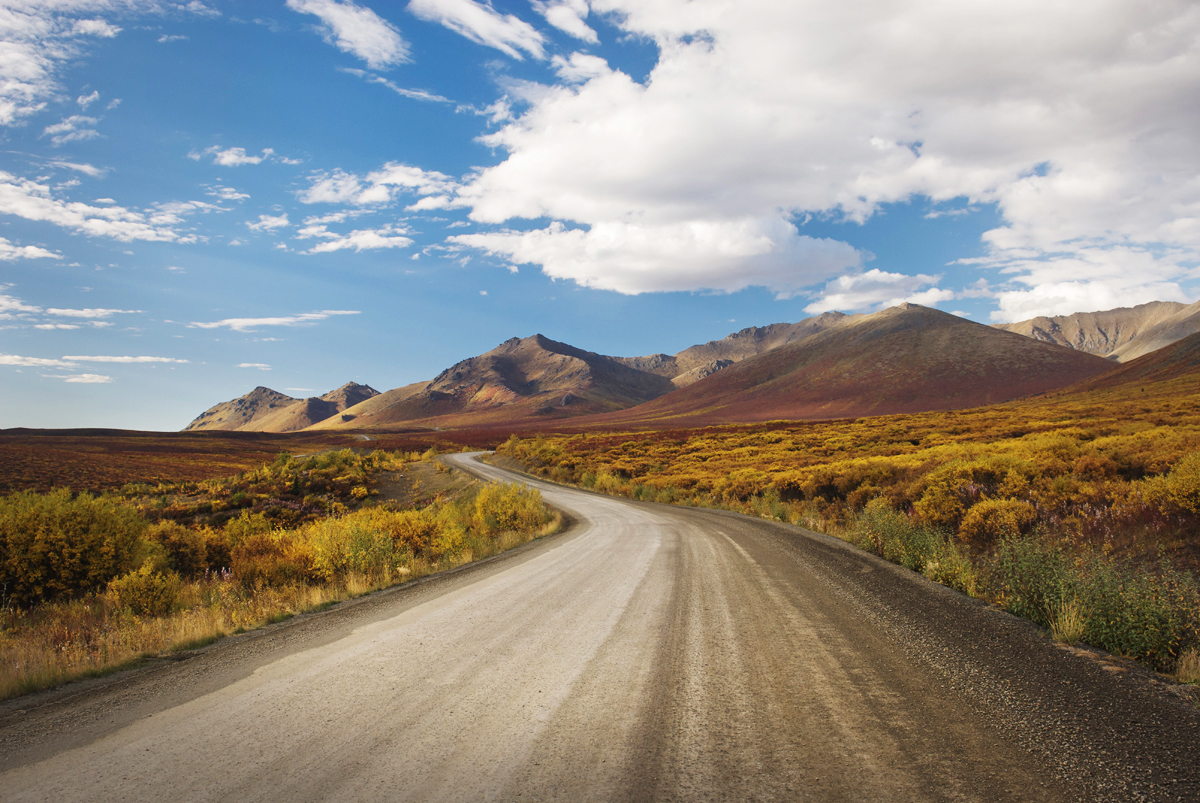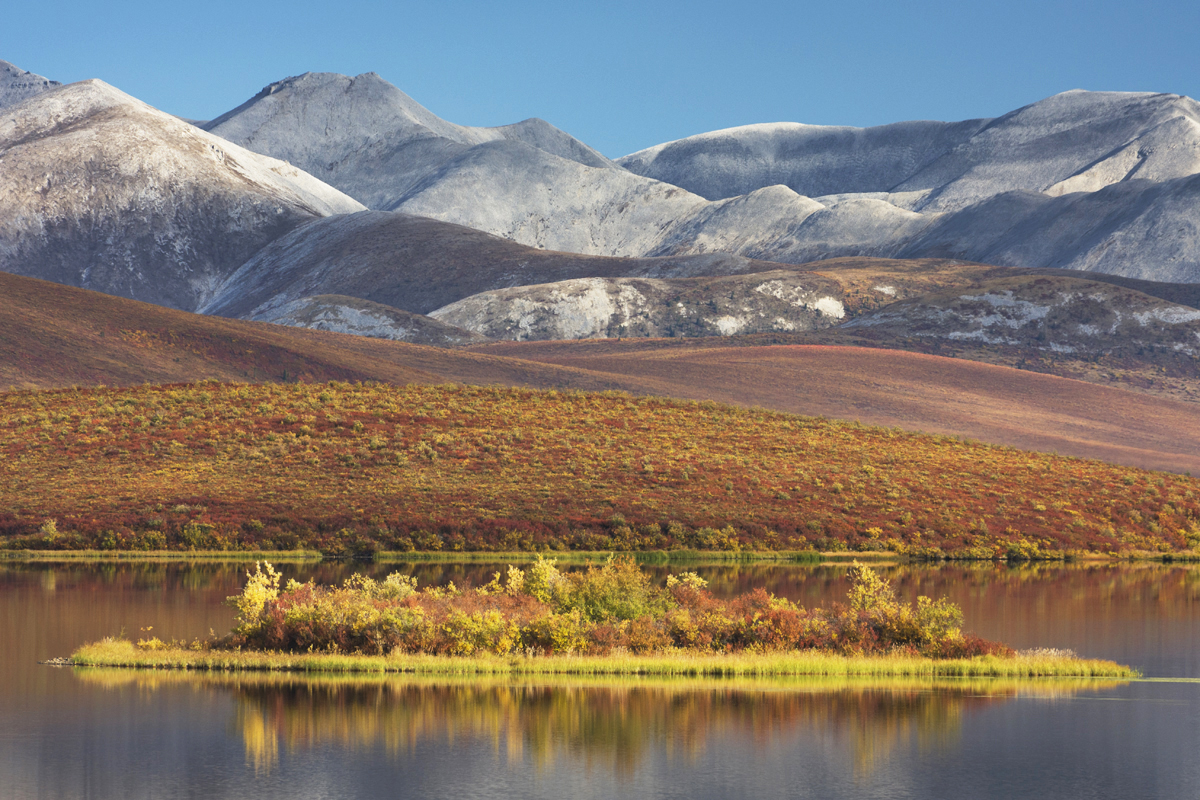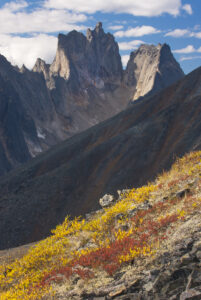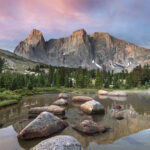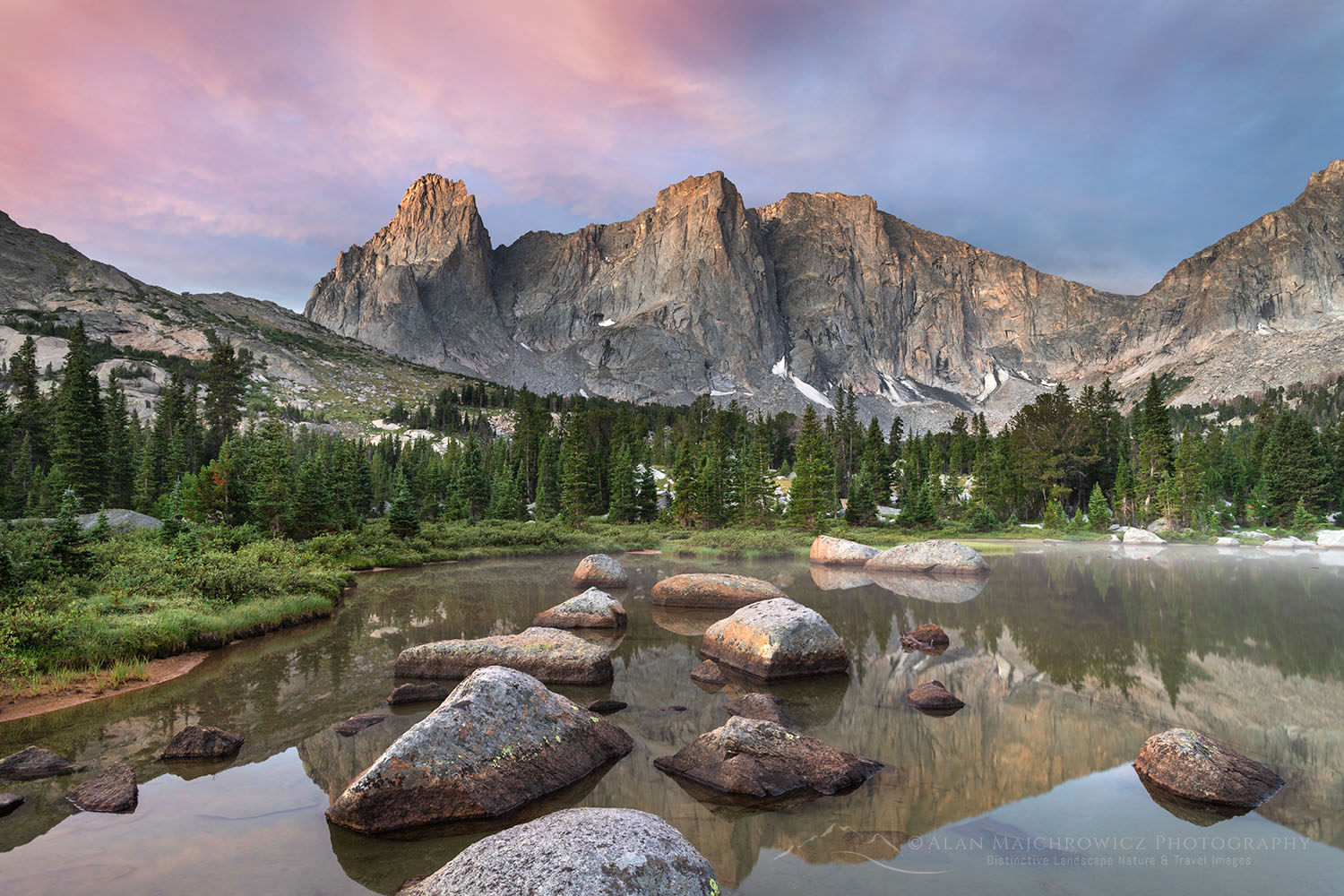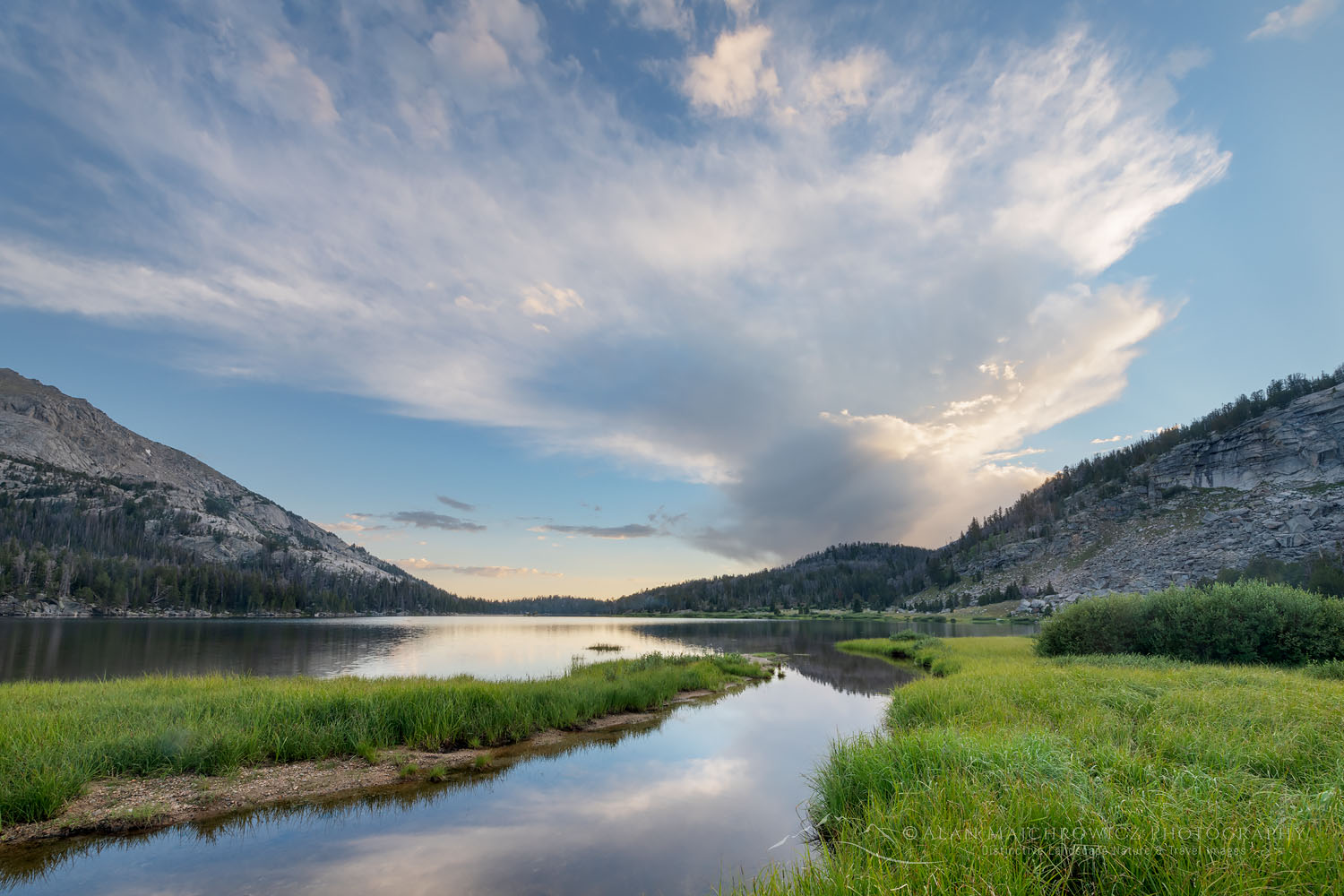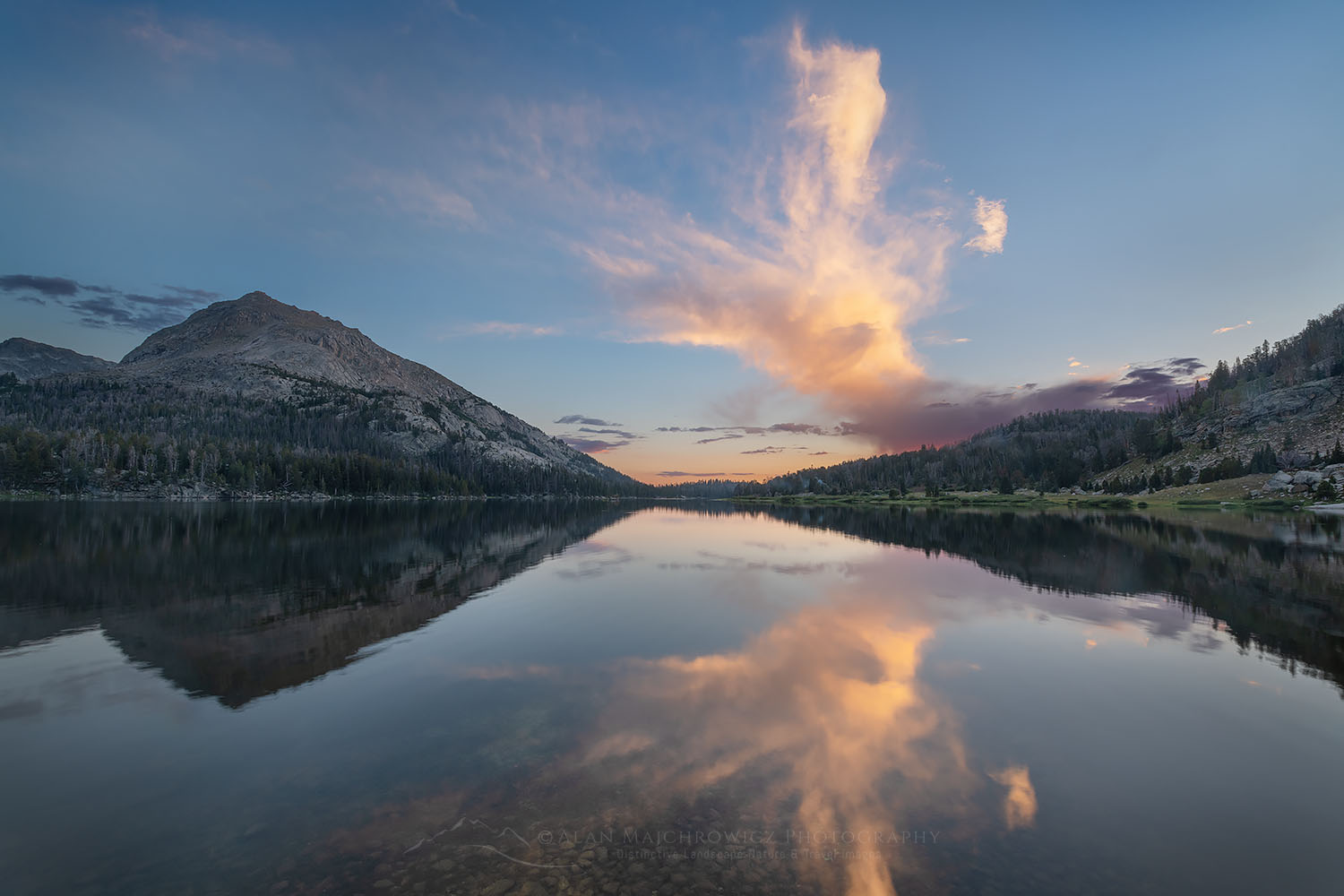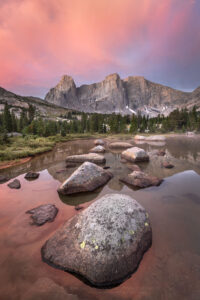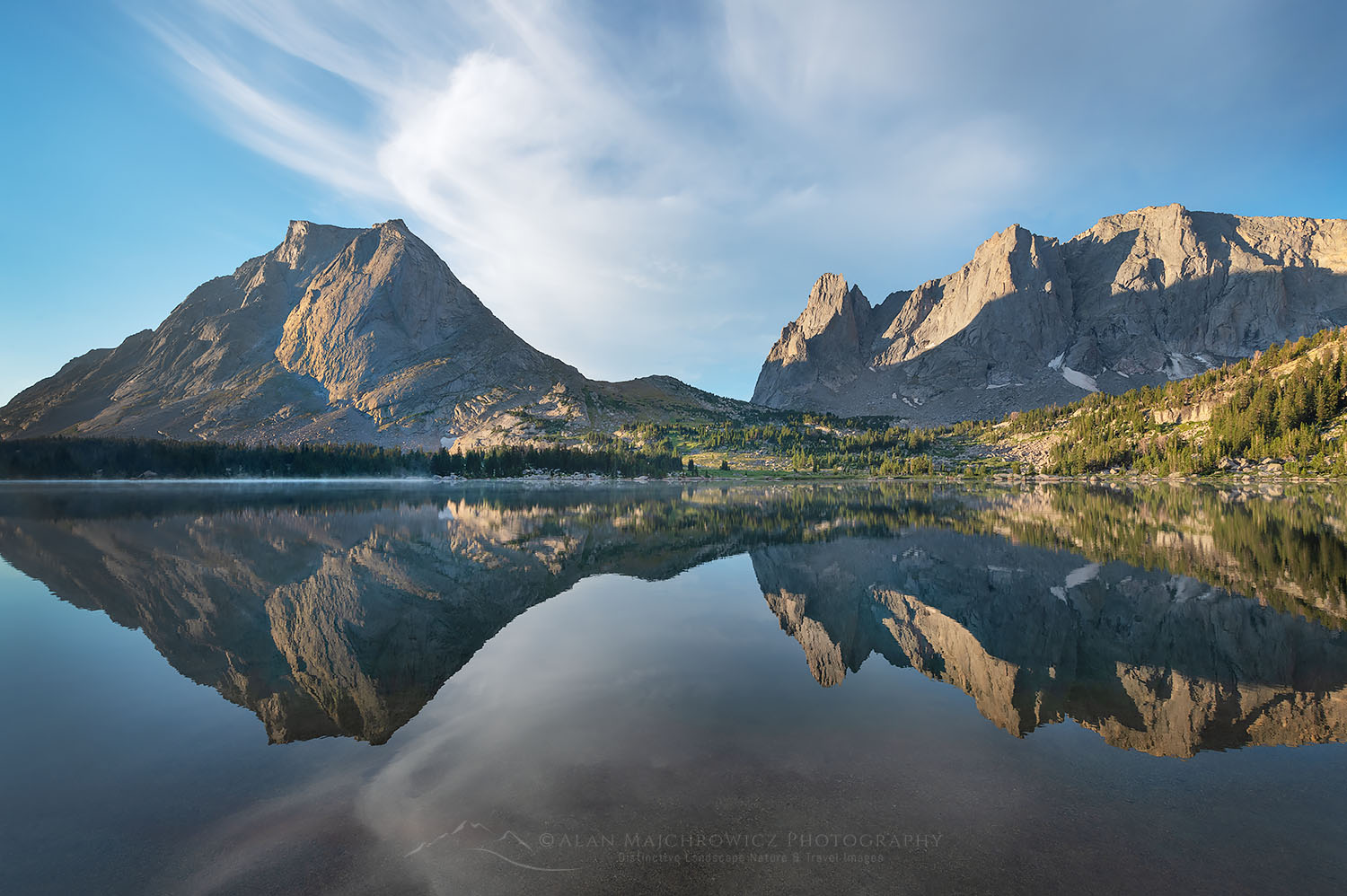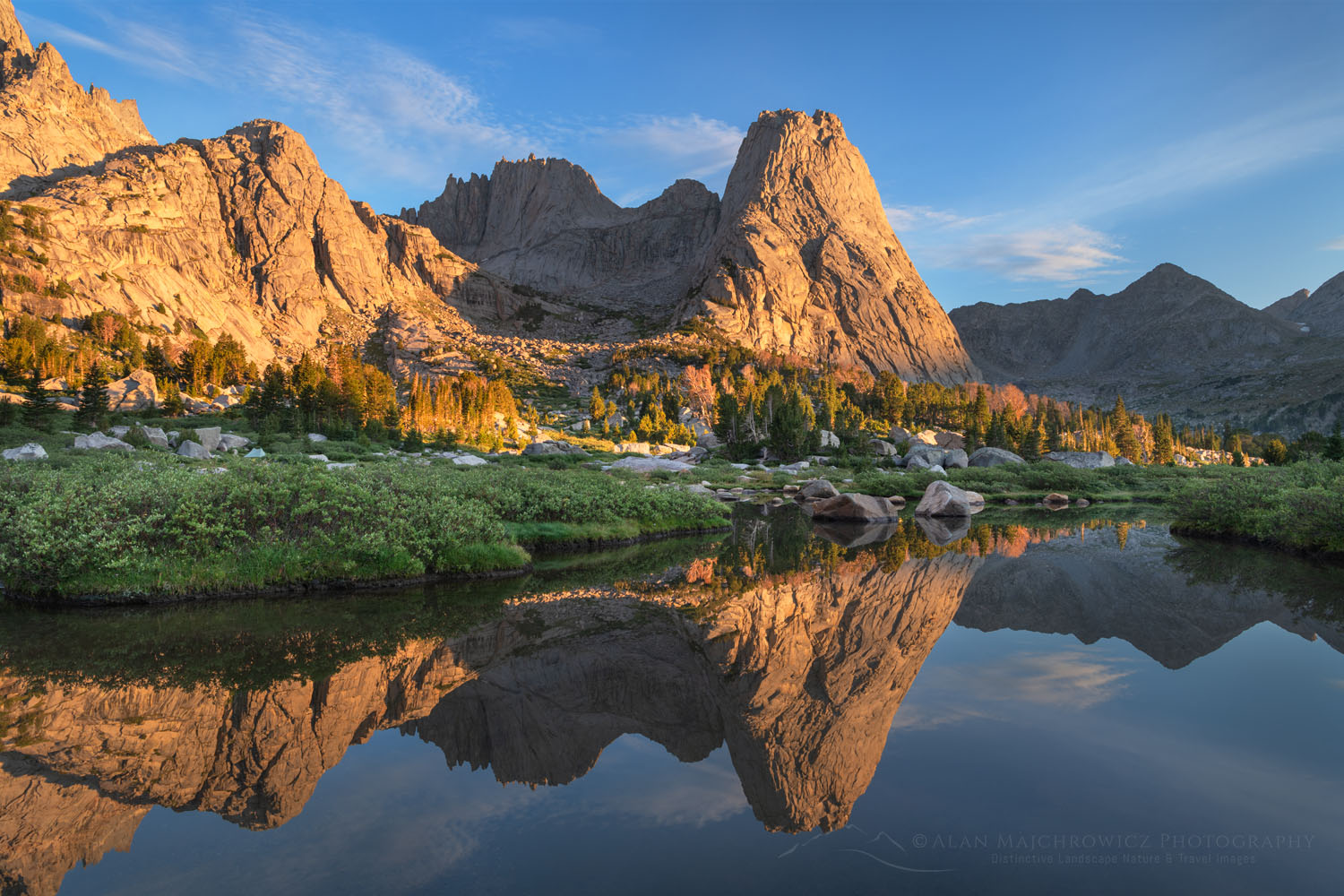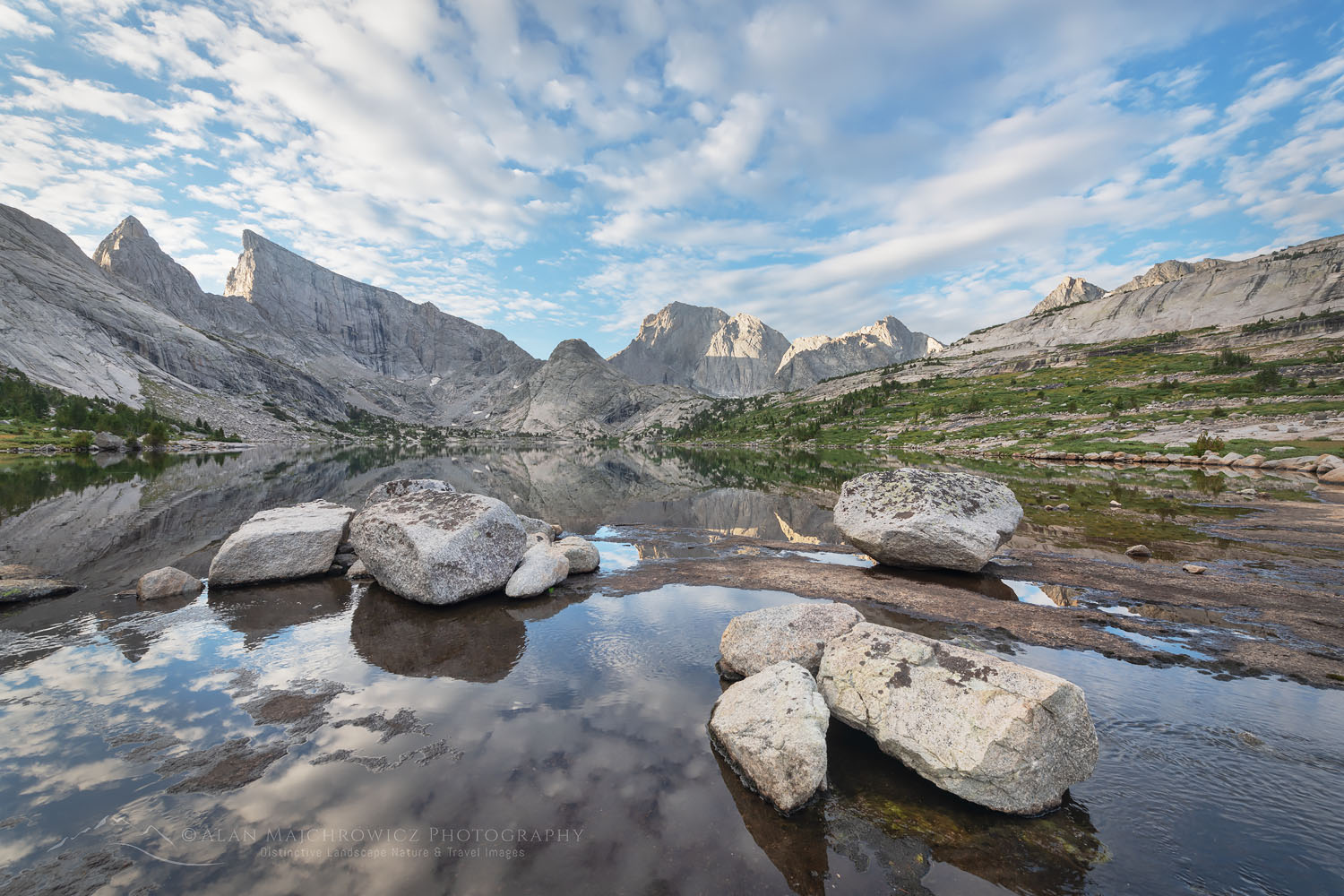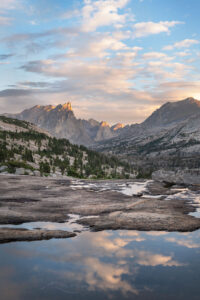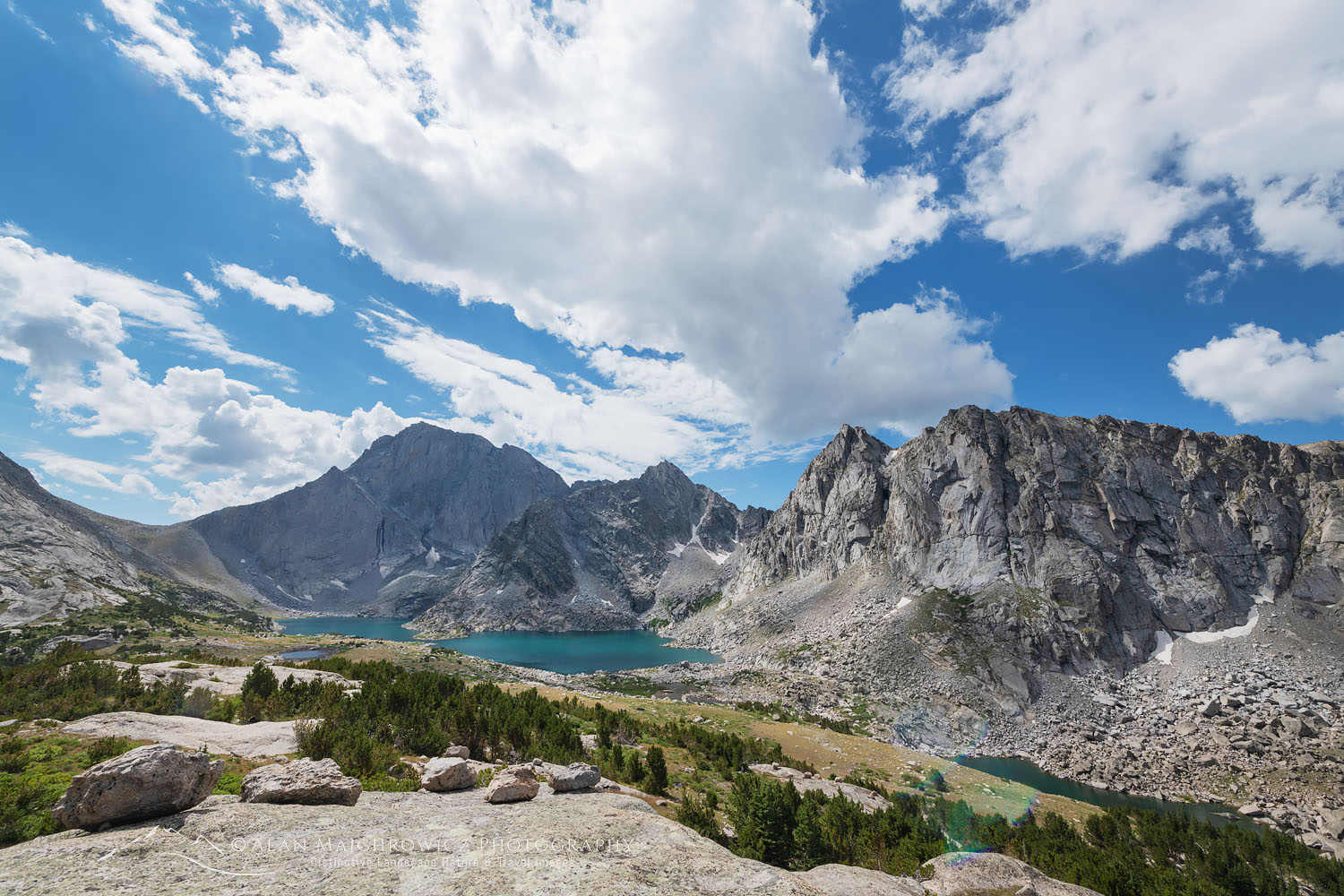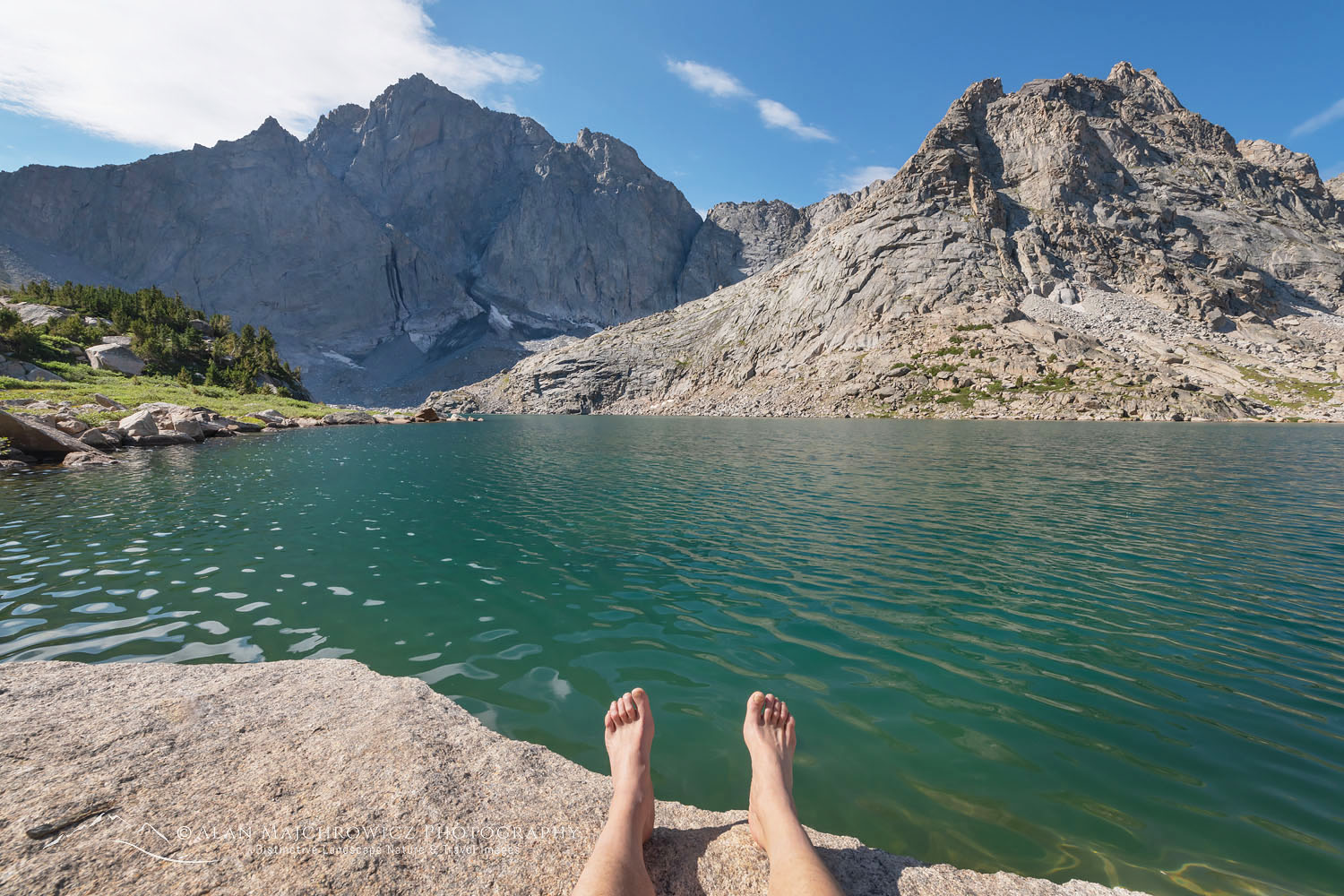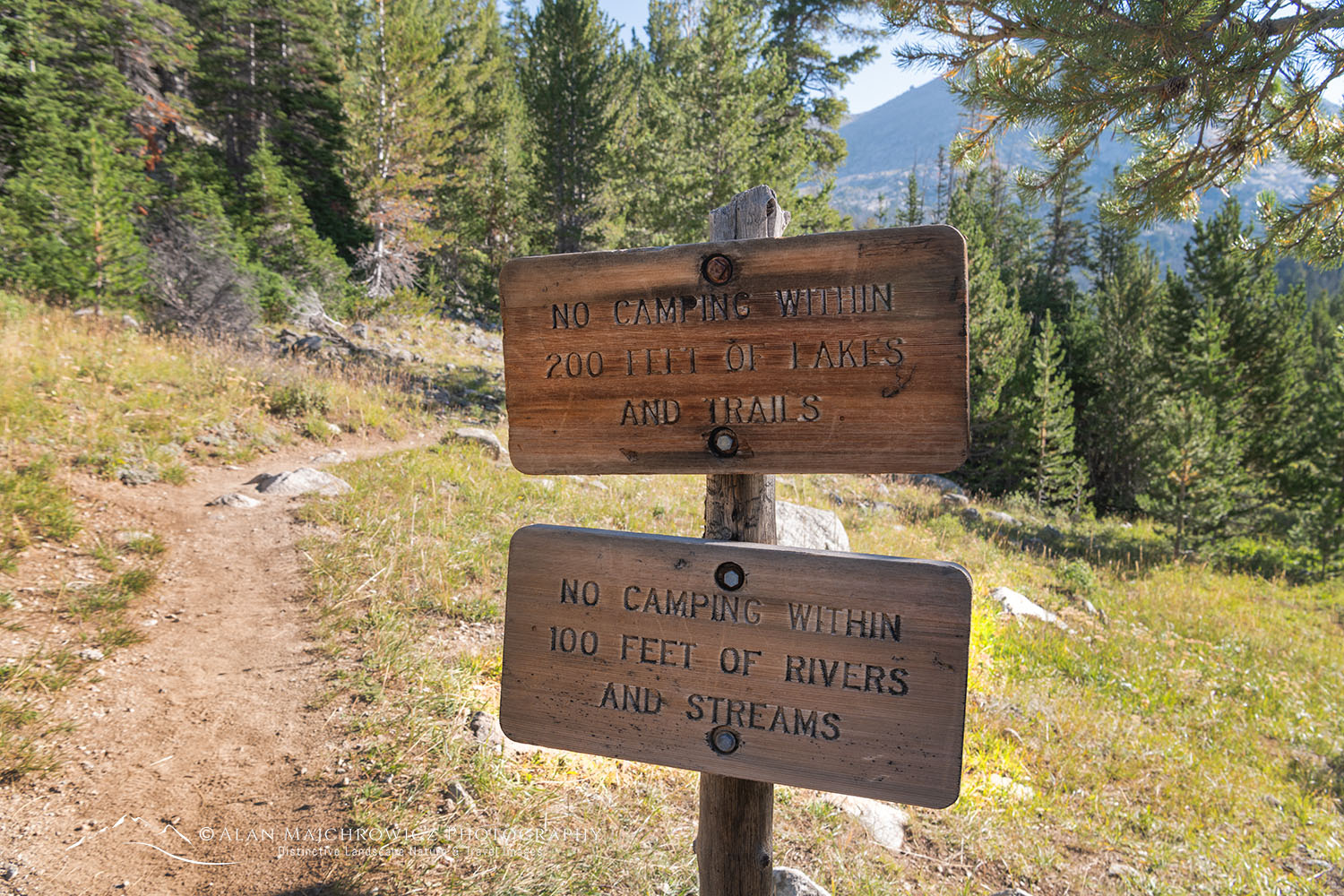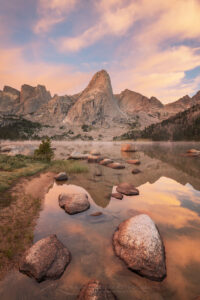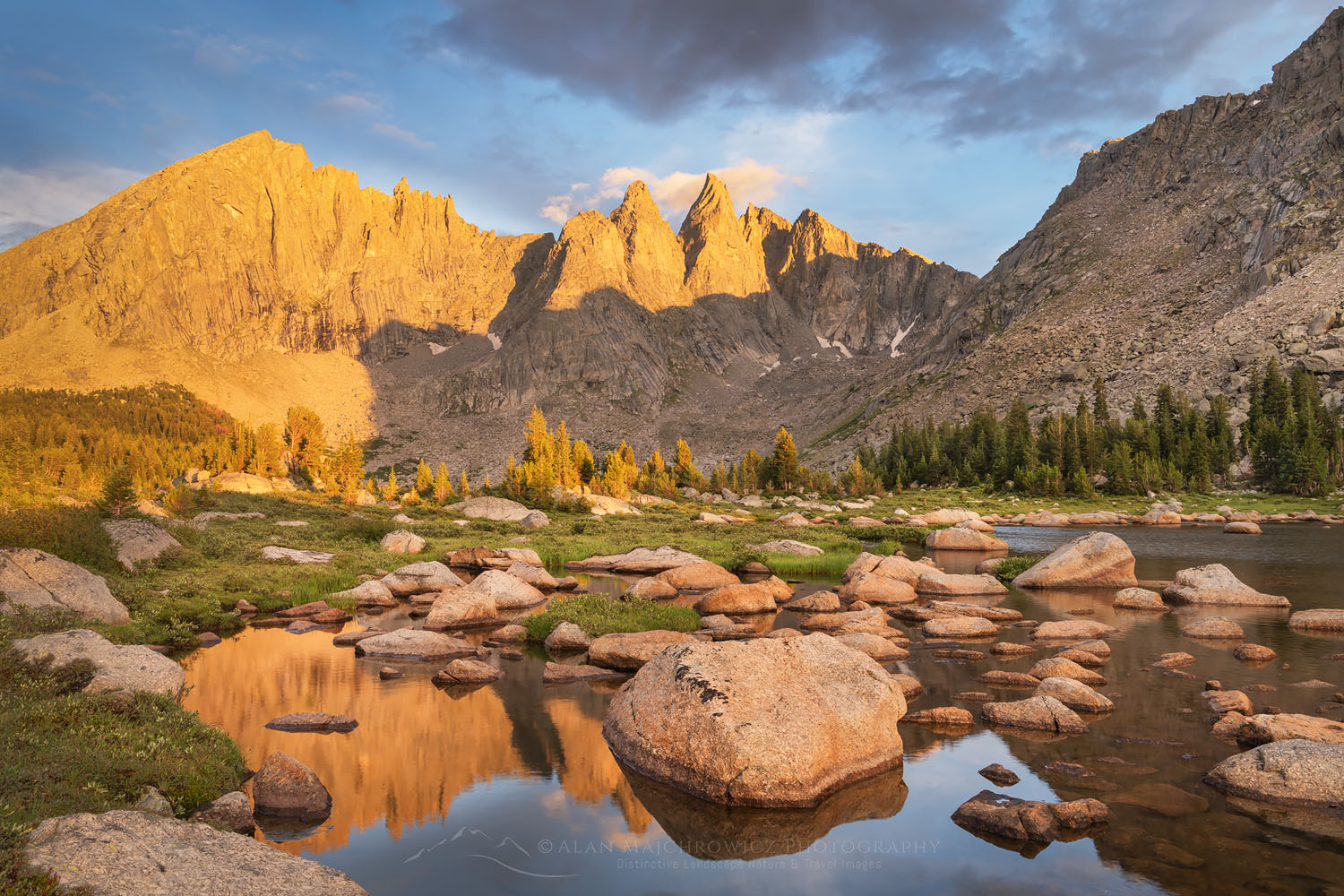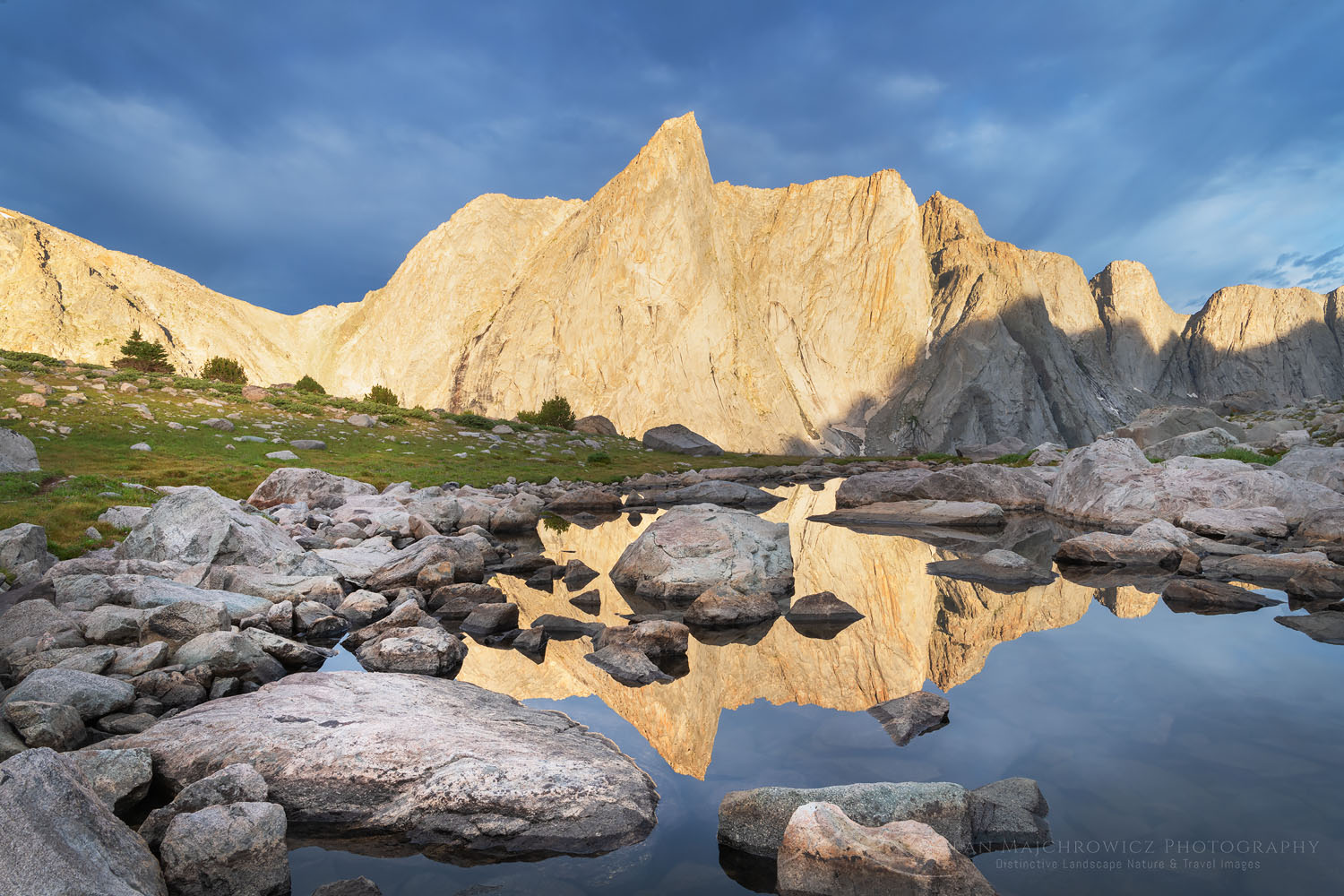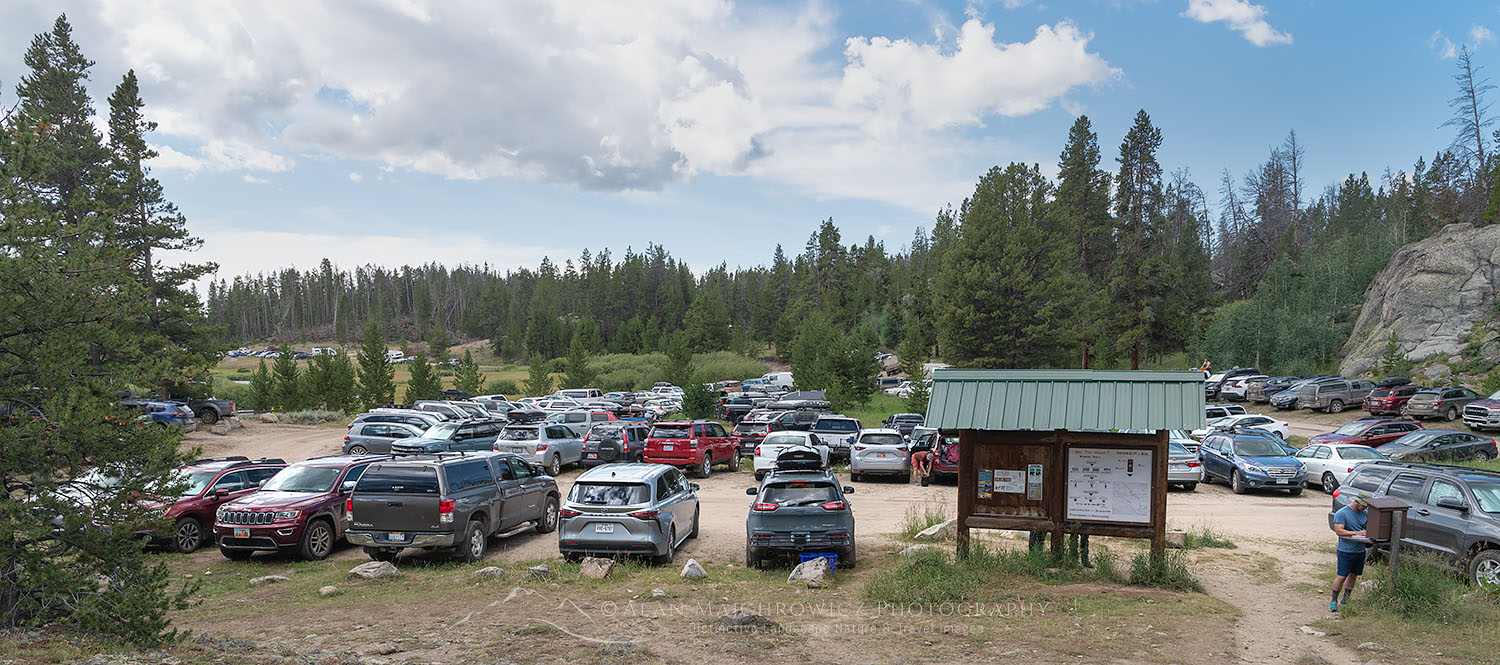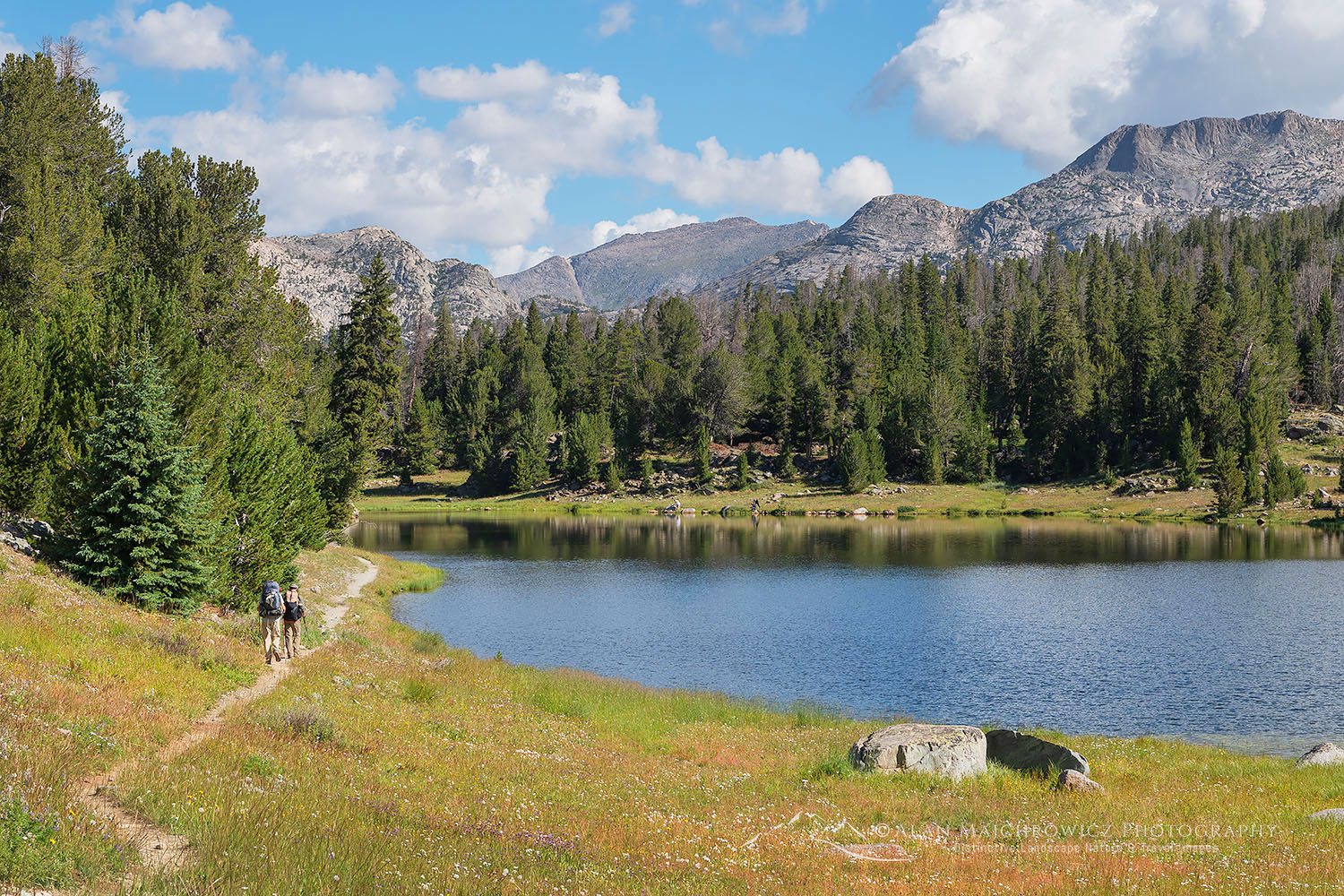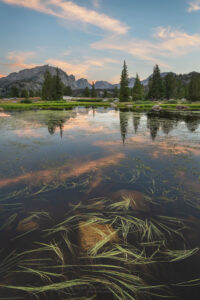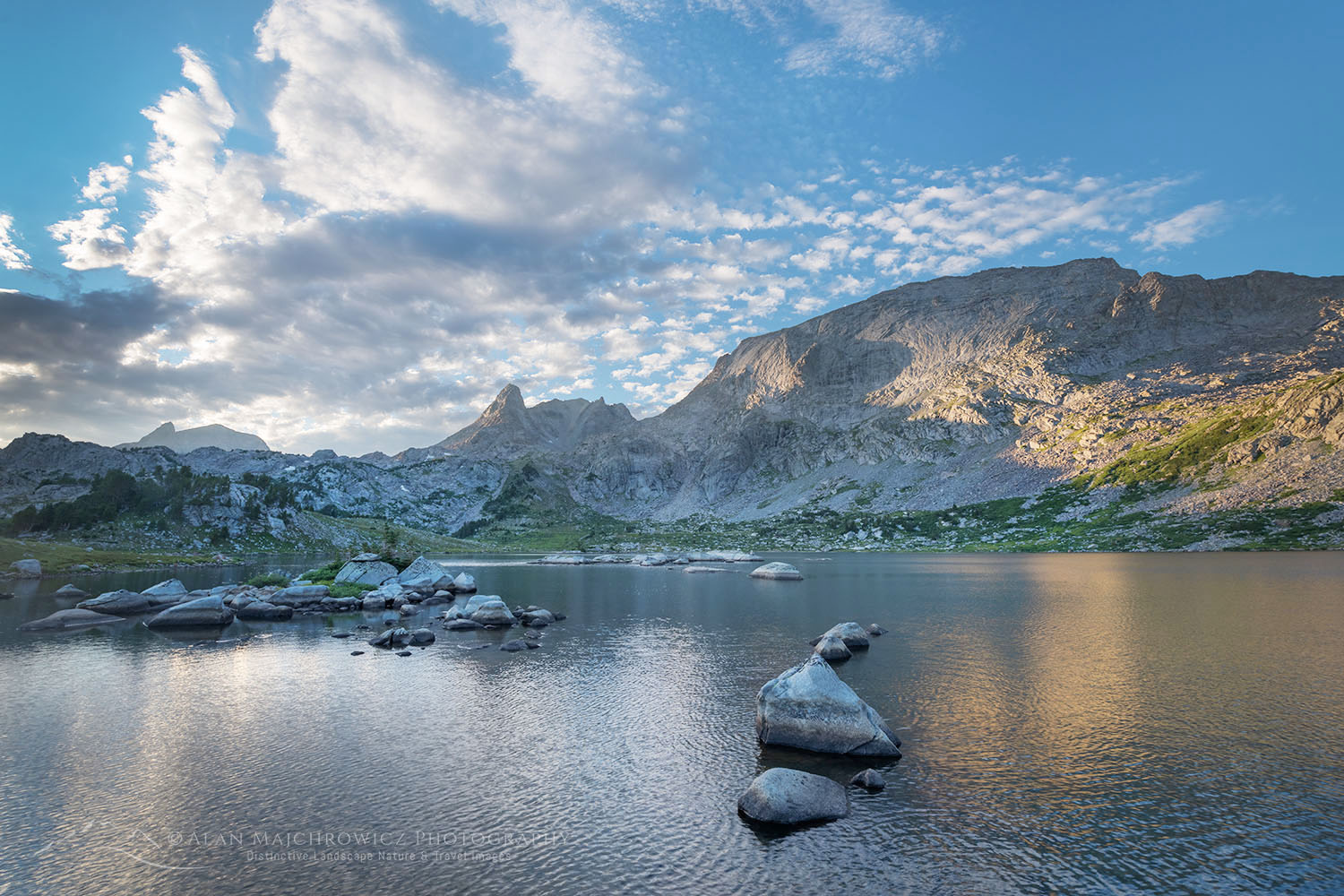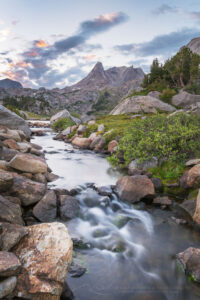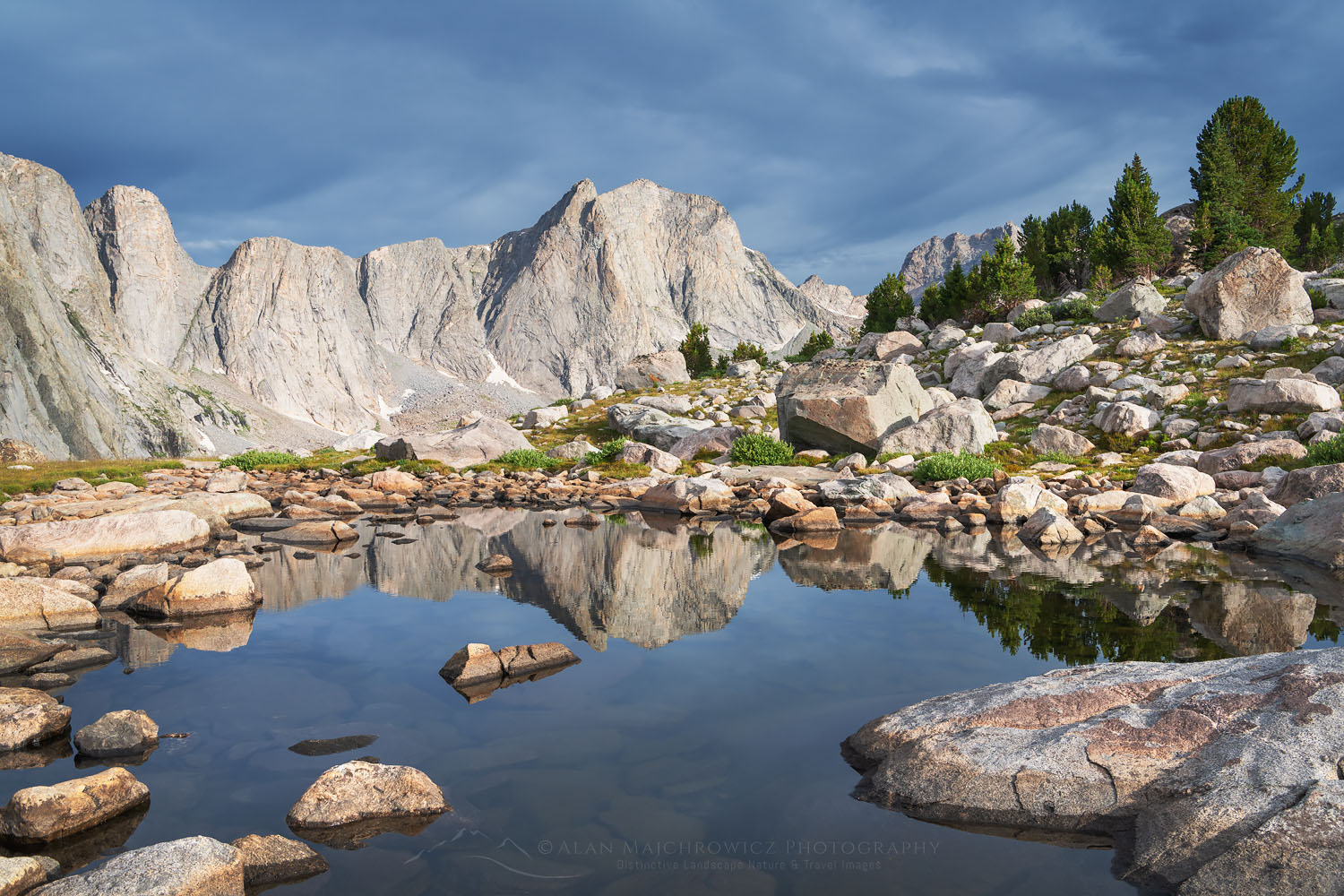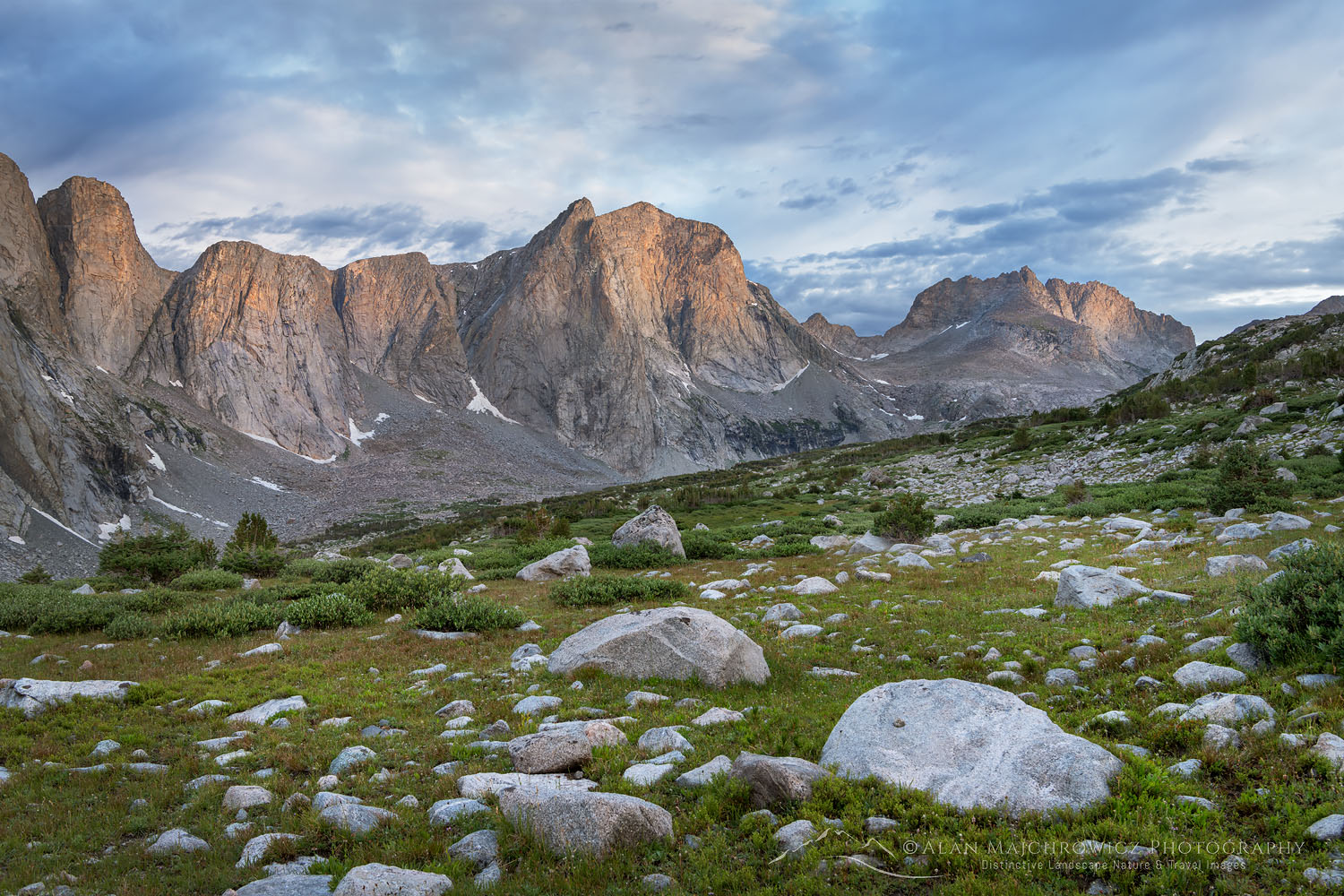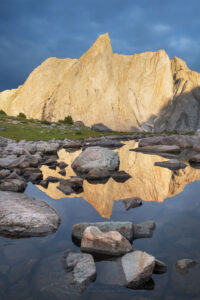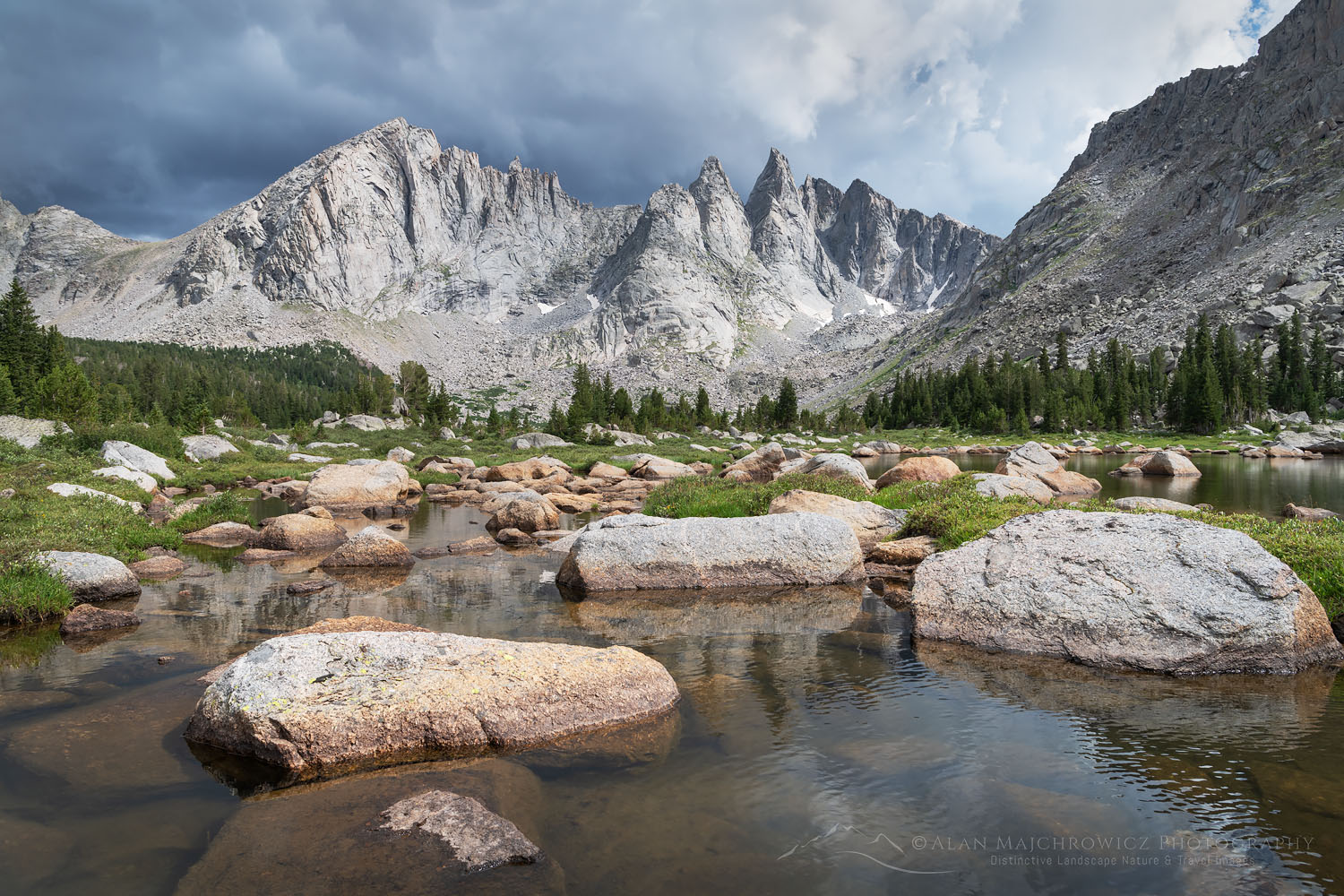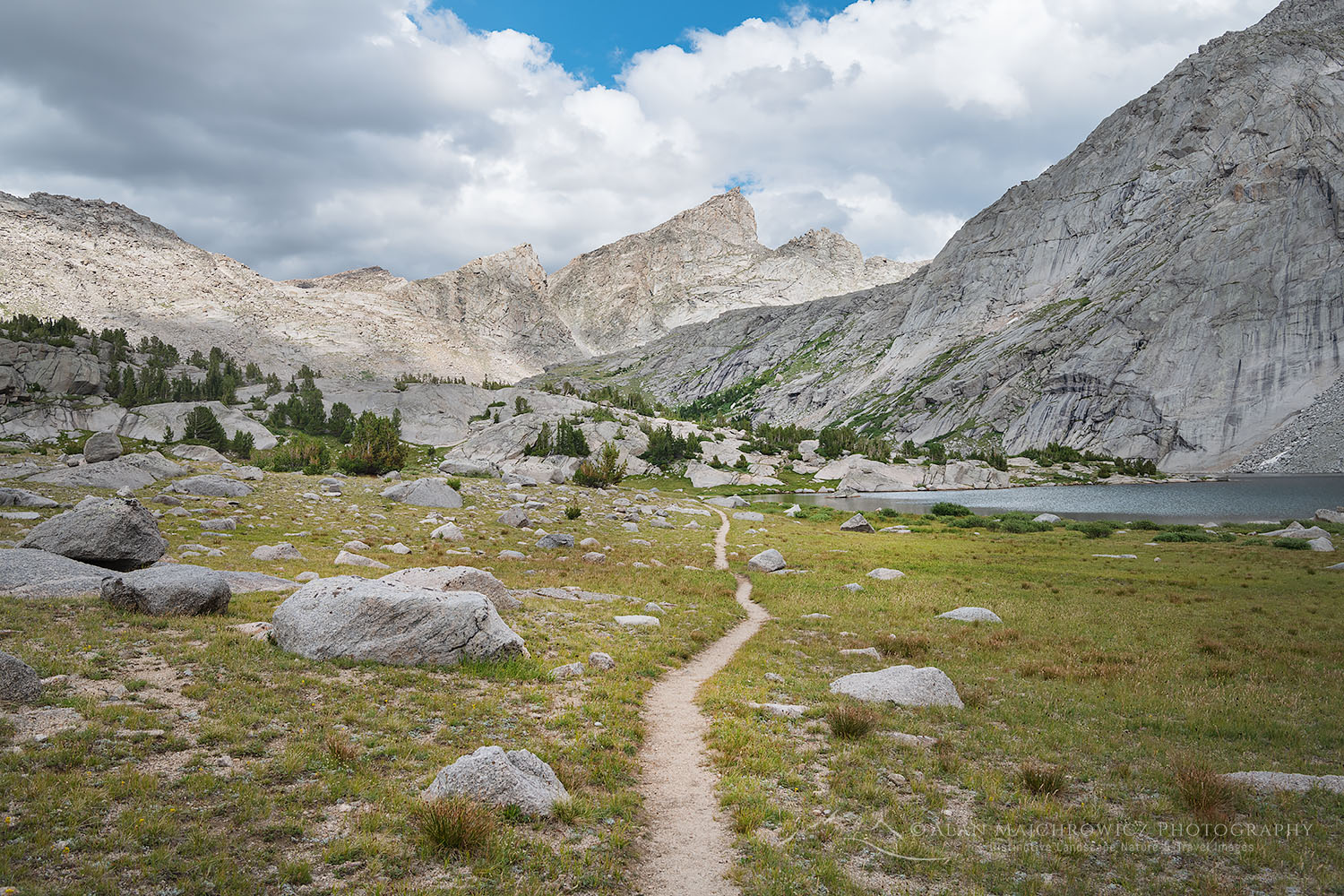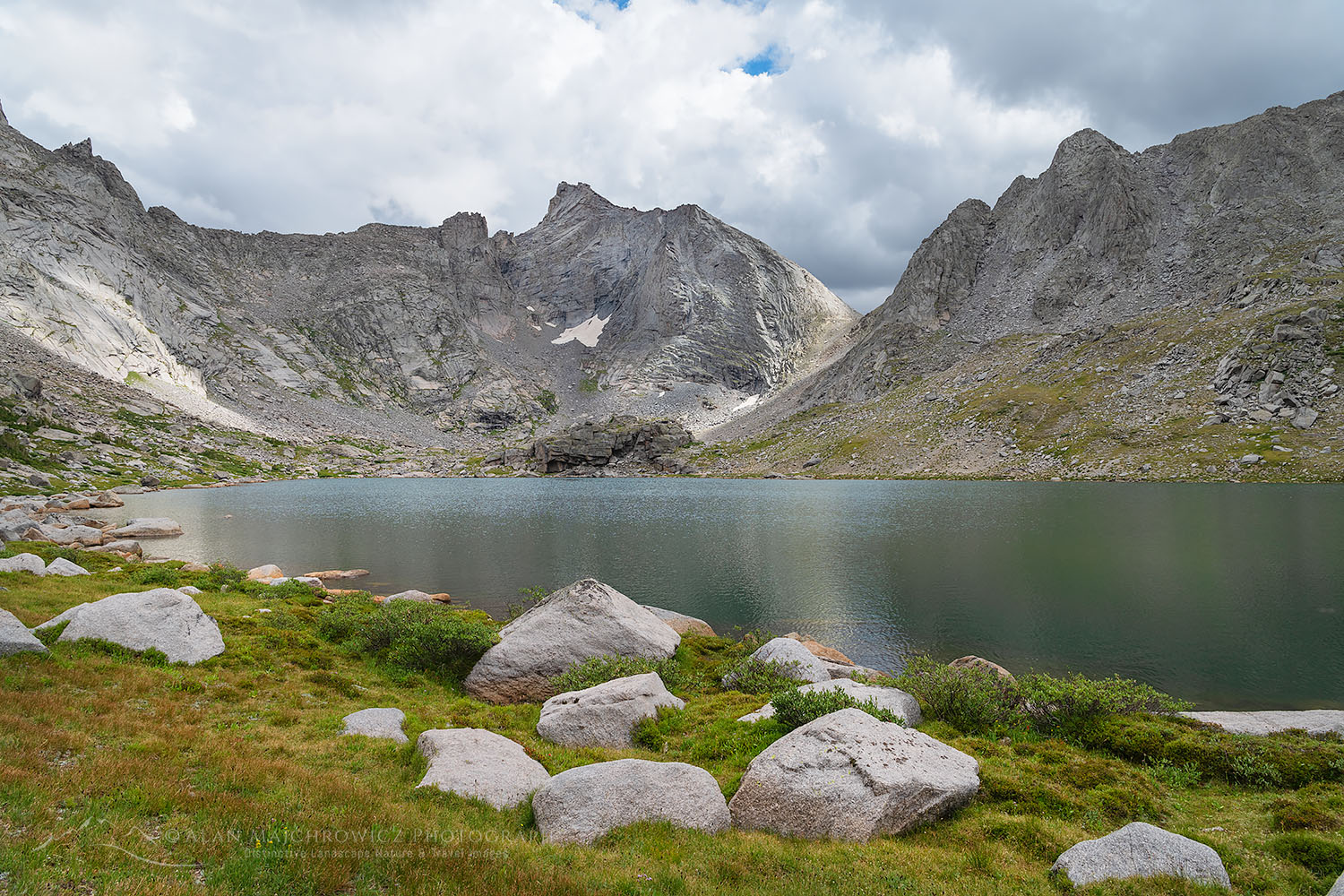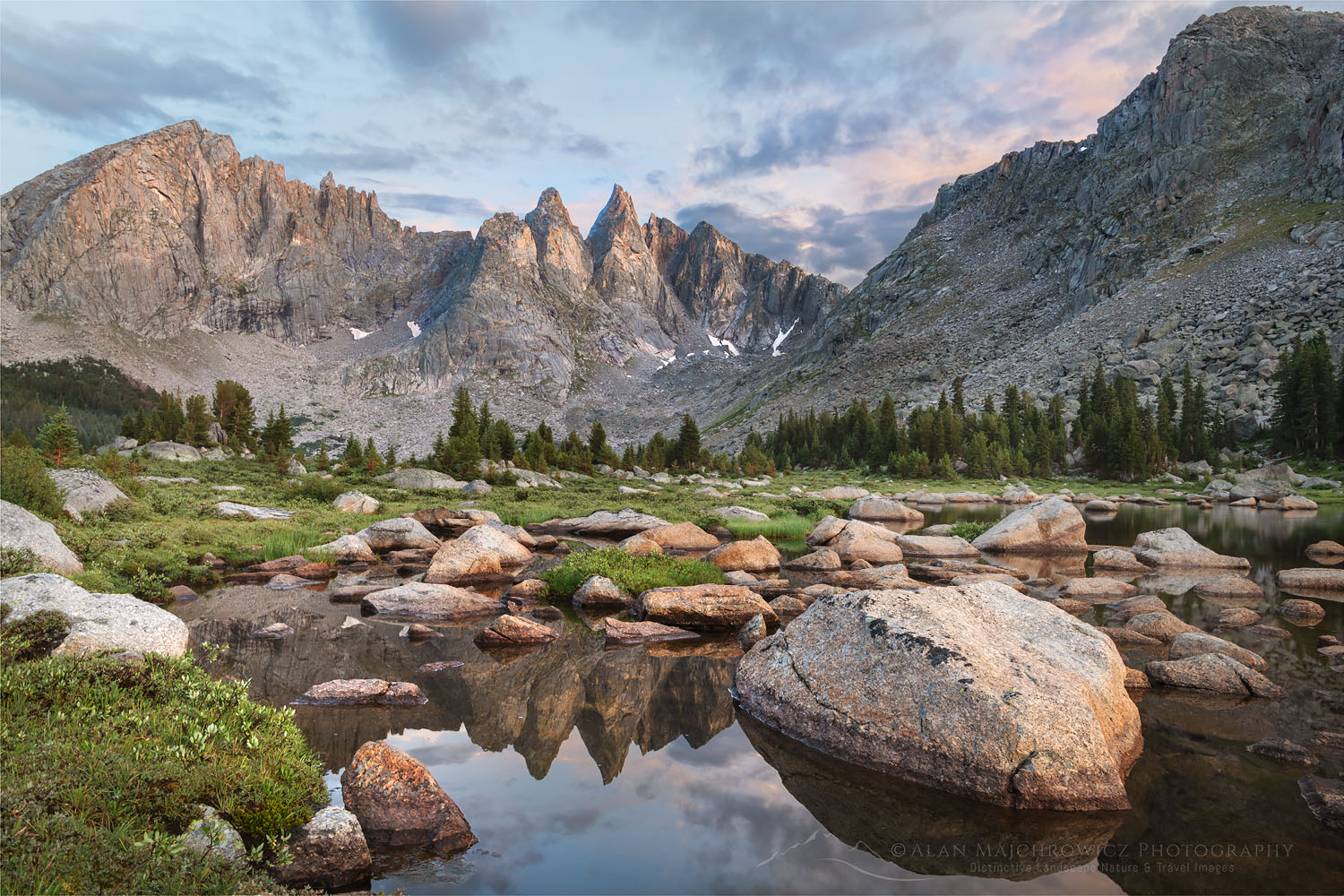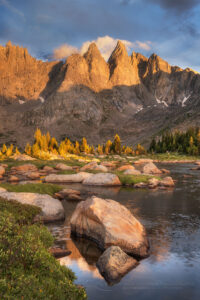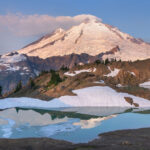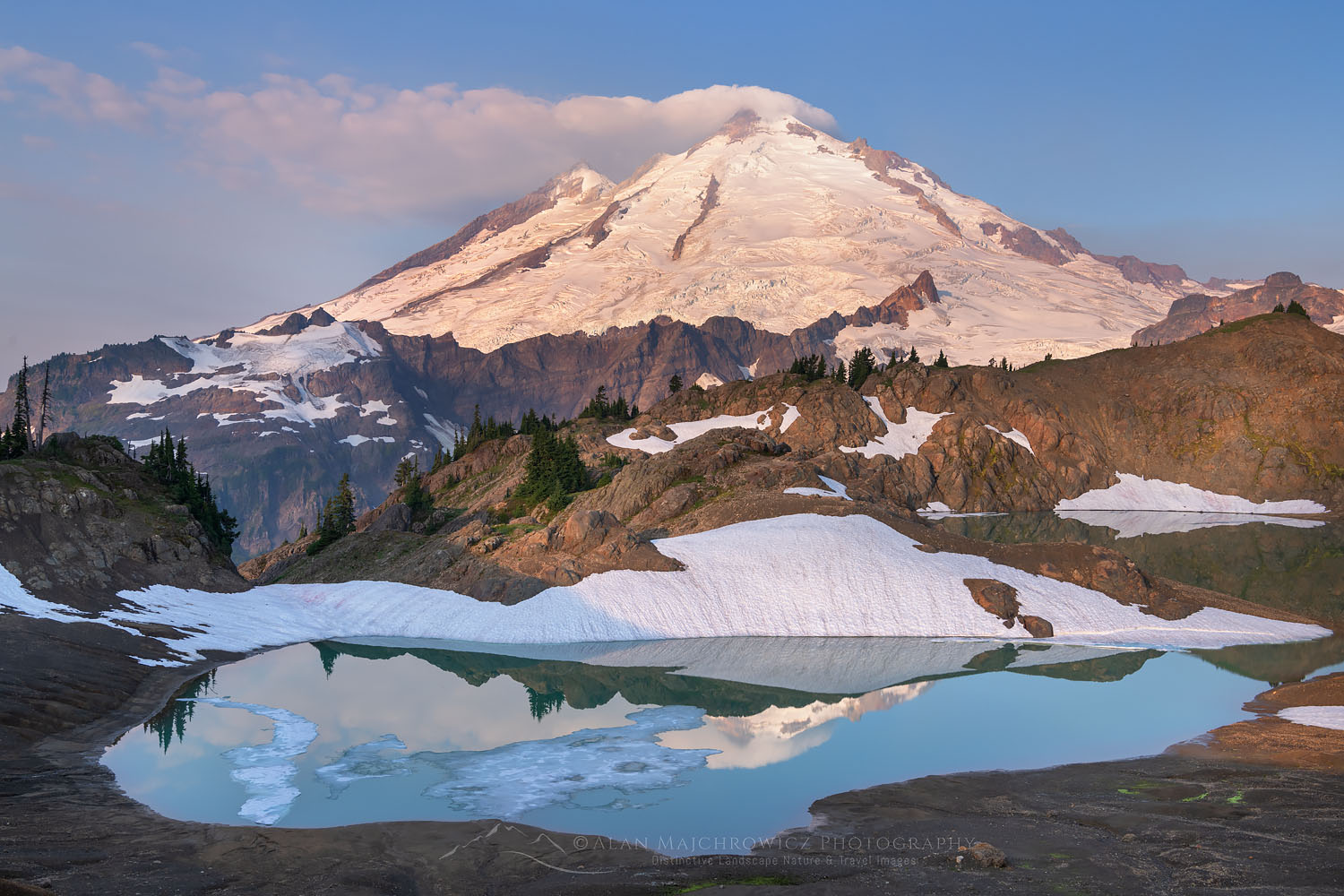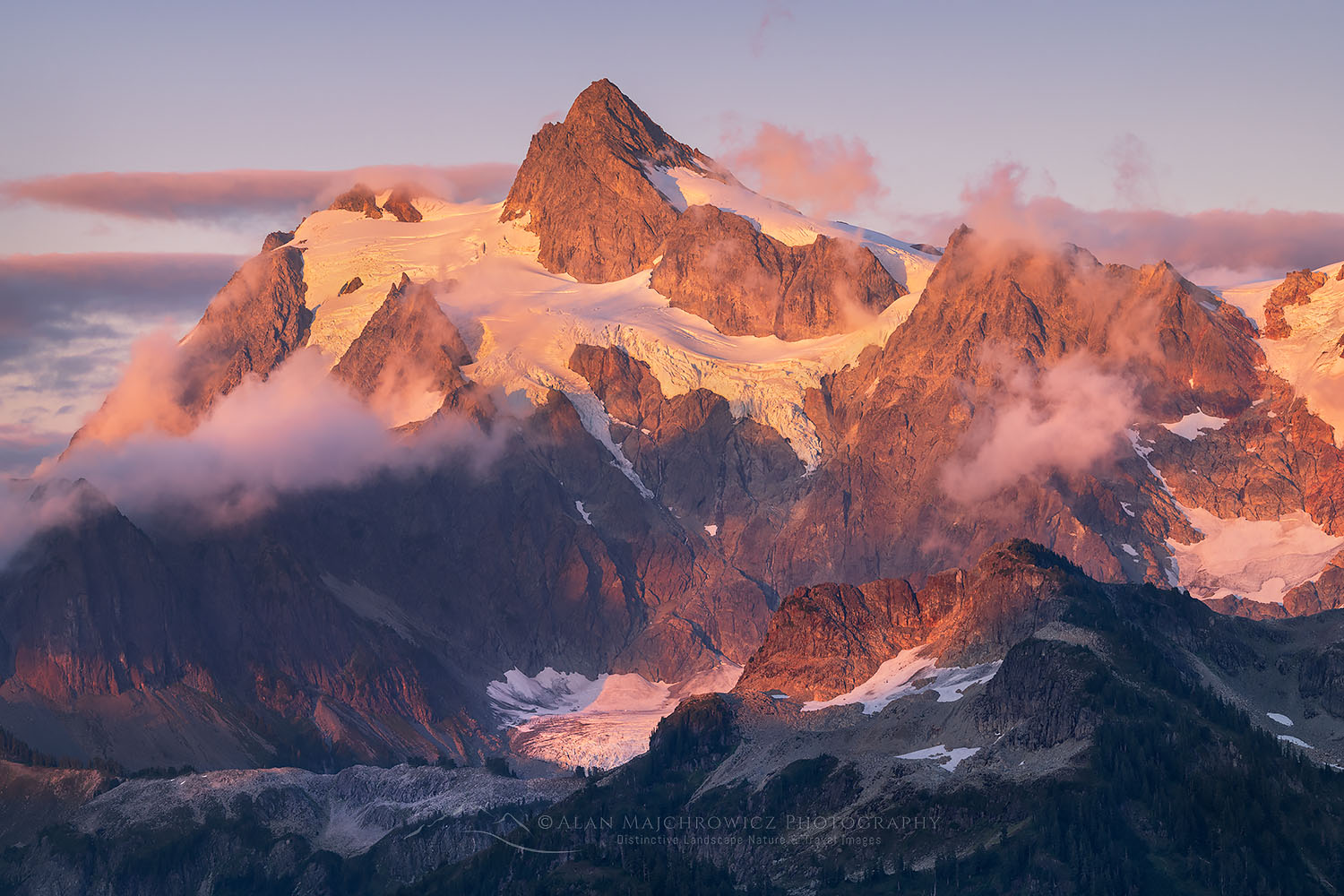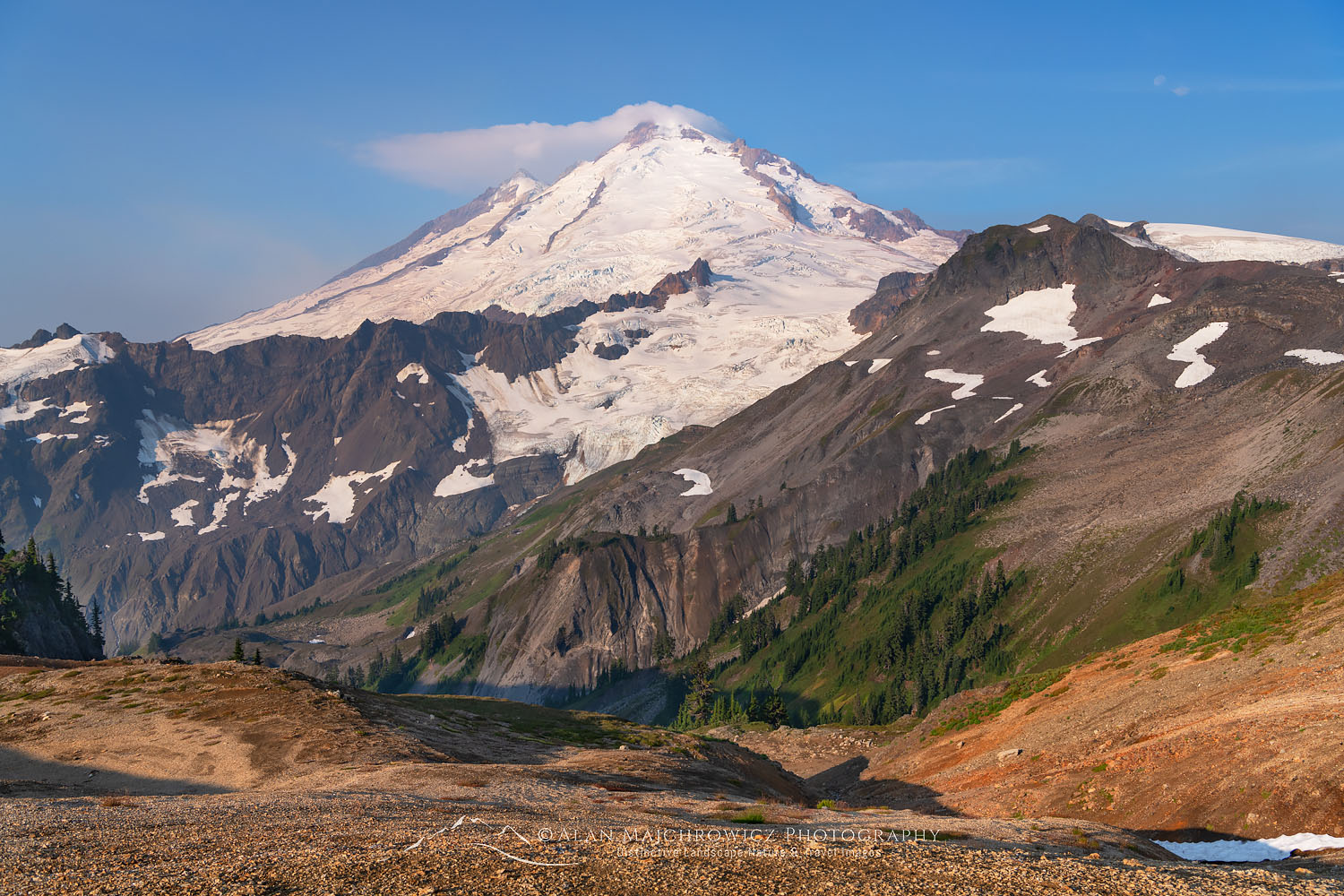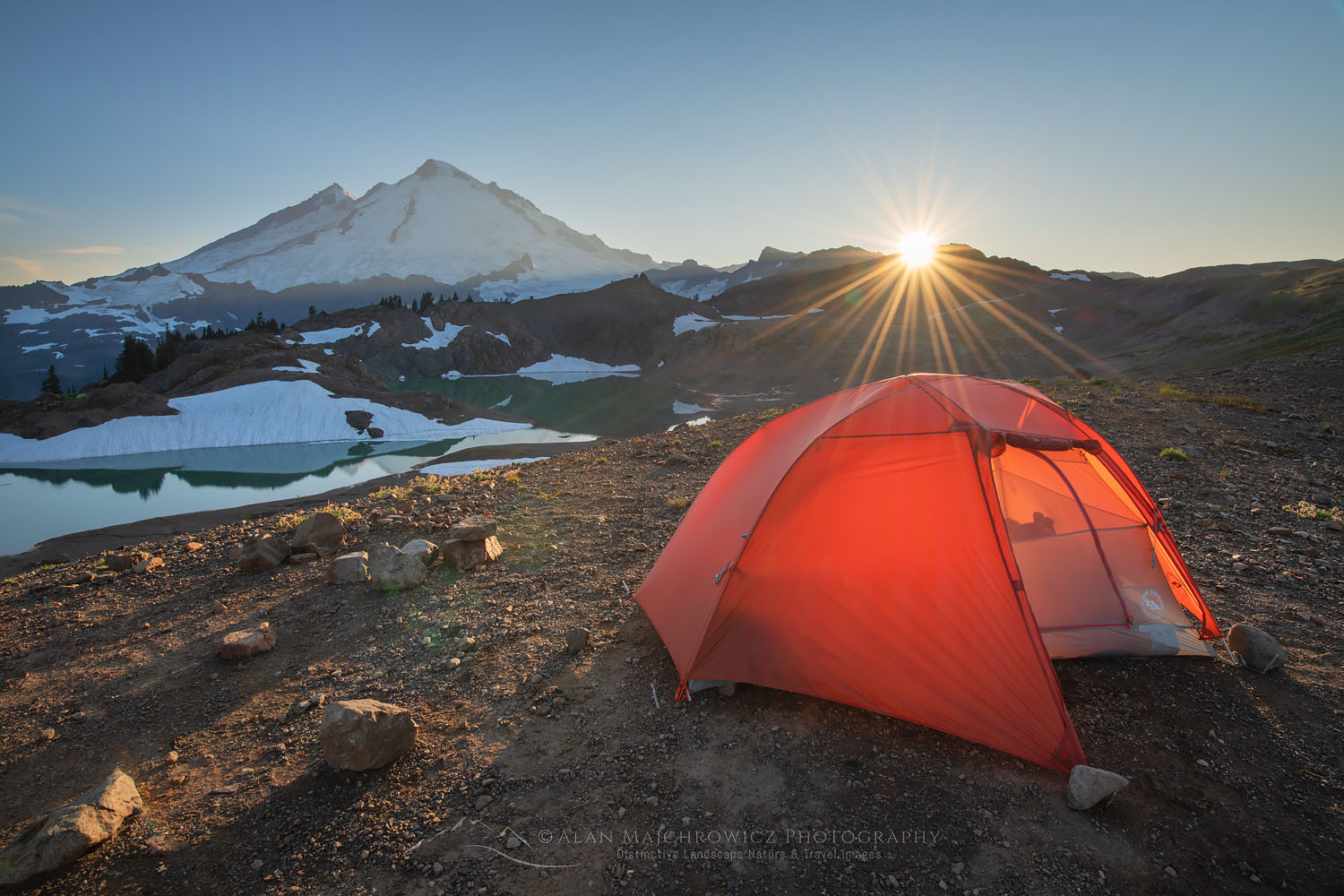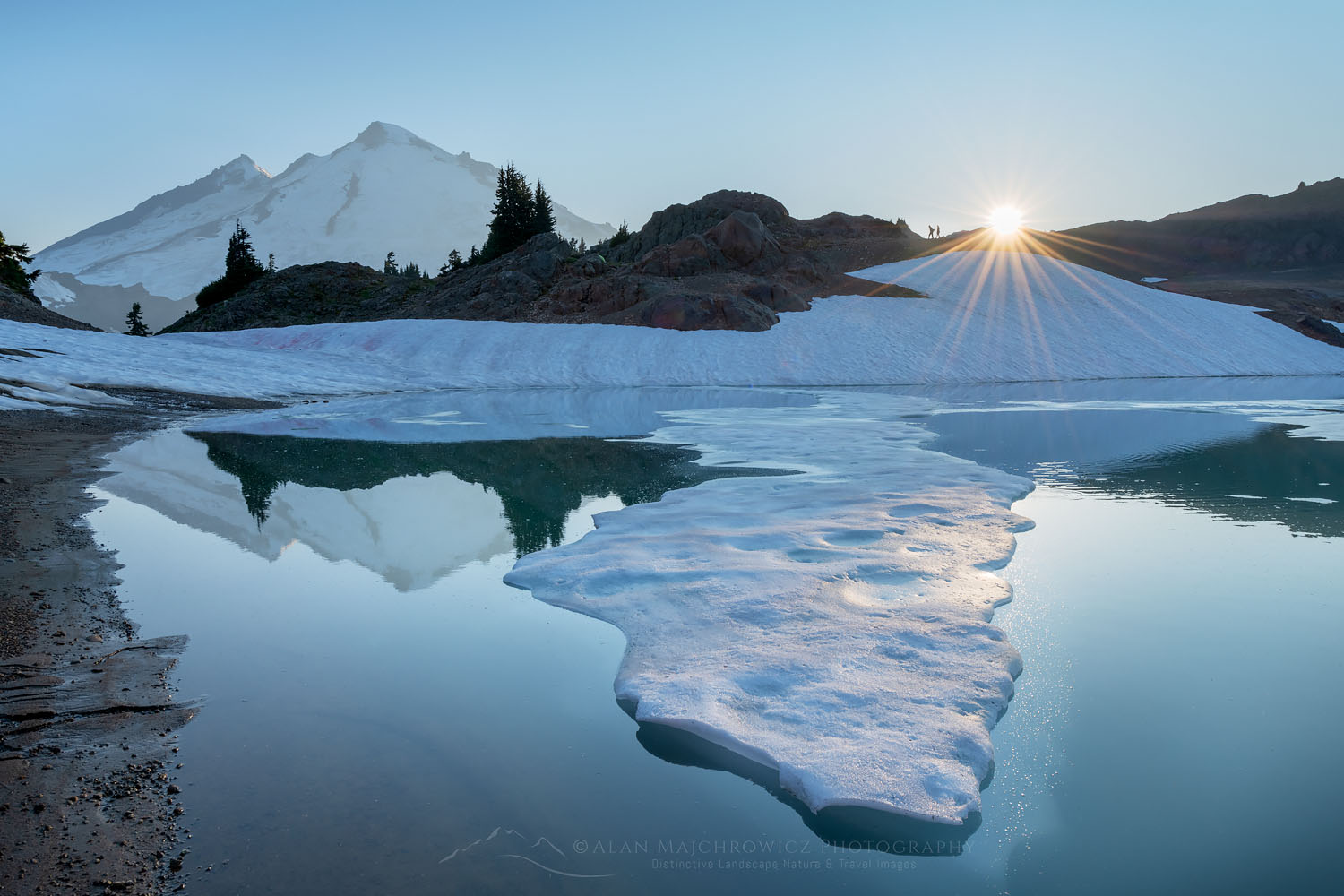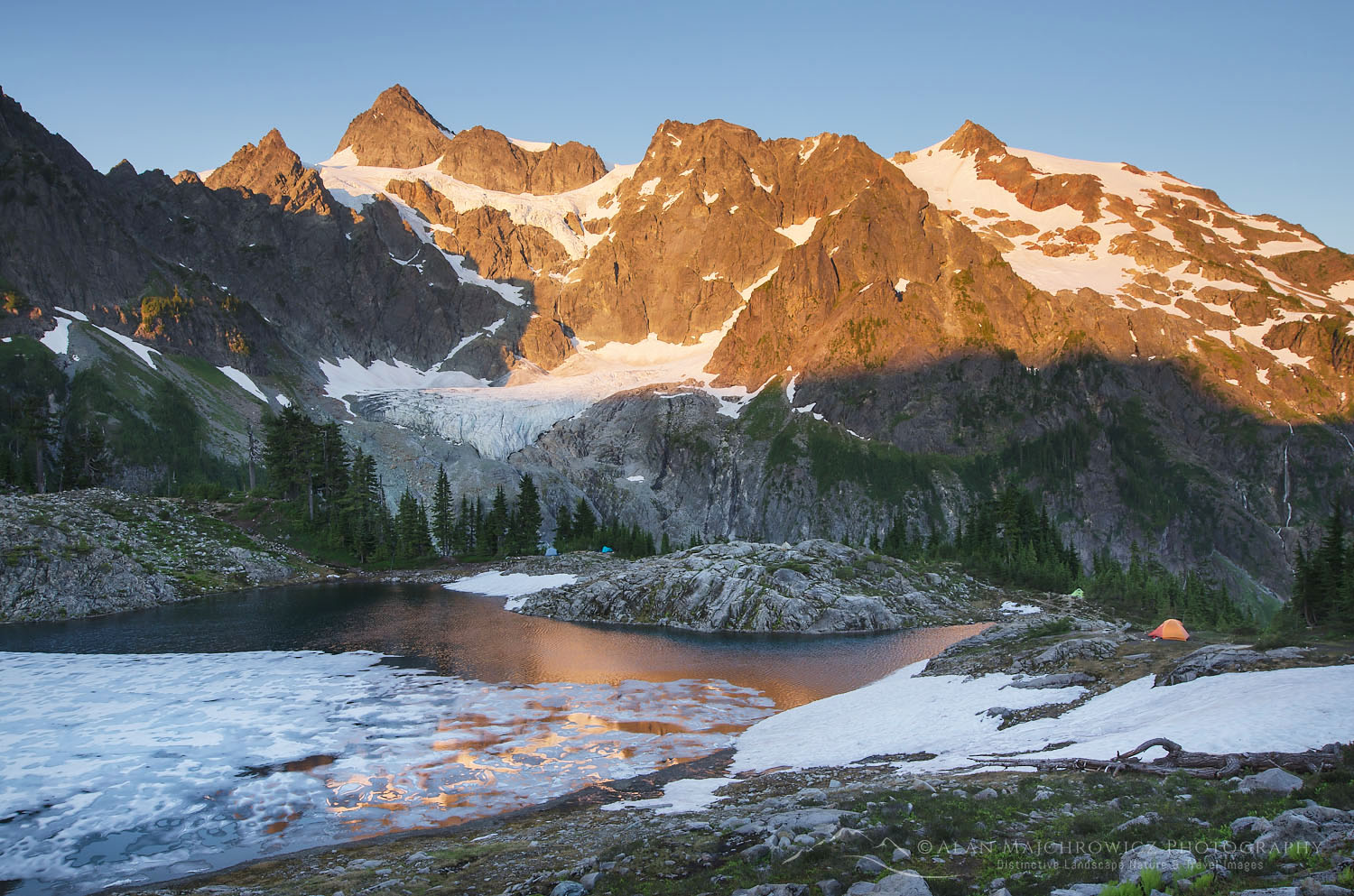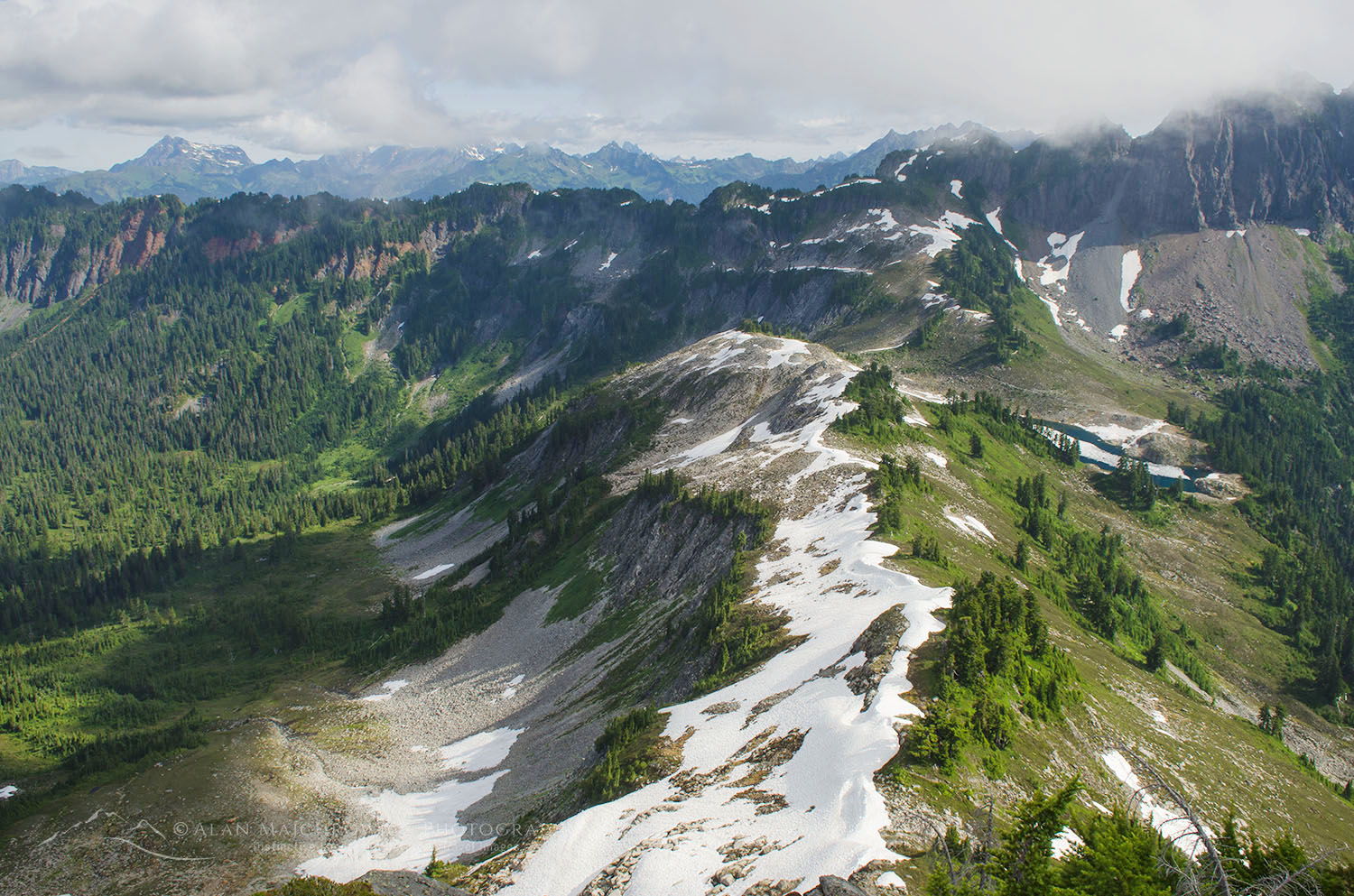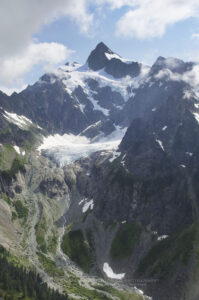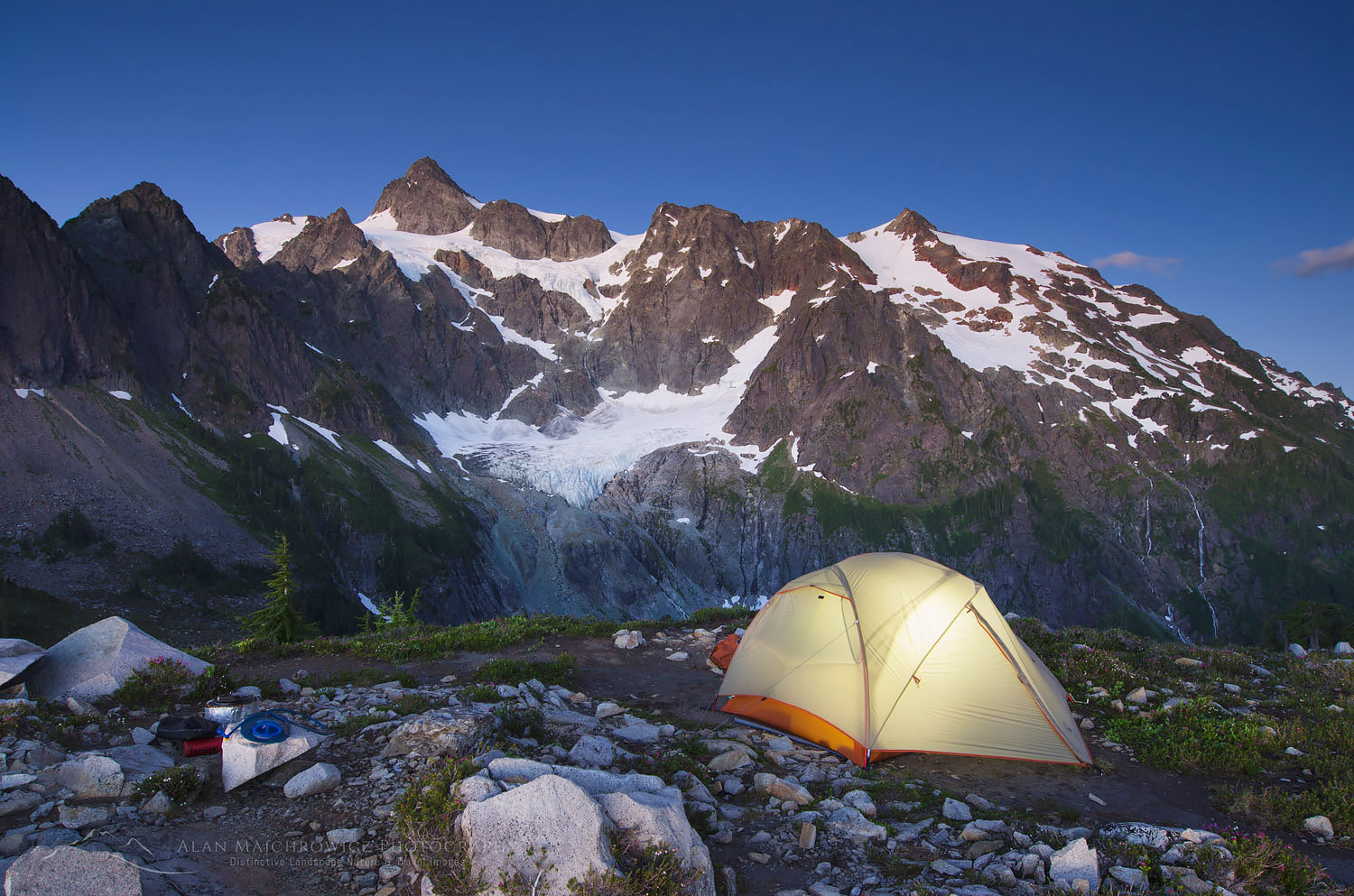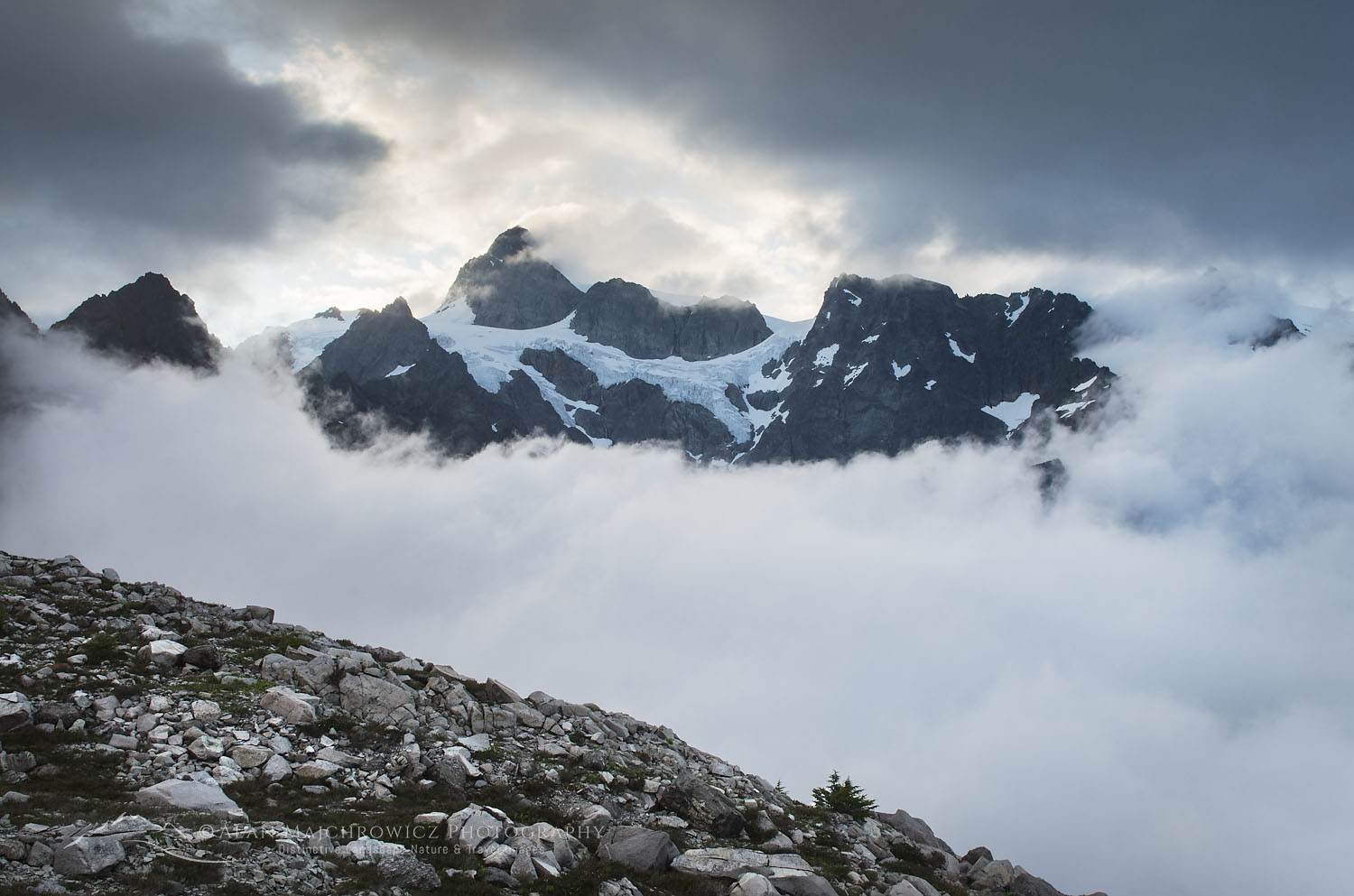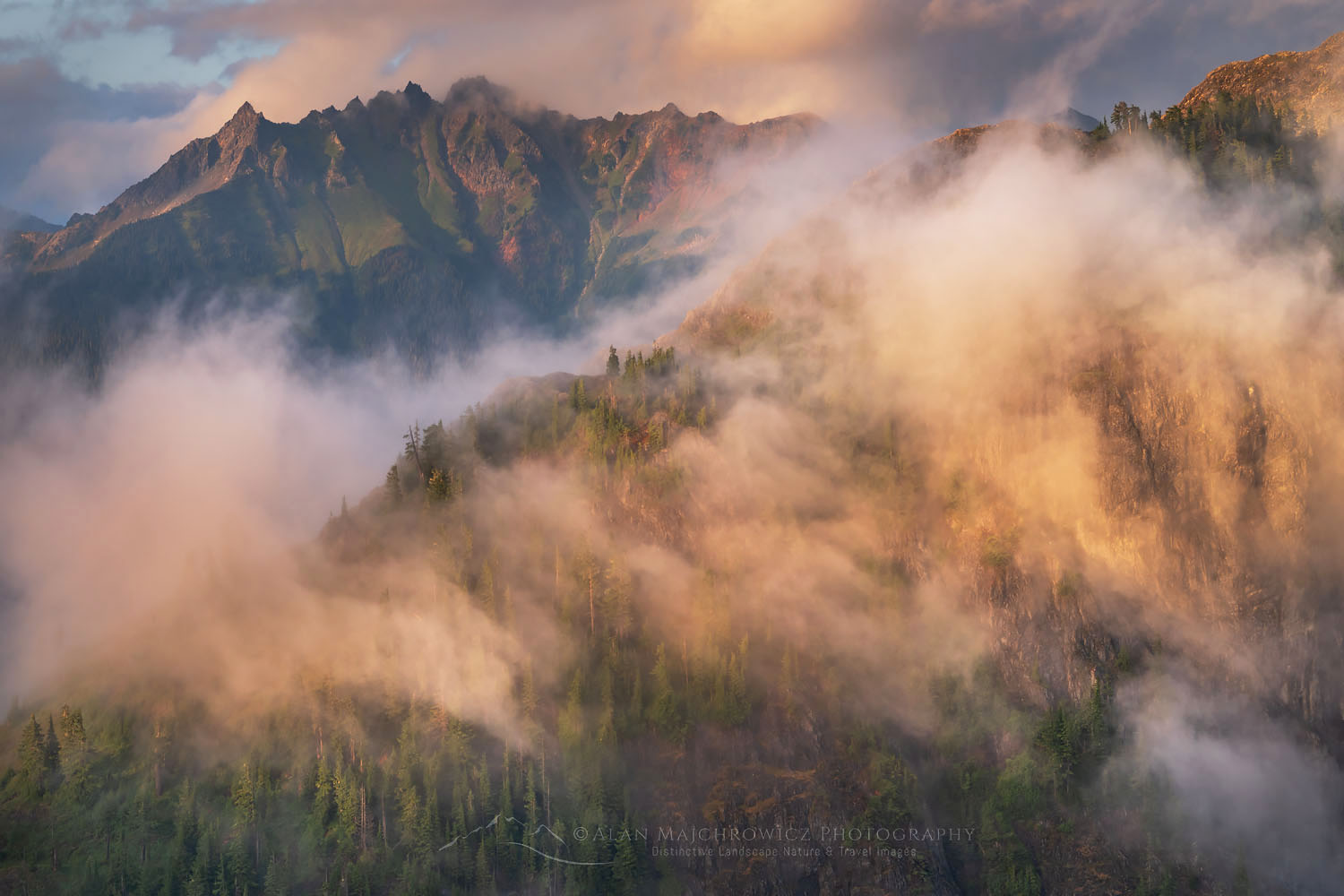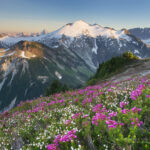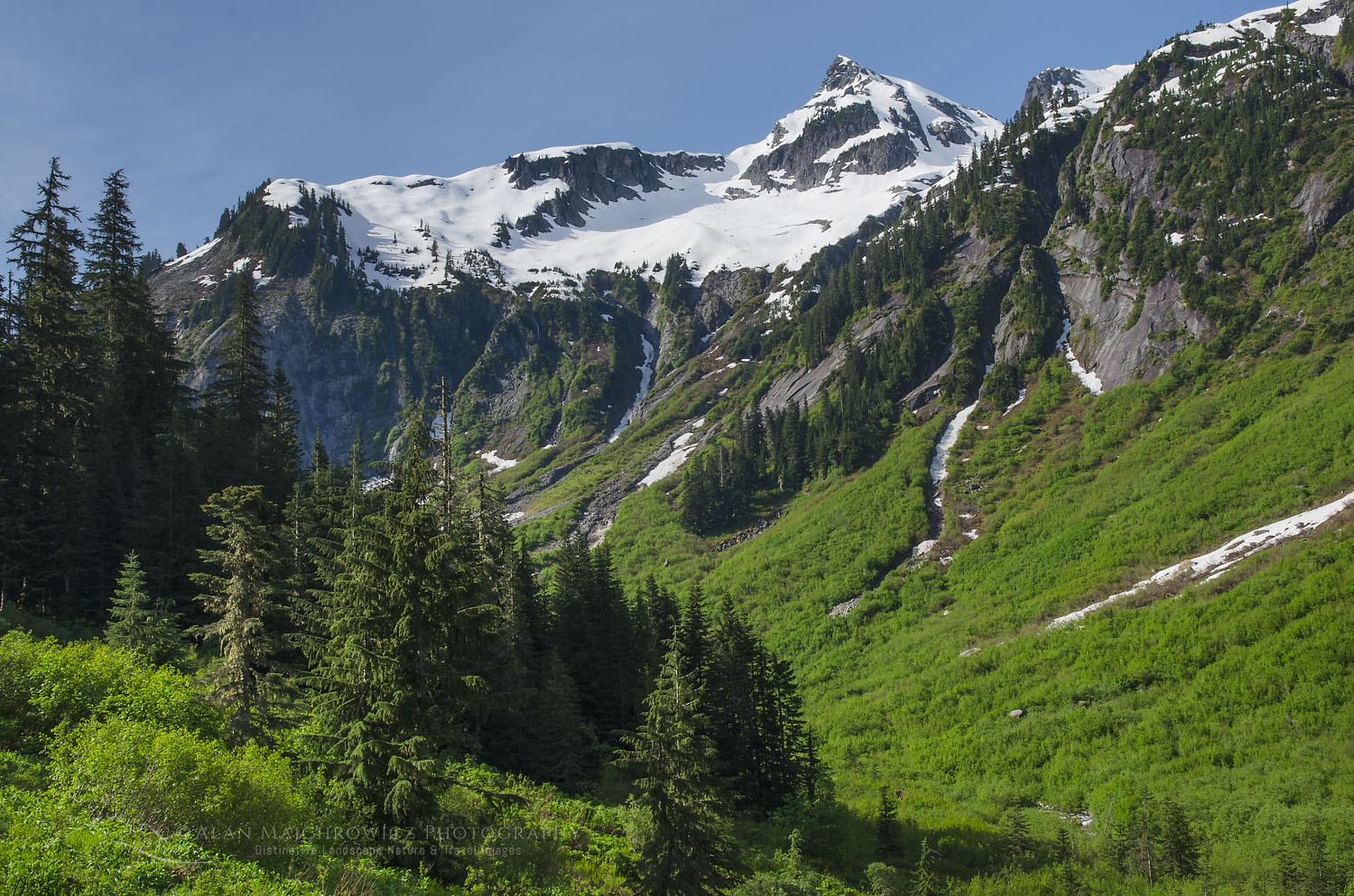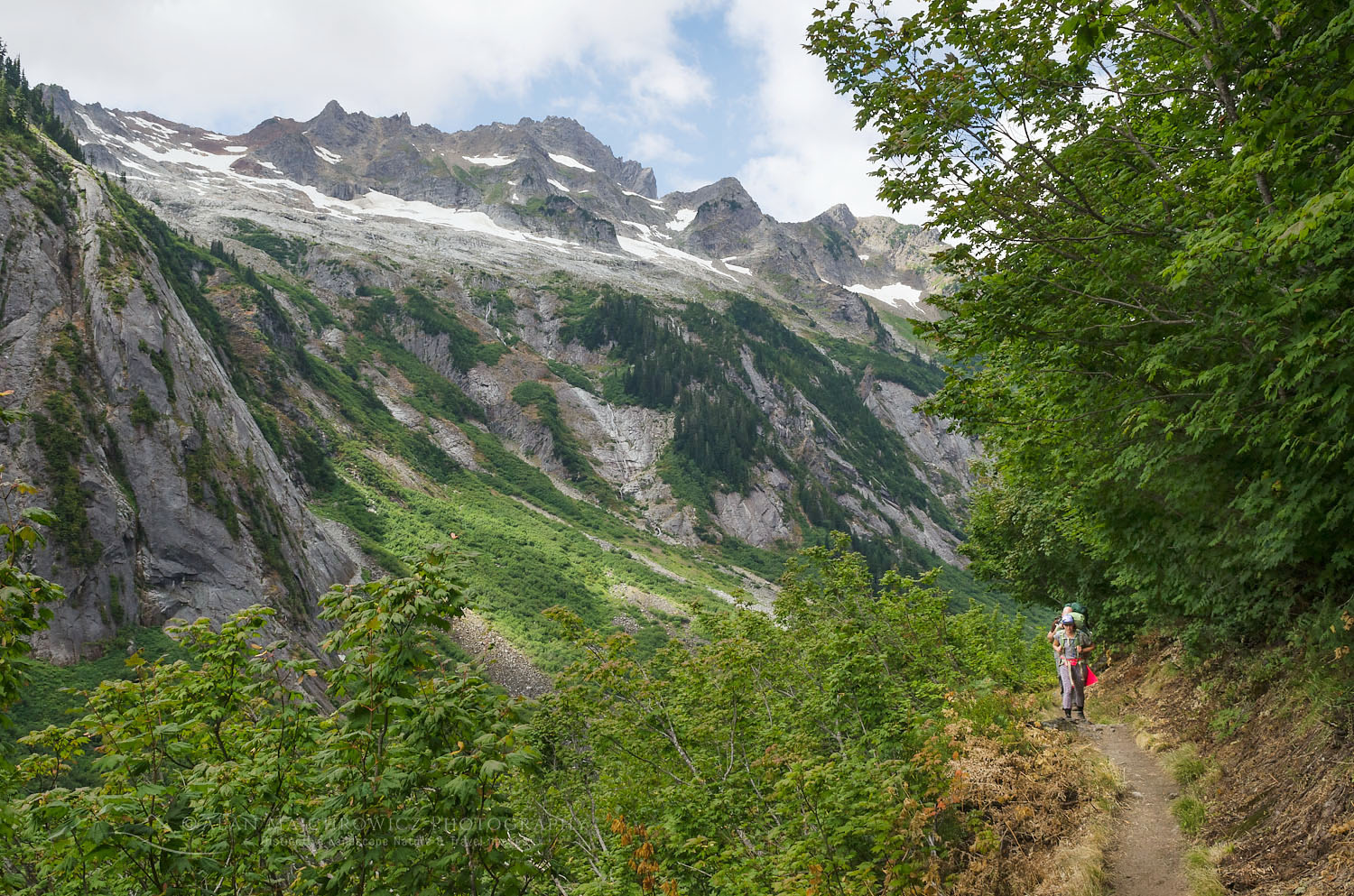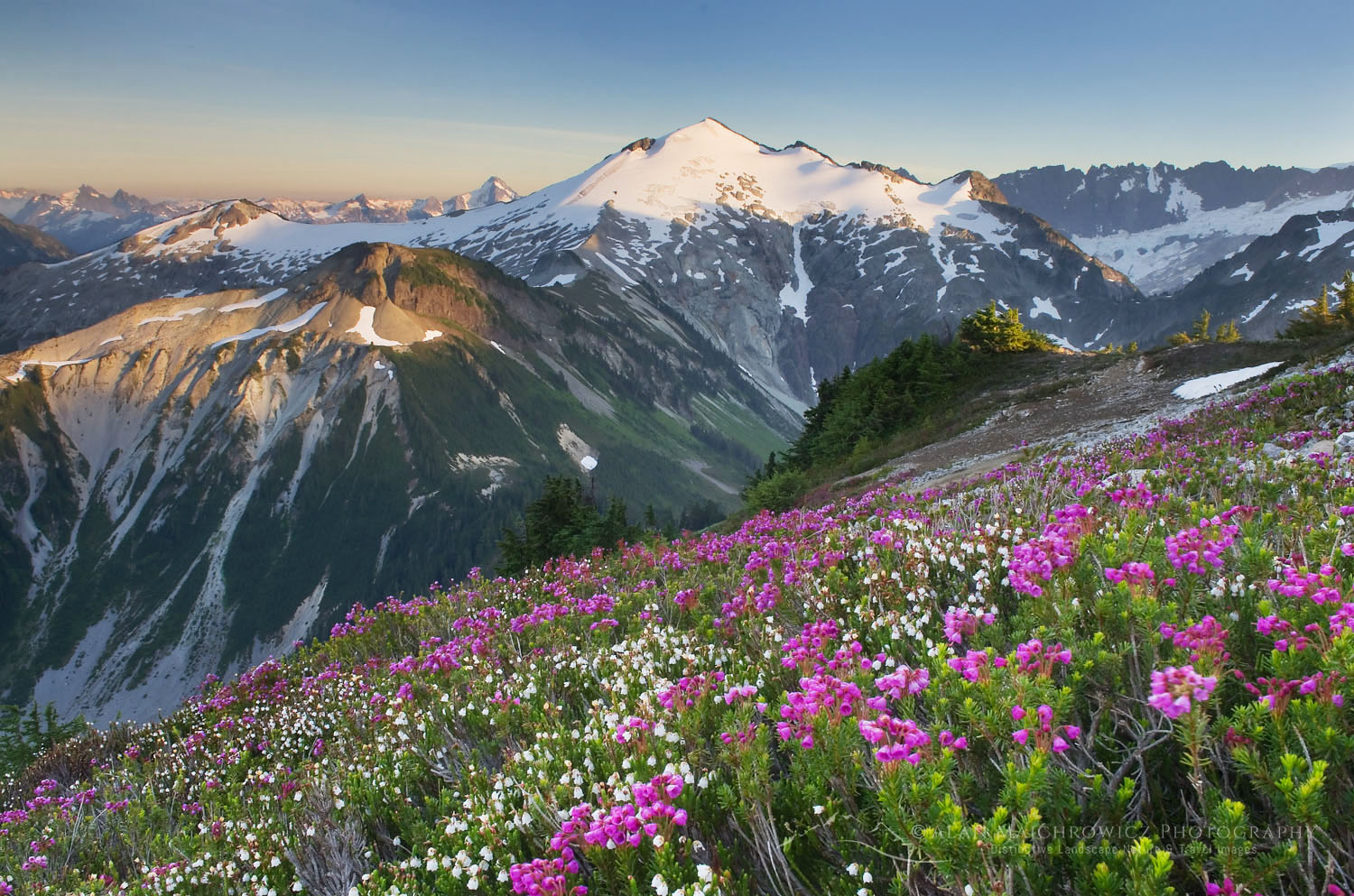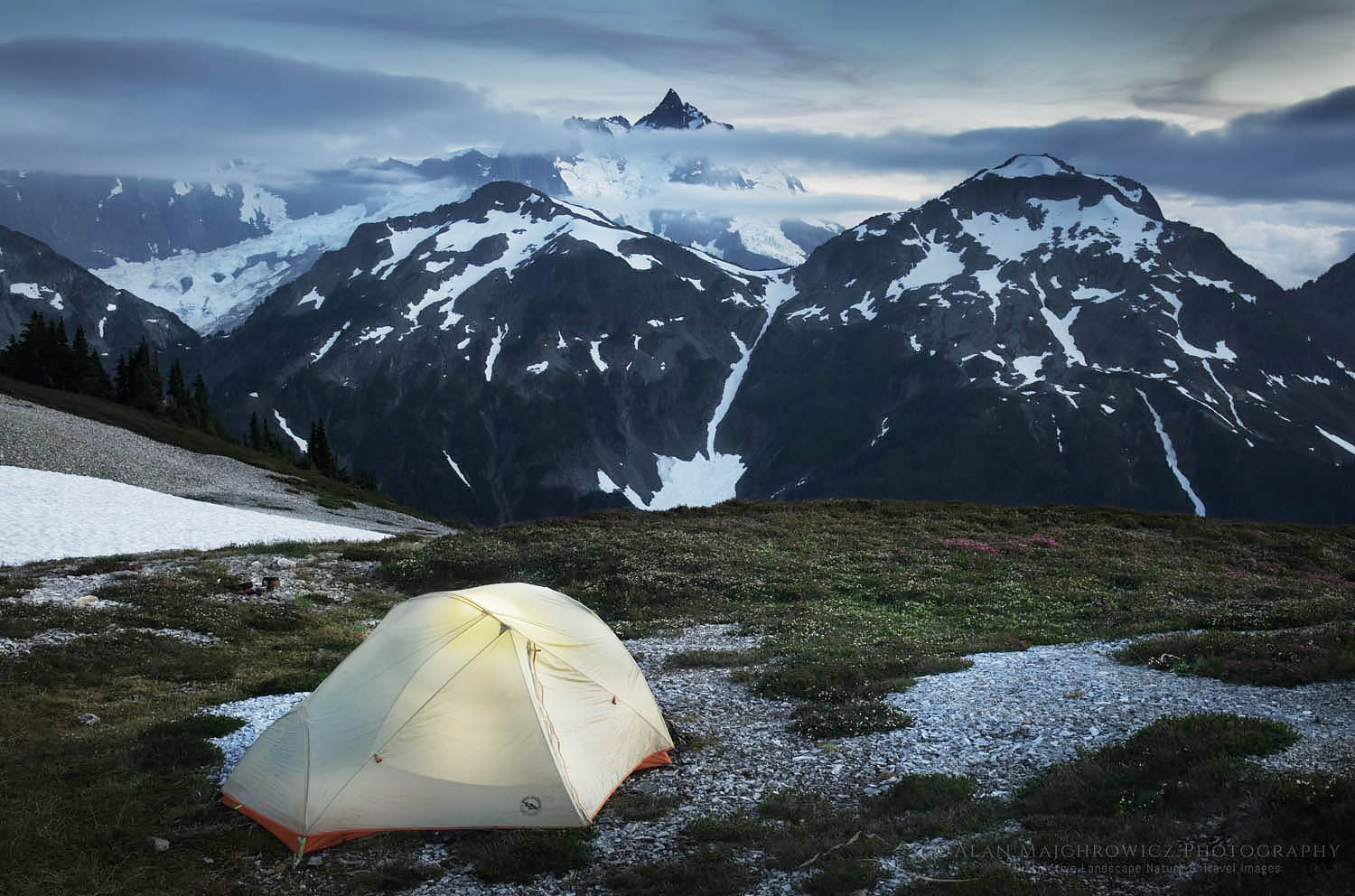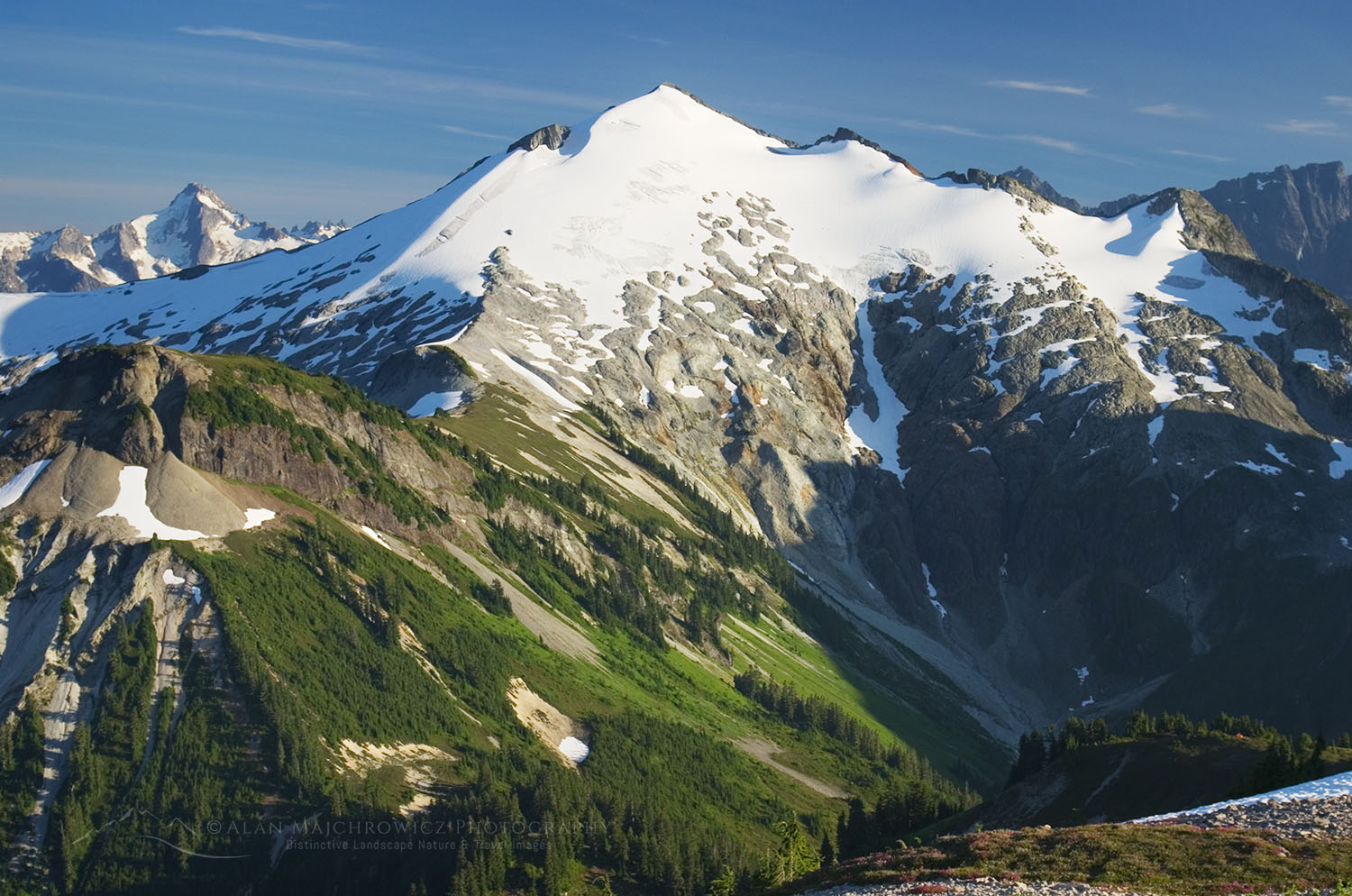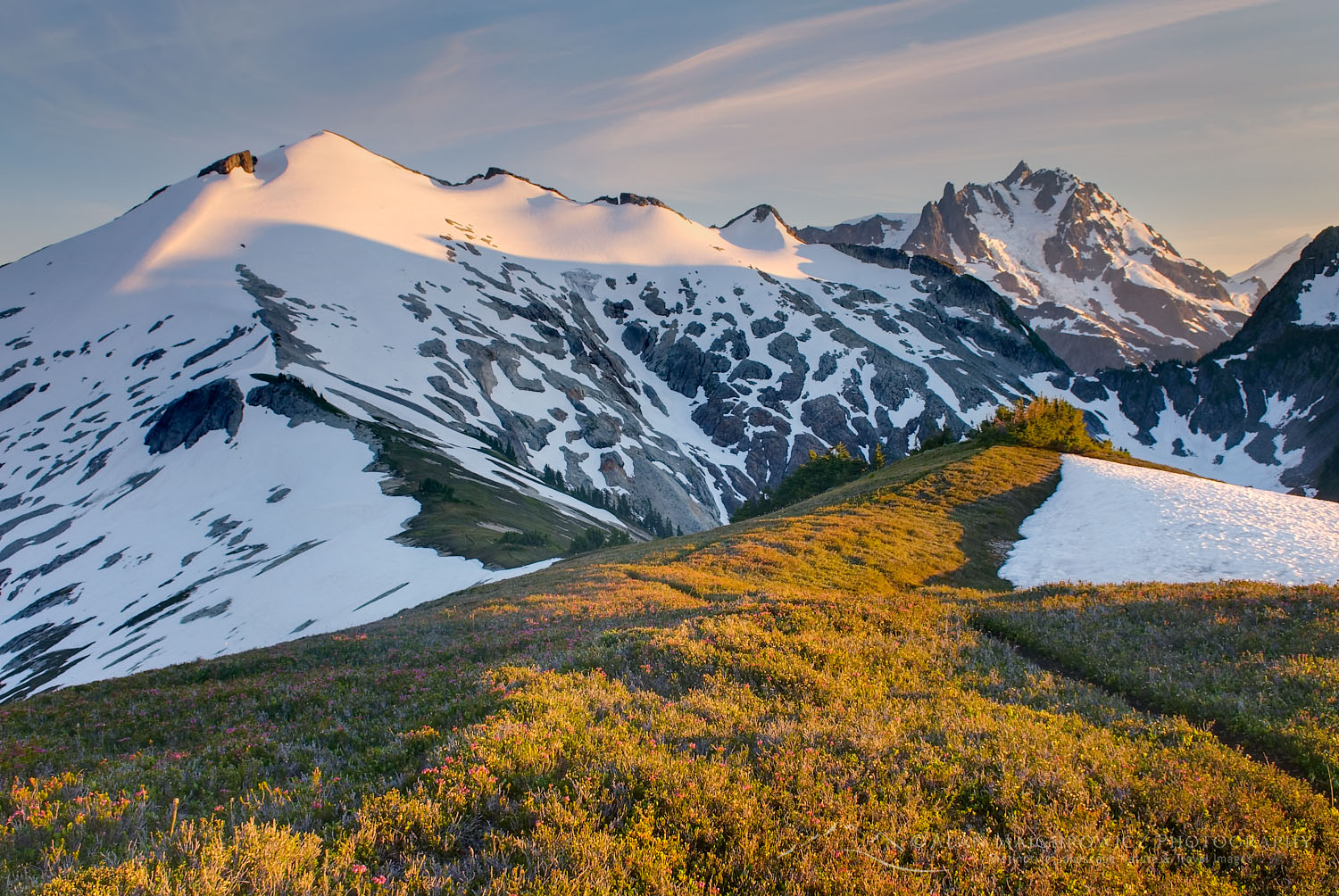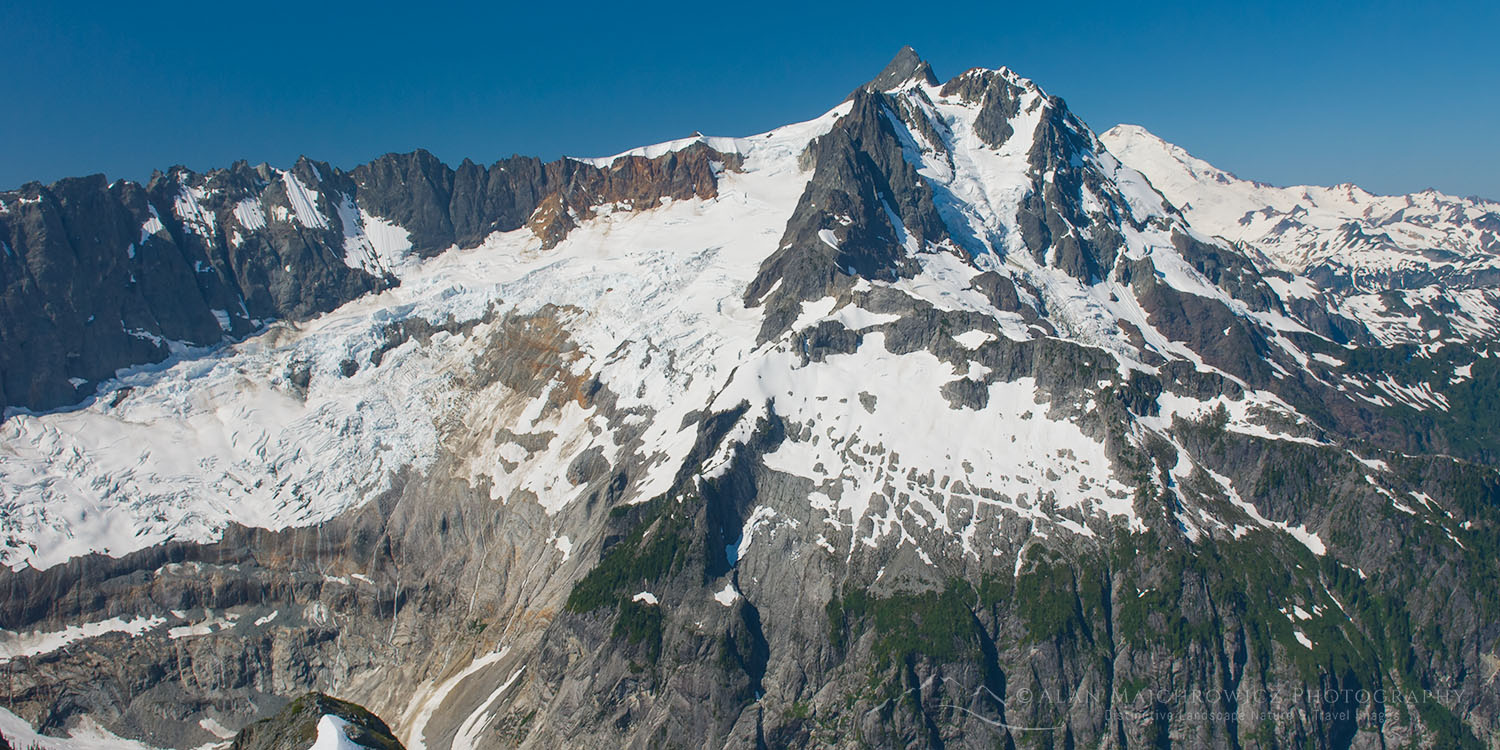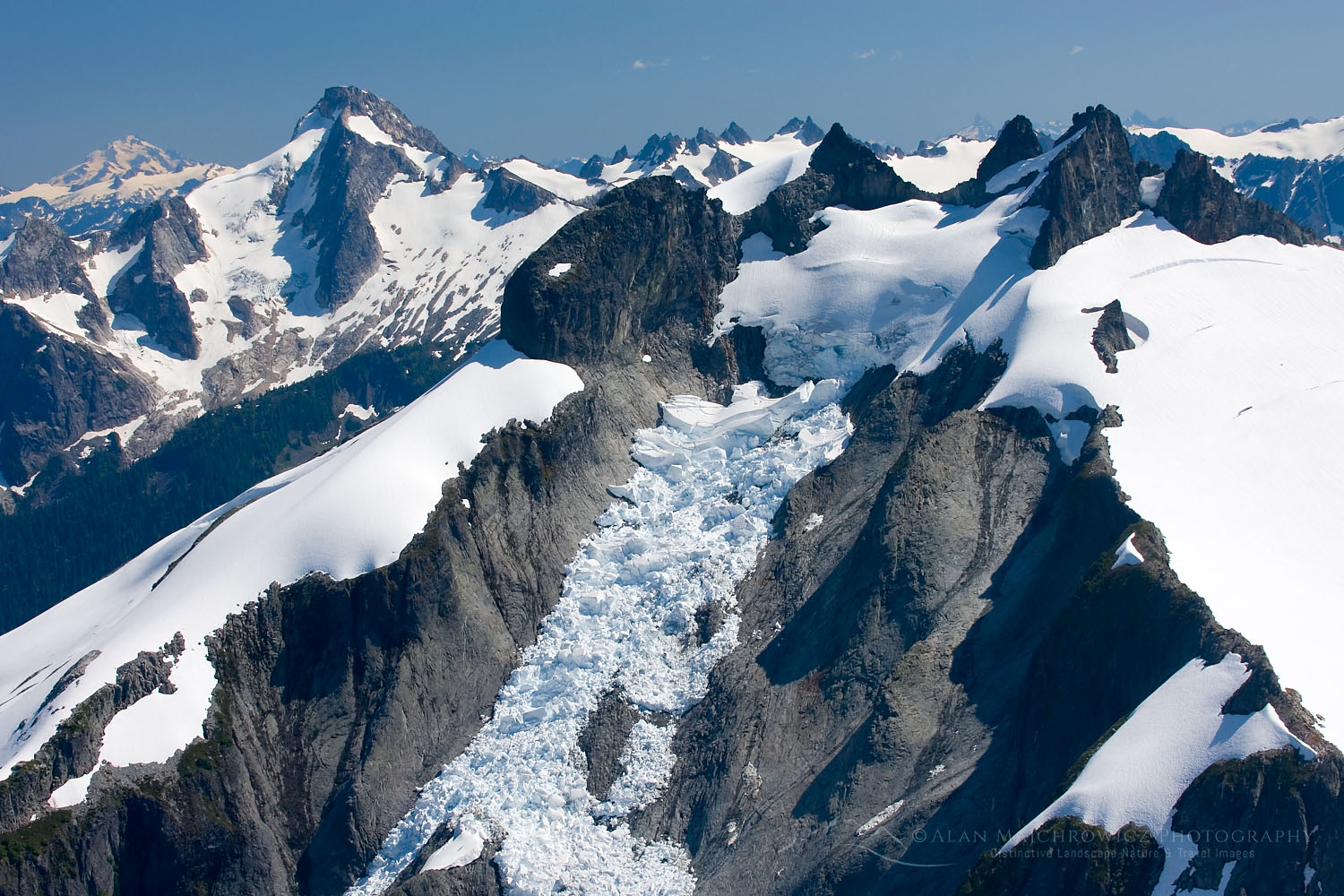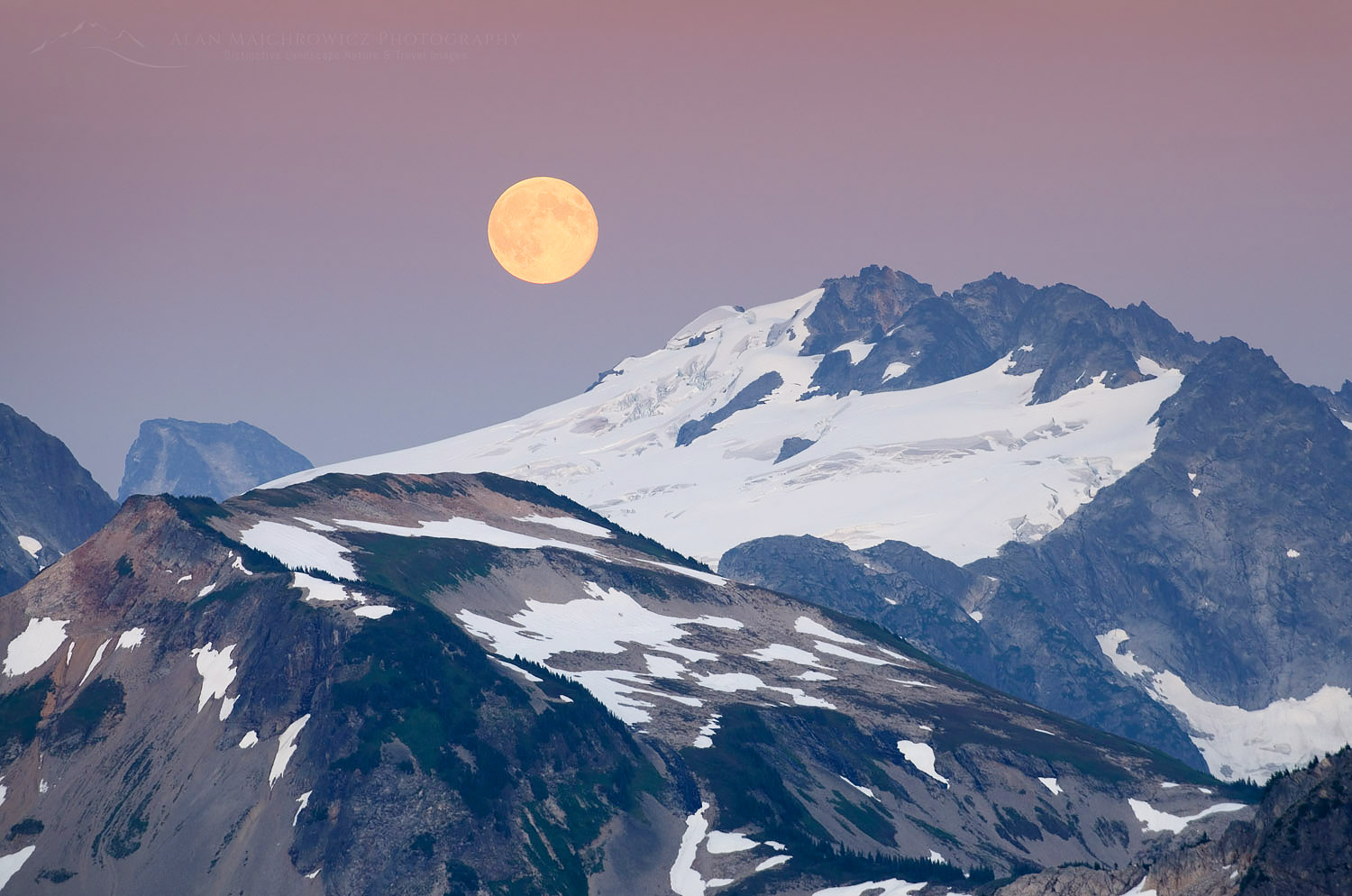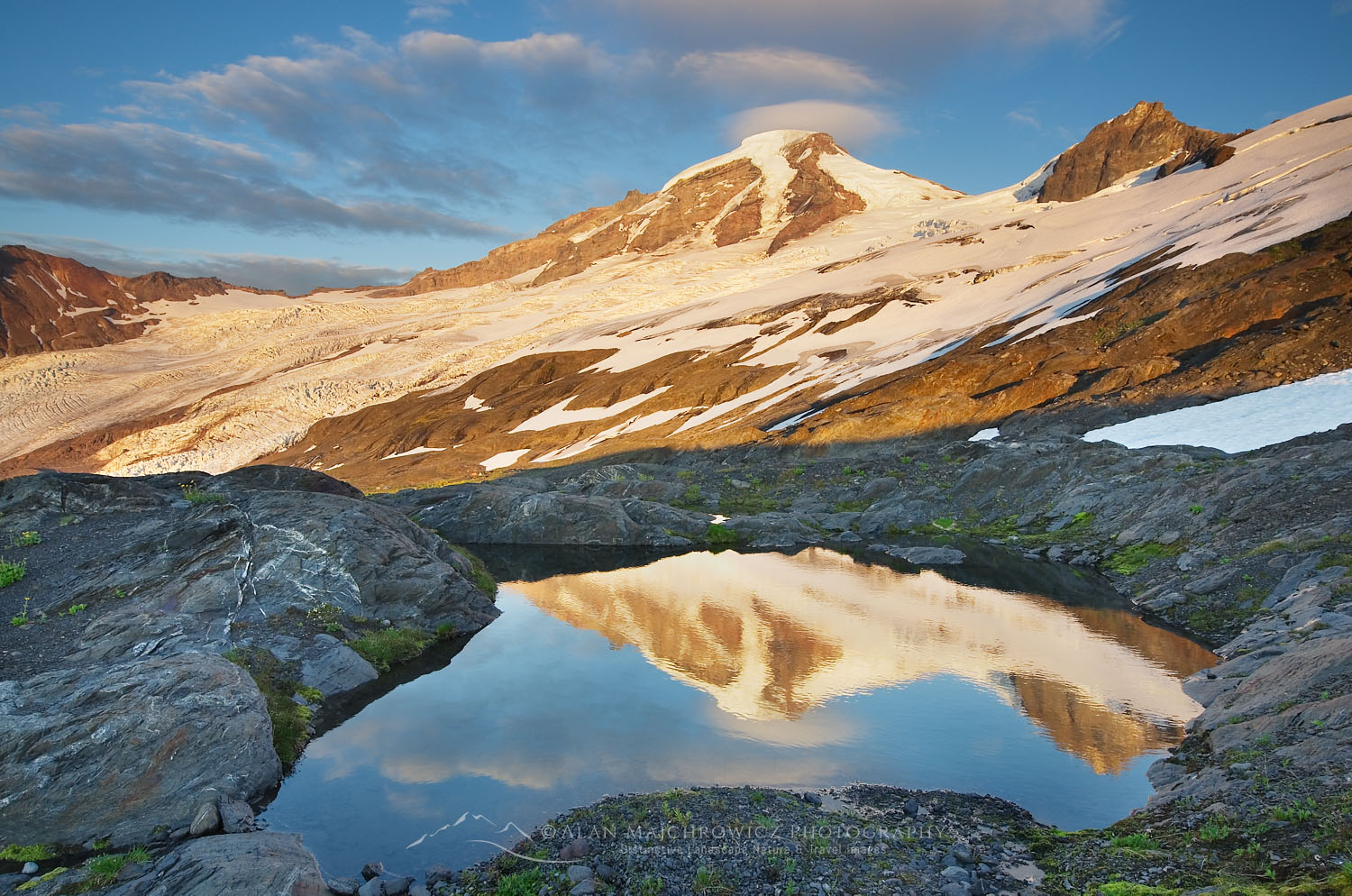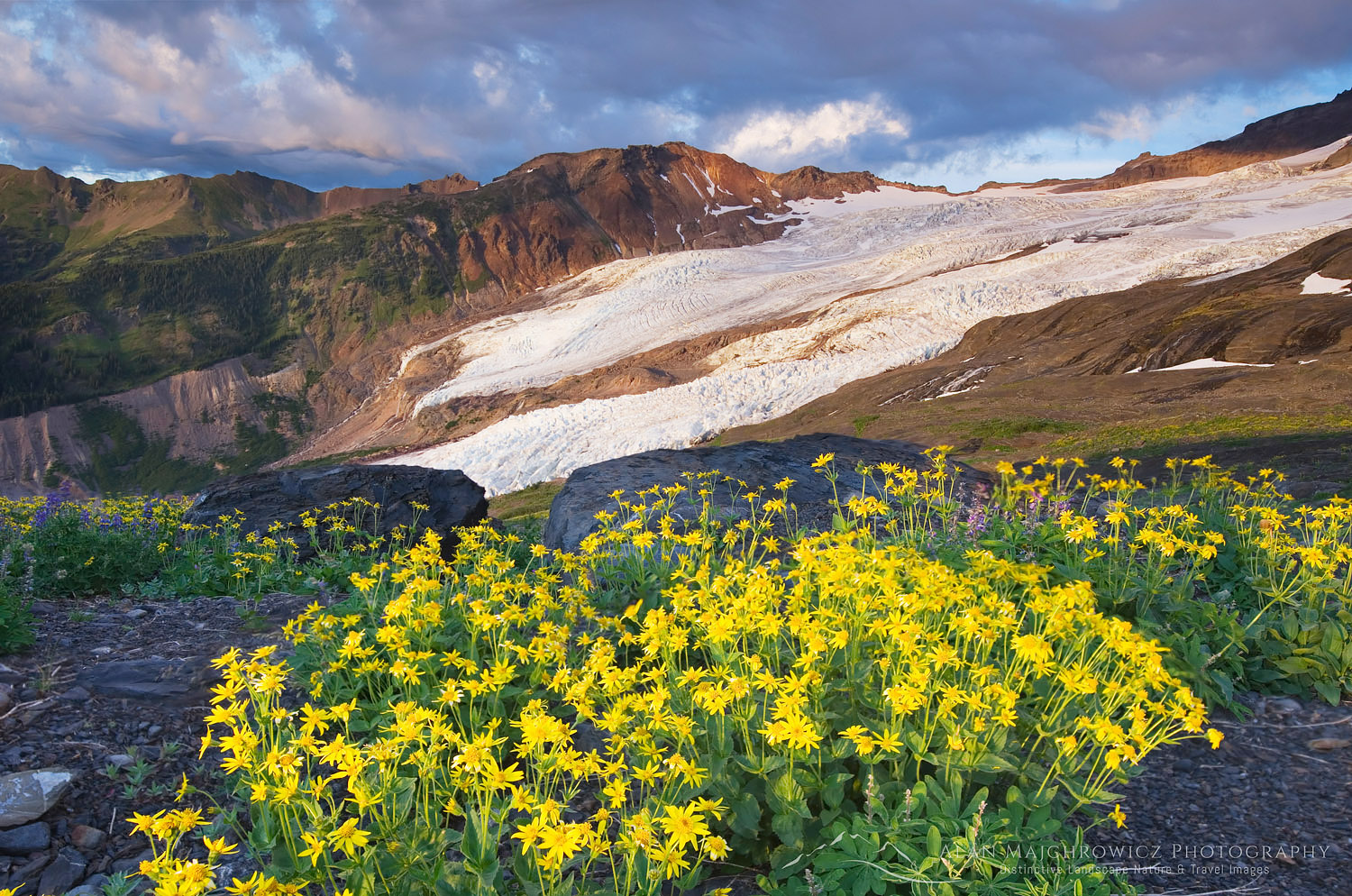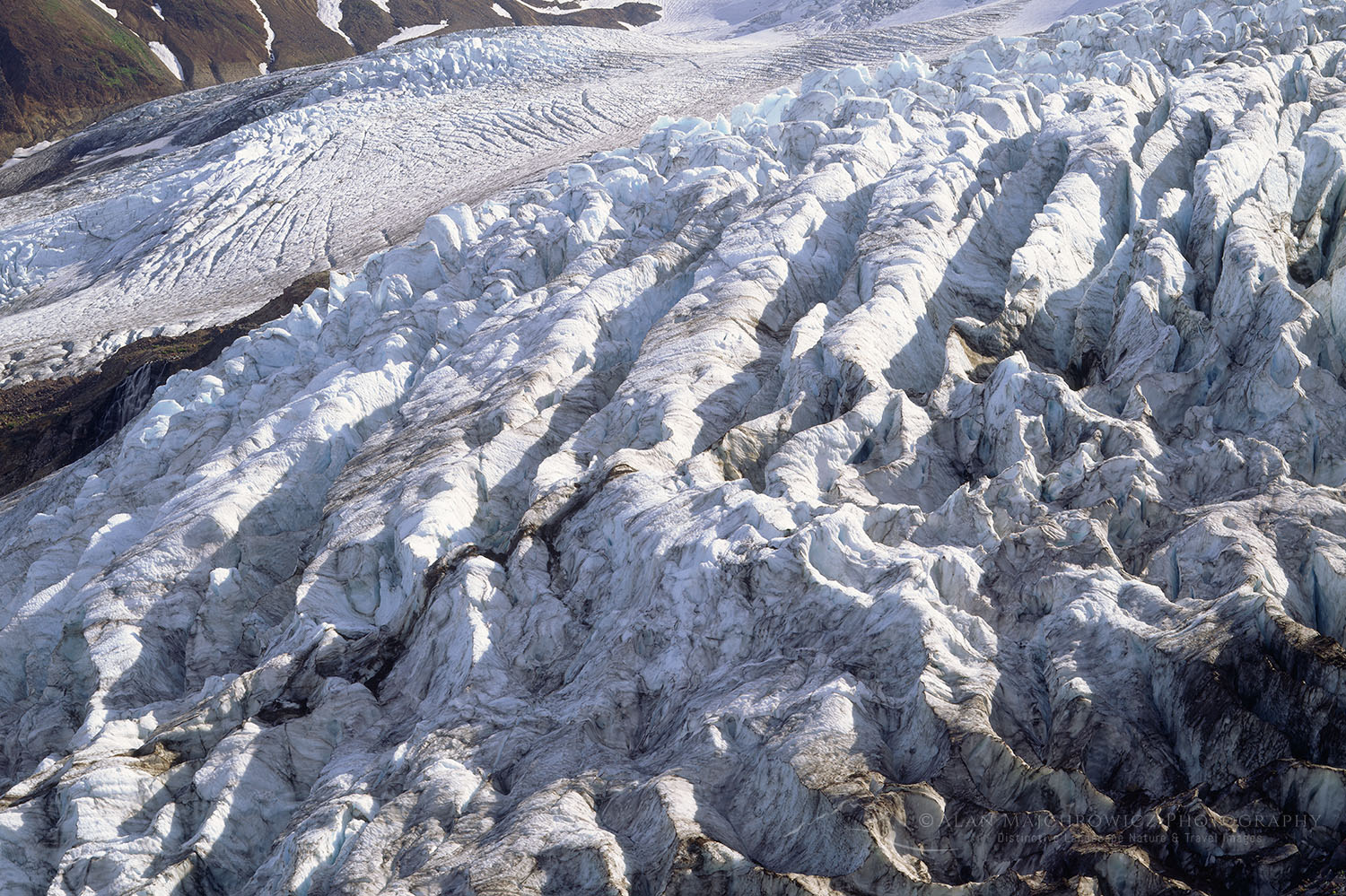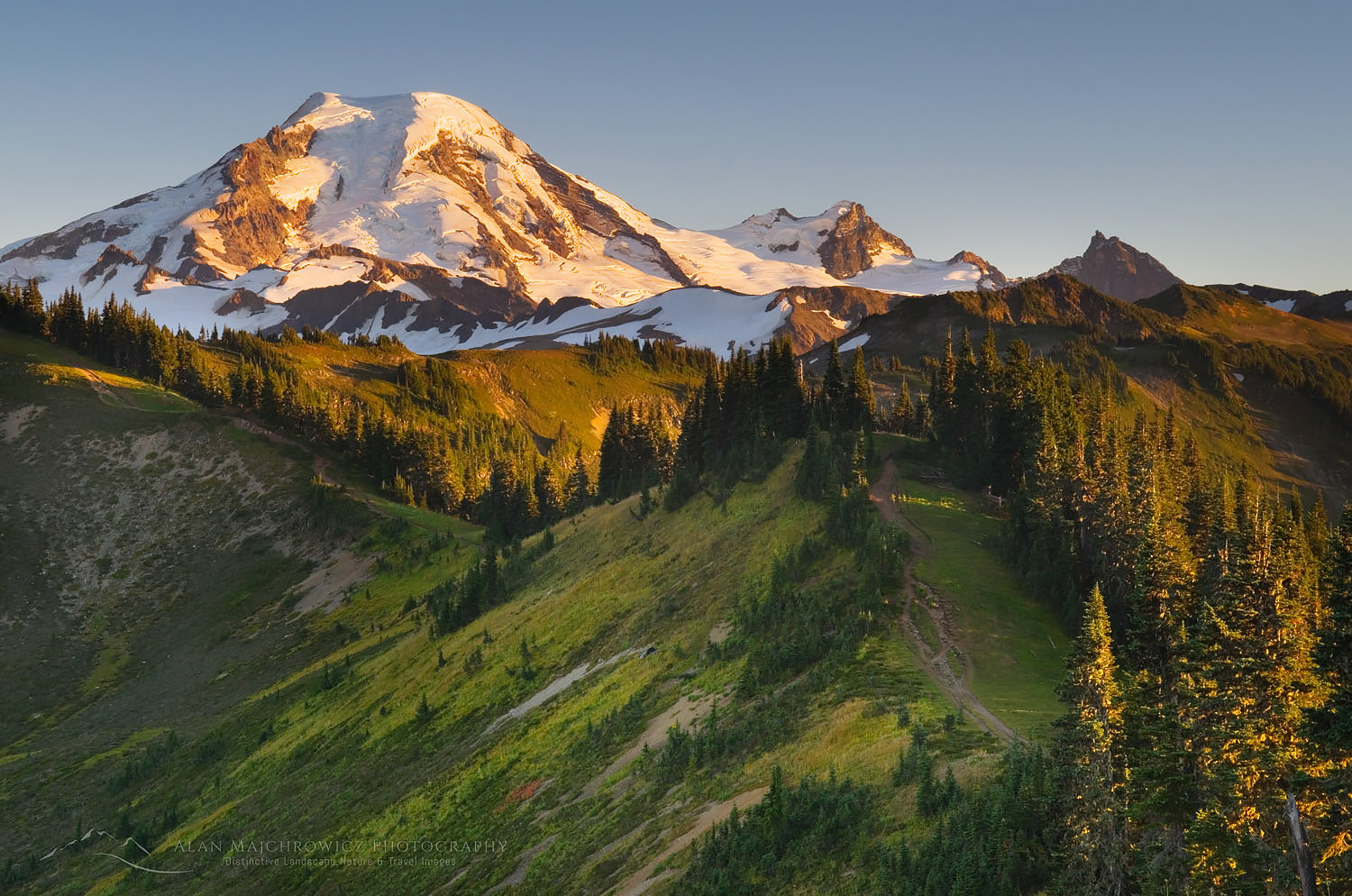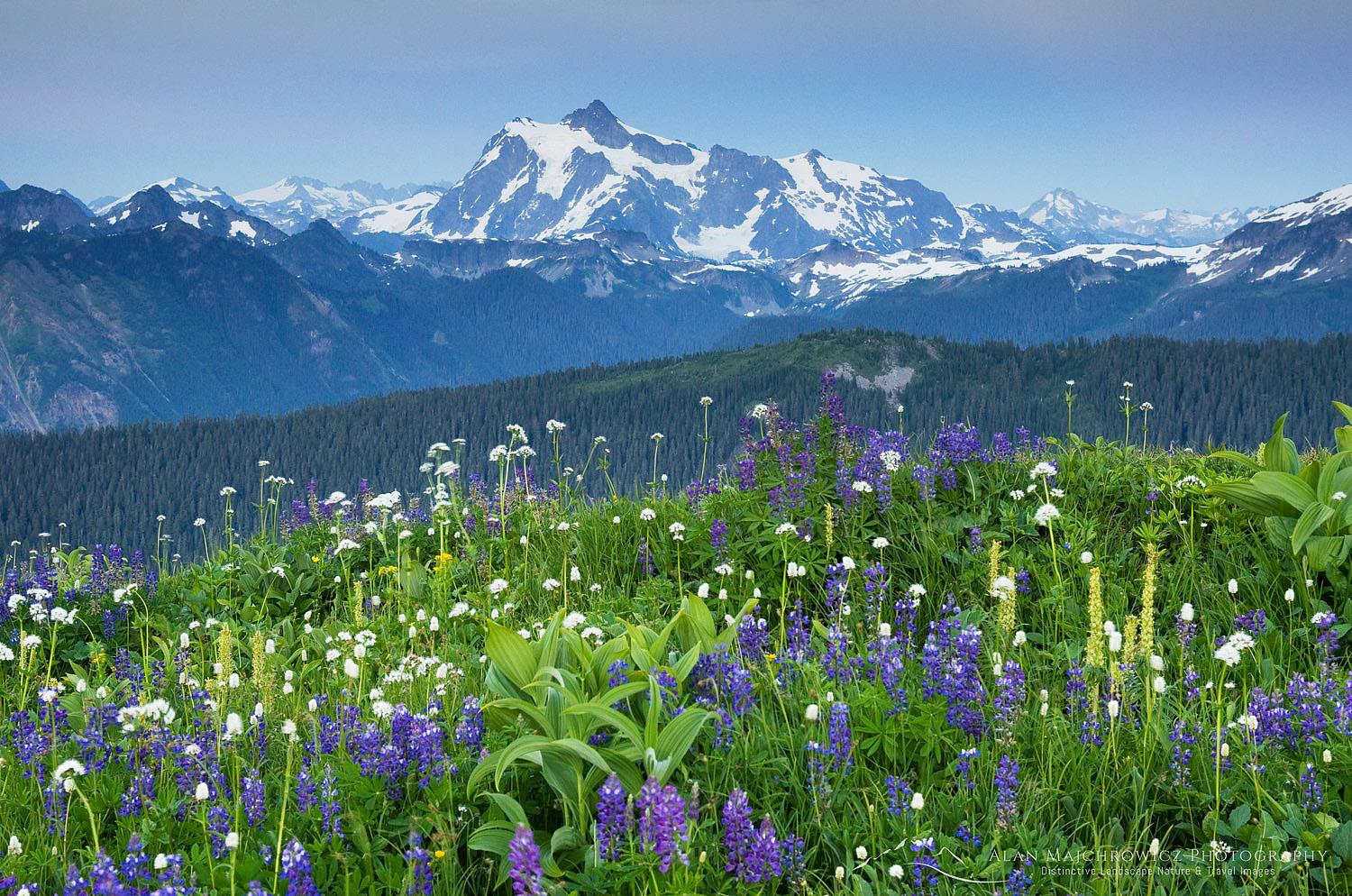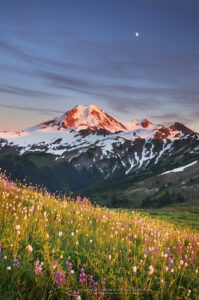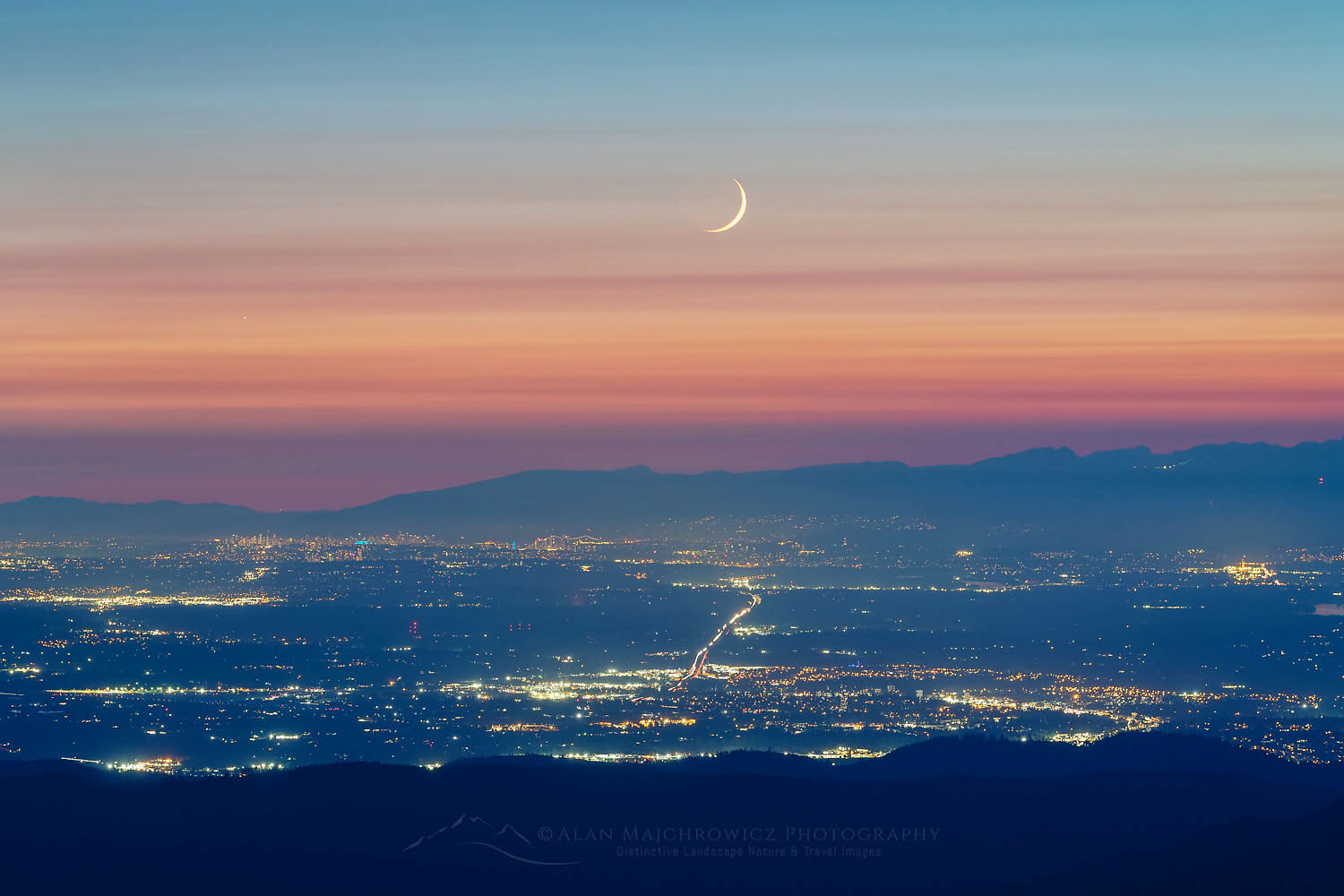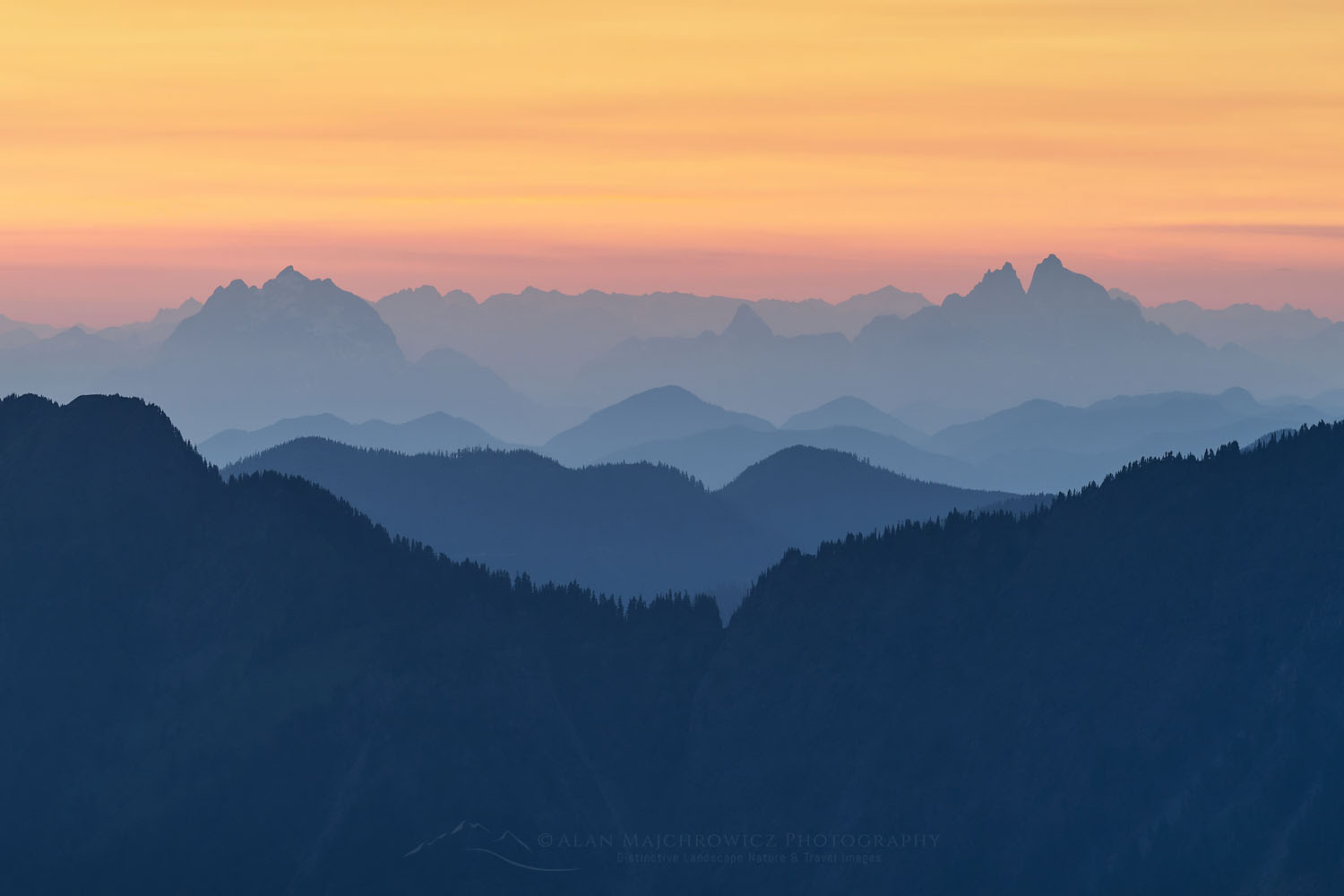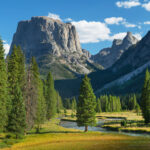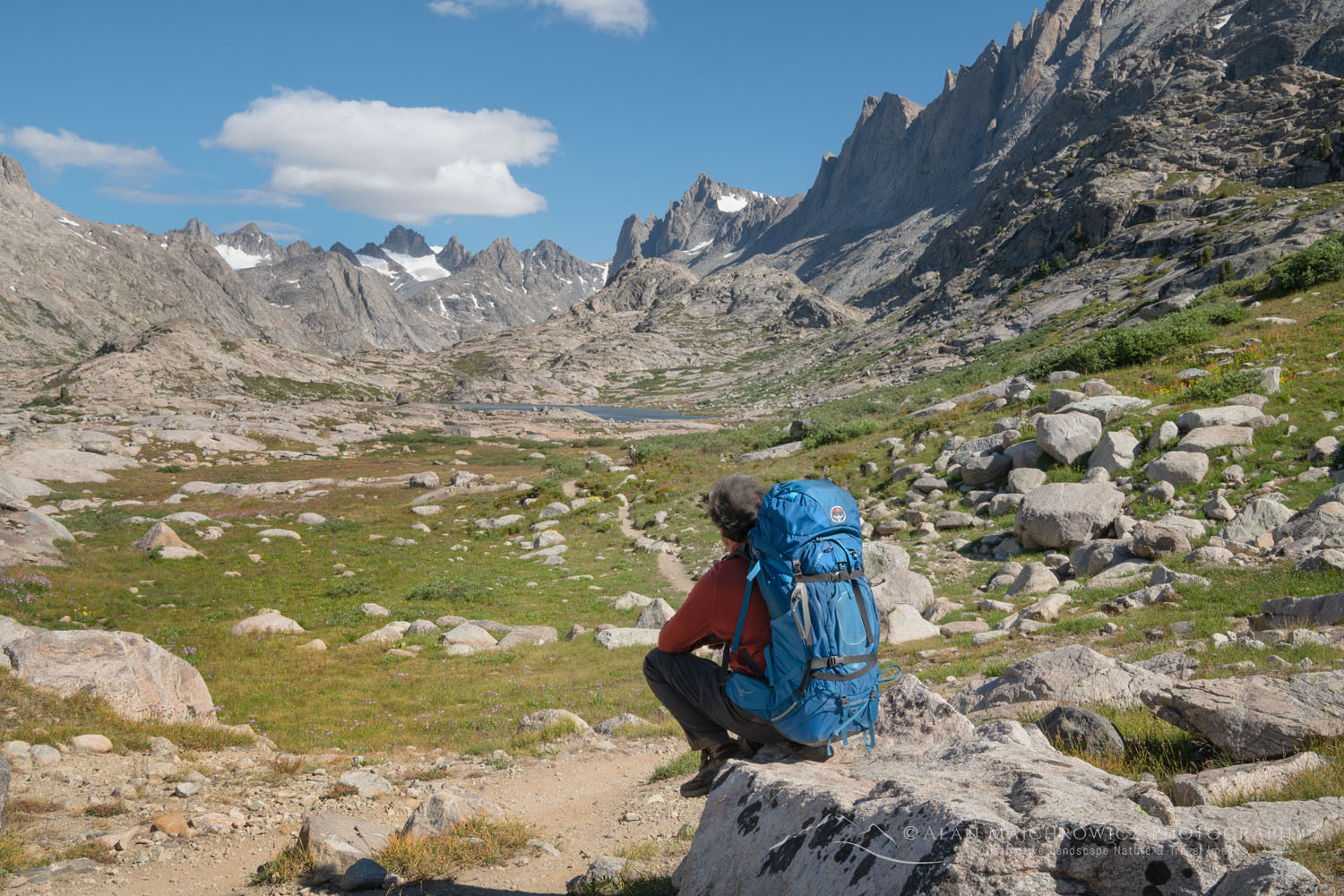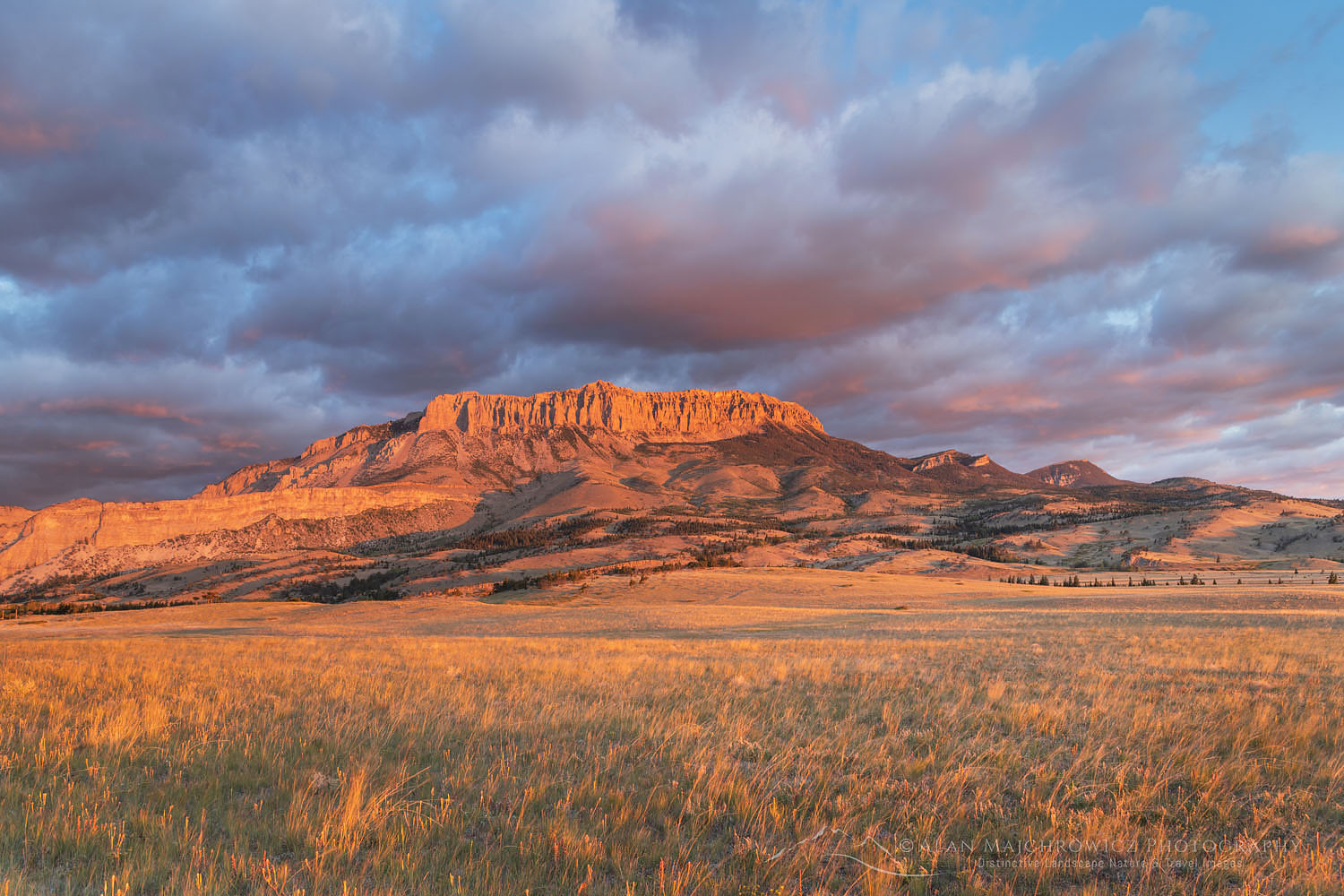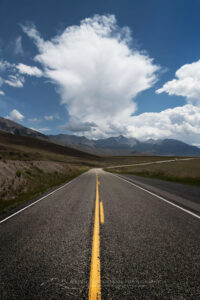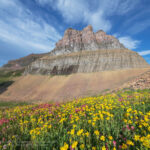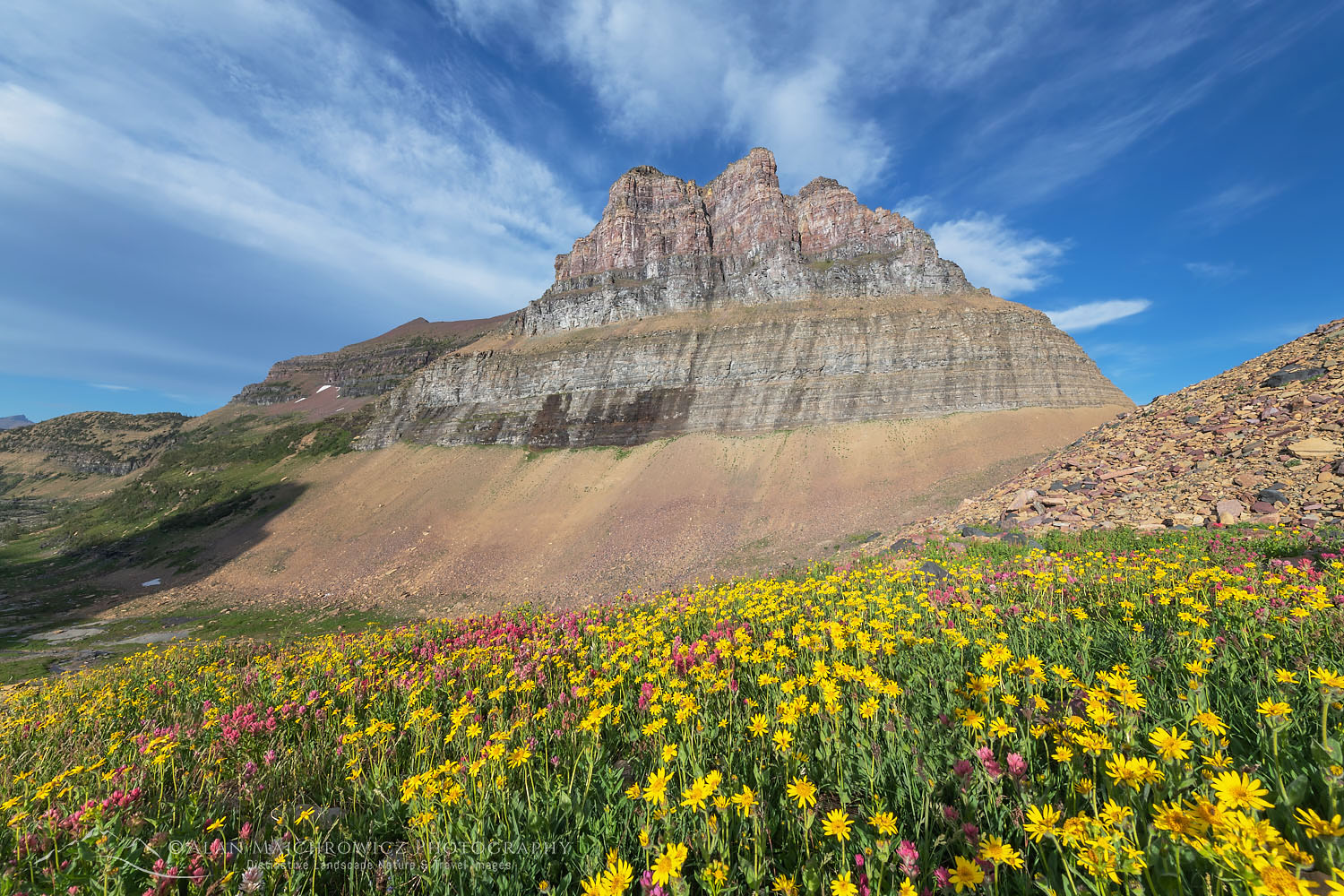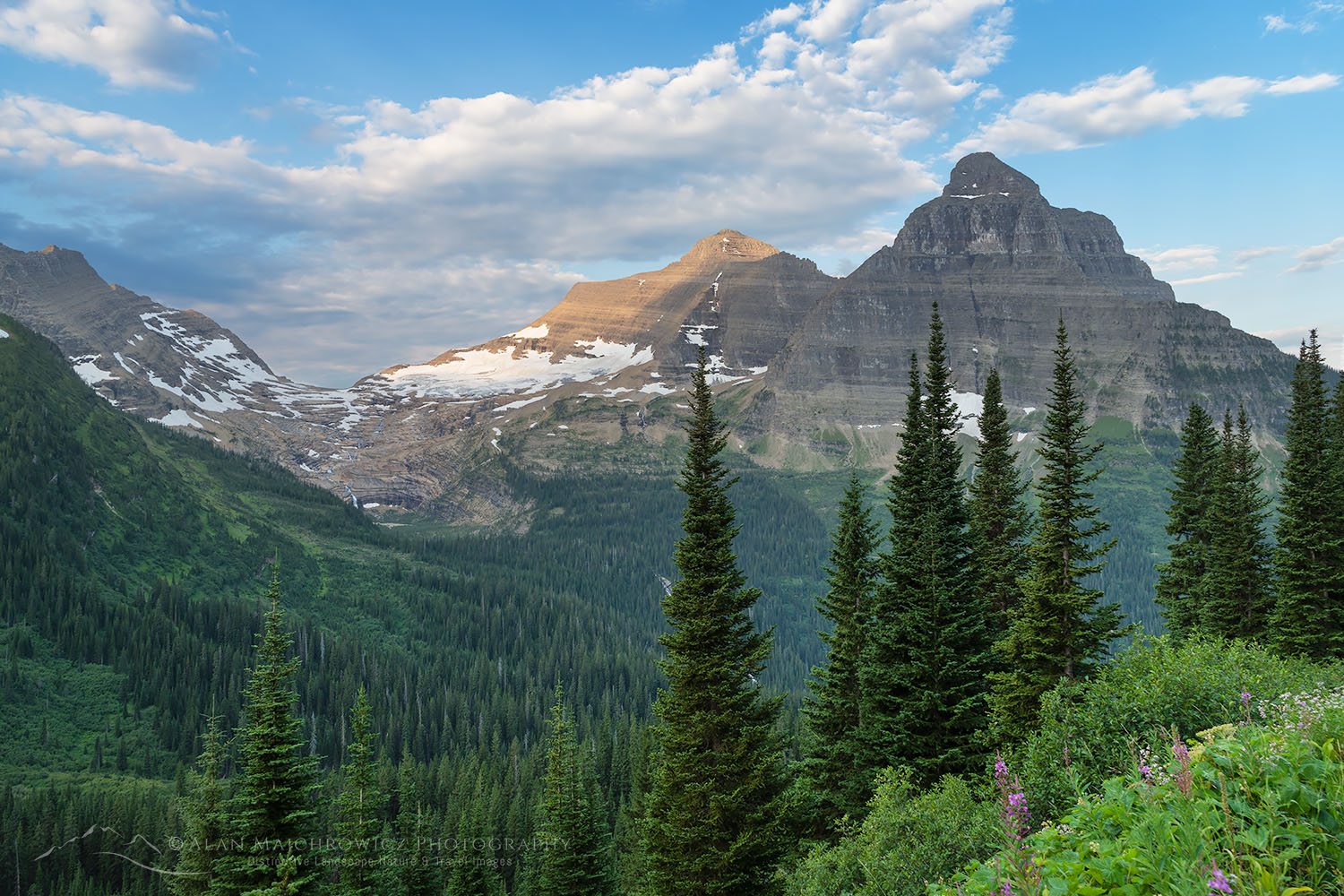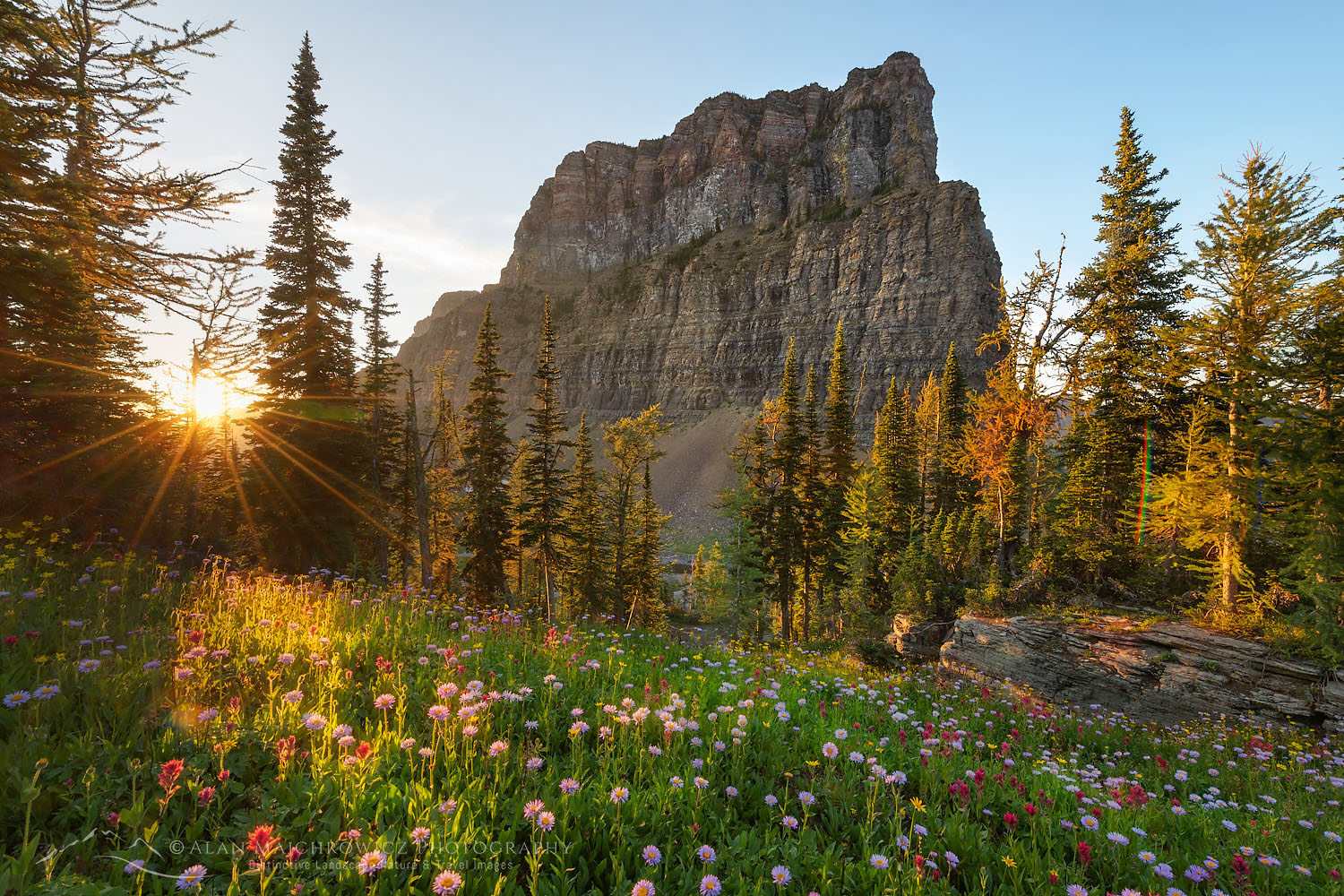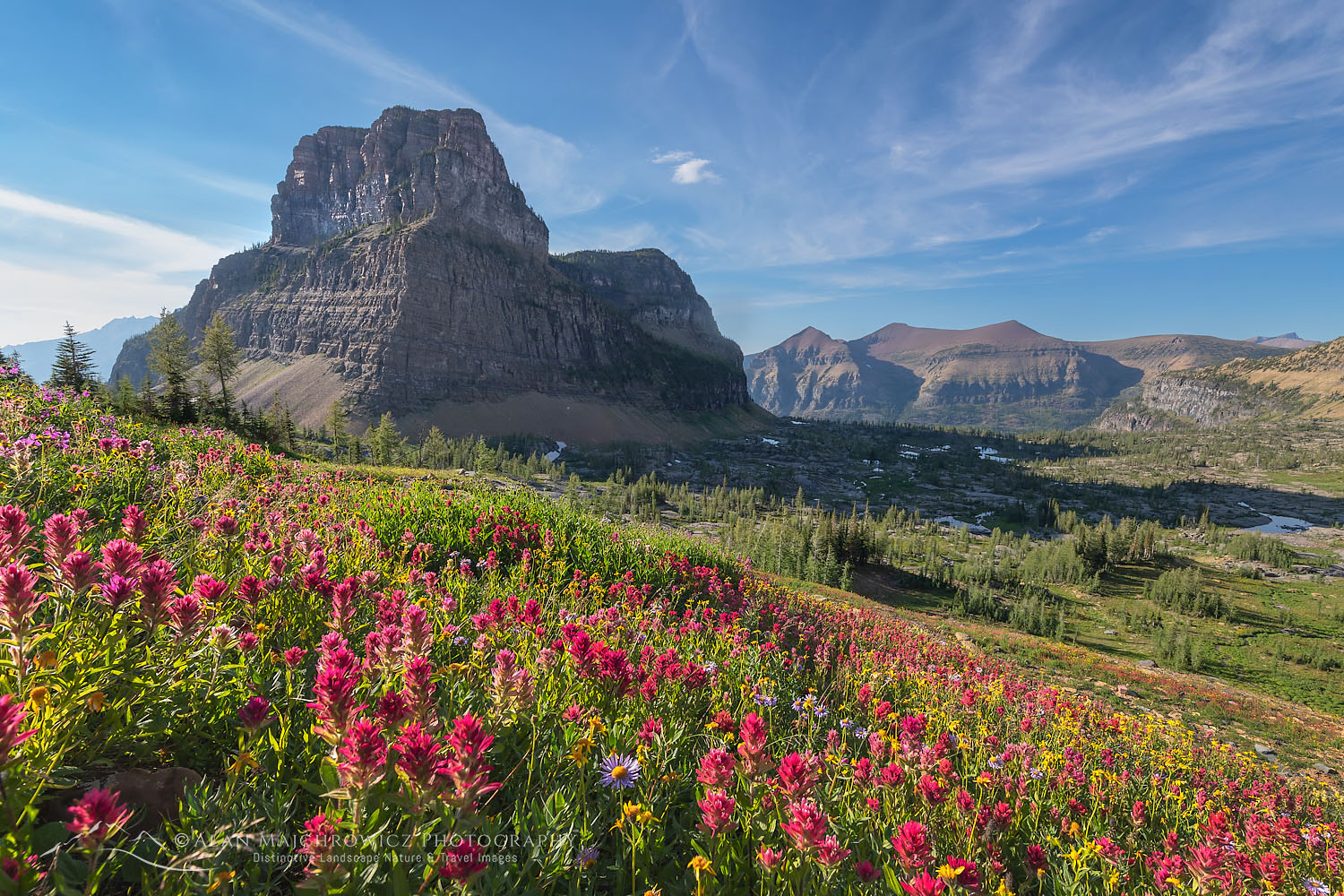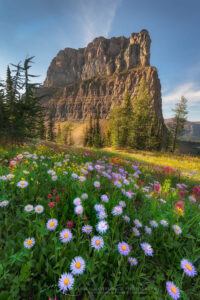Photographing Cramer Lakes Sawtooth Mountains
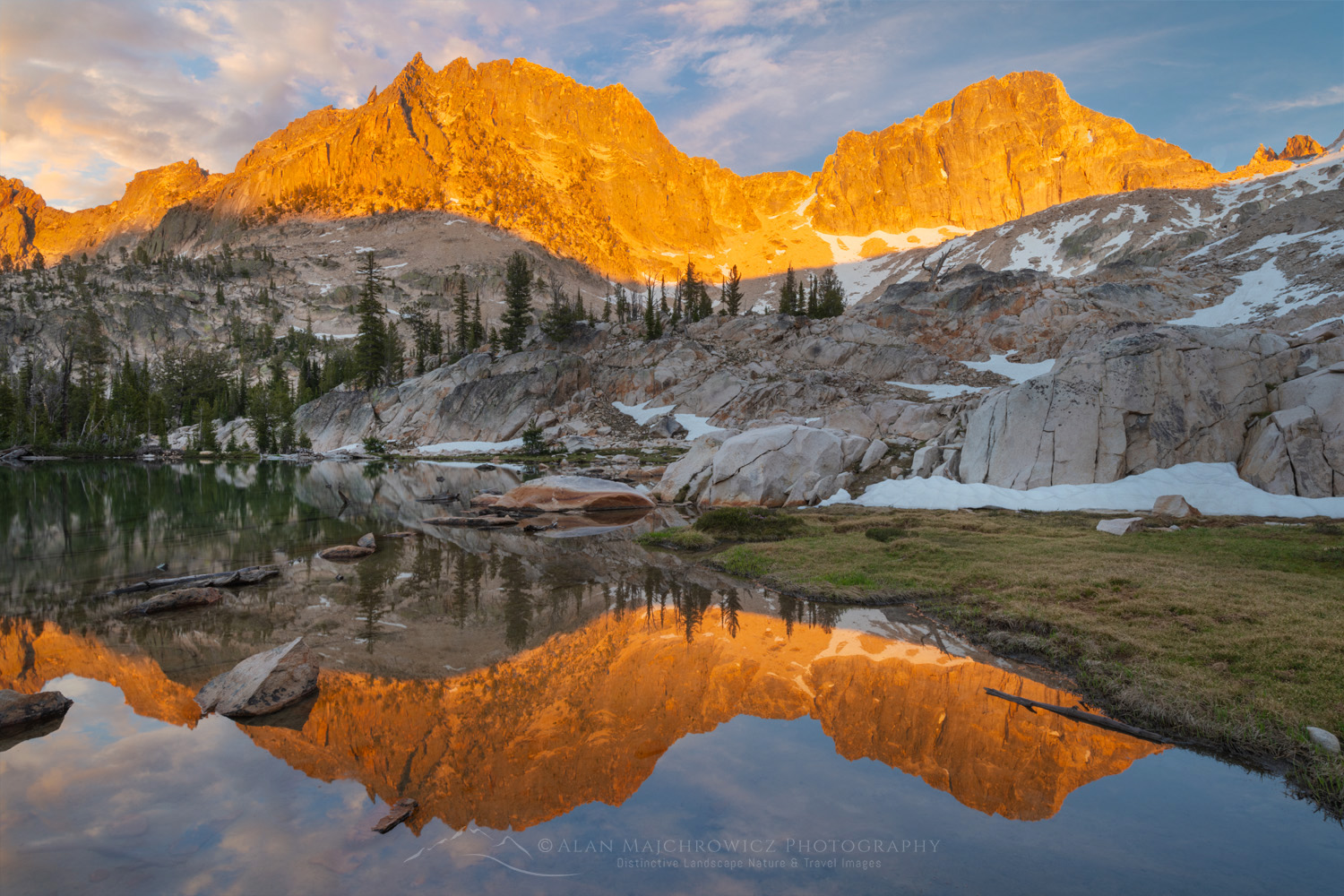 Upper Cramer Basin, Sawtooth Wilderness, Idaho #83712 Purchase
Upper Cramer Basin, Sawtooth Wilderness, Idaho #83712 Purchase
The Sawtooth Mountains are a sub-range of the Rocky Mountains, in south central Idaho. There are 57 peaks with an elevation of over 10,000 feet. The Sawtooth National Recreation Area (Sawtooth NRA) consists of 756,000 acres of spectacular mountains, over 700 miles of trails, and more than 300 mountain lakes.
Needless to say, the Sawtooth Mountains attract visitors of every type, in all seasons. In spring, summer, and fall, hikers, climbers, fishing enthusiasts, hunters, photographers, hot spring fanatics, and road-trippers, flock to the area. In winter the crowds thin, but are replaced by skiers and snowmobilers.
For photographers and backpackers, one of the more attractive trips, and there are many in the Sawtooths, is the hike to Cramer Lakes. Cramer Lakes Basin consists of lower, middle, and upper Cramer Lakes, and a few smaller lakes and tarns in the upper basin. The hike to Middle Cramer Lake is about 15 miles, roundtrip from Redfish Lake, with around 2000′ of elevation gain.
 Laury Tarn Upper Cramer Lakes Basin #83651 Purchase
Laury Tarn Upper Cramer Lakes Basin #83651 Purchase
Hiking to Cramer Lakes Sawtooth Mountains
To get to Cramer Lakes trail or any destination along Redfish Creek Valley you have two options. On the one hand, you can begin at the Redfish Trail hiker’s parking lot near Redfish Lake Lodge, then follow the trail along the lake. Alternatively, you can take a water taxi from the lodge to the trailhead at the head of Redfish Lake. This option will save you about five miles of hiking. Like a lot of other hikers, I opted for the water taxi. The cost for adults is $18.00 one-way or $24.00 for a round trip
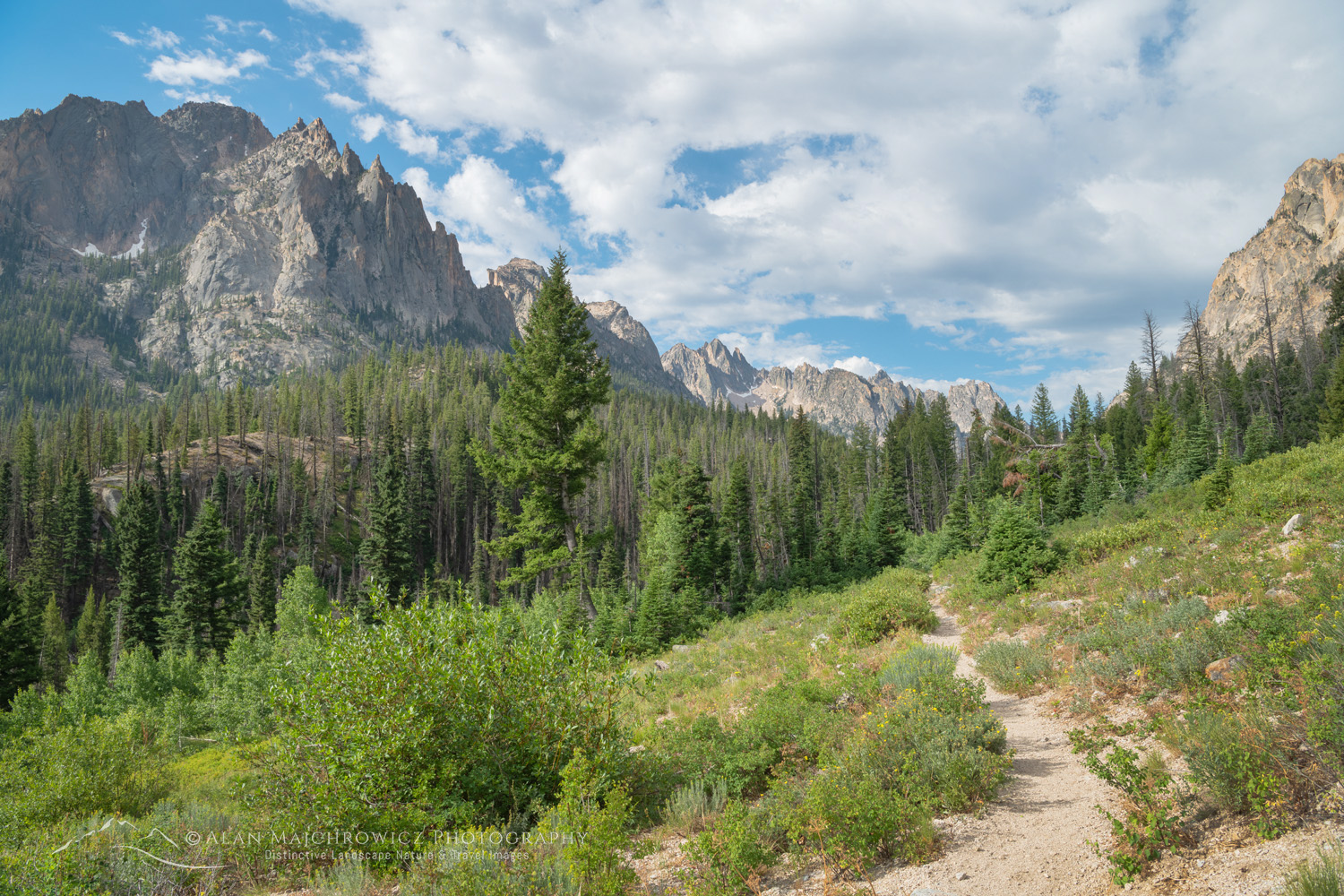 Redfish Creek Canyon Trail Sawtooth Mountains Idaho #65998 Purchase
Redfish Creek Canyon Trail Sawtooth Mountains Idaho #65998 Purchase
After an initial climb from the water taxi dock, the trail levels out a bit for the first few miles. This nearly flat section is a very pleasant hike through the forest with glimpses of impressive peaks. At Flatrock Junction, the trail splits. The right fork will take you to Alpine and Baron Lakes, another wonderful destination.
Shortly after the fork you come to the crux of the trip, a bridgeless ford of Redfish Lake Creek. The crossing isn’t especially difficult, but if you do the hike too early in the season, then water levels may be too high to safely cross. However, by early July, the crossing is usually manageable.
For the next 4 miles, the trail ascends the valley through pleasant forest with more glimpses of the surrounding peaks. Eventually, the trail levels out and small ponds and marshes replace the rushing creek, before arriving at Middle Cramer Lake.
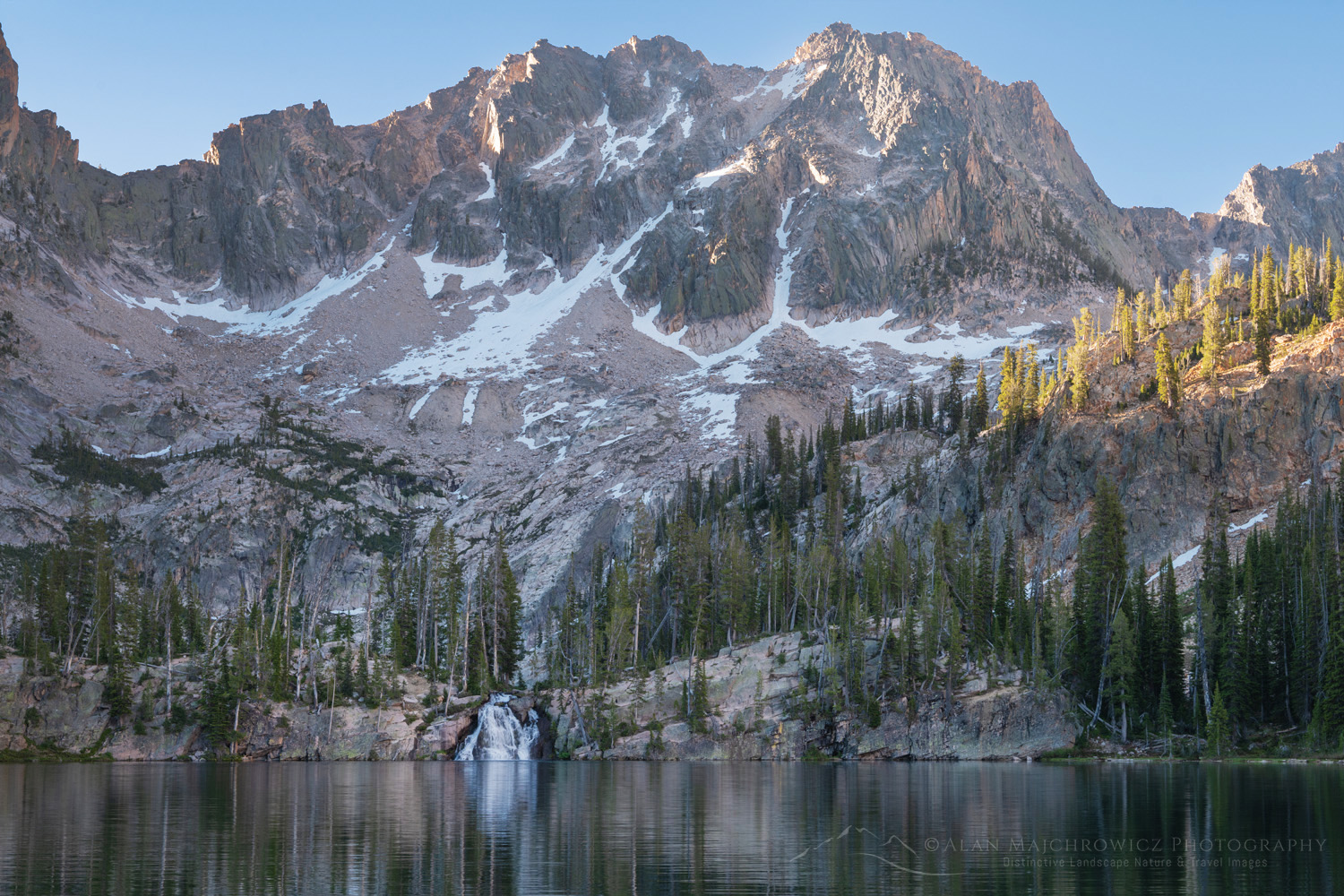 Middle Cramer Lake, the Sawtooth Mountains #83762 Purchase
Middle Cramer Lake, the Sawtooth Mountains #83762 Purchase
Camping at Cramer Lakes
You can’t mistake Middle Cramer Lake since there is a scenic waterfall at its far end plunging into its waters. There are many attractive campsites along Middle Cramer Lake, but you will need to arrive early in the day to secure the best sites.
However, while camping at Middle Cramer Lake is very scenic, camping at the upper lake is even better. There are also plenty of good sites here, with great views across the water. If you’re here for photography, I thoroughly recommend camping here. Quite possibly the best site in the area is one that is along the outlet creek, just above the waterfall.
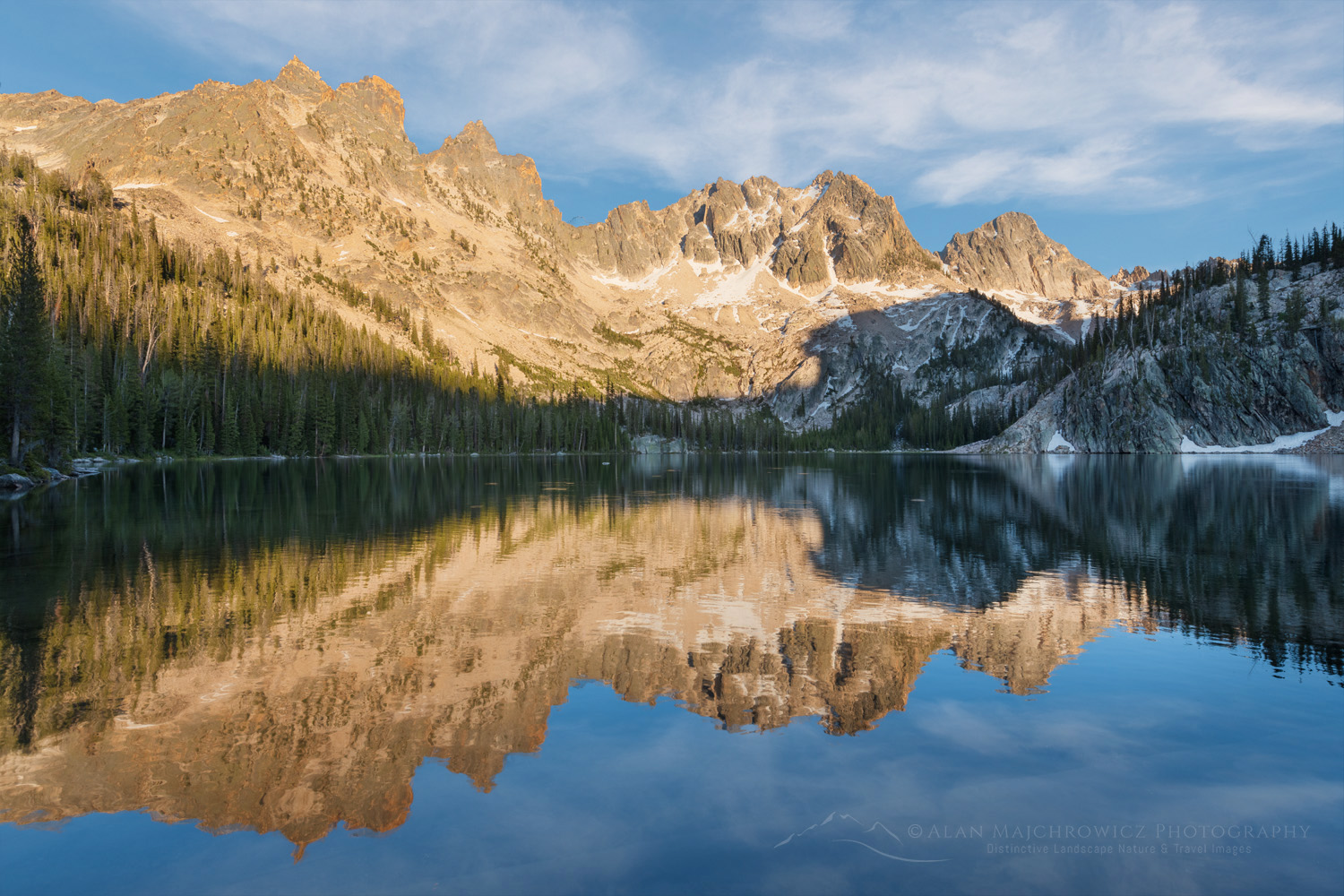 Upper Cramer Lake, Sawtooth Mountains #83611 Purchase
Upper Cramer Lake, Sawtooth Mountains #83611 Purchase
 Upper Cramer Lake, Sawtooth Mountains #83633 Purchase
Upper Cramer Lake, Sawtooth Mountains #83633 Purchase
Photographers camping at a site at Upper Cramer Lake can easily scout out both upper and lower lakes and find excellent compositions. Both morning and evening golden hours are wonderful here, with the evening being especially nice.
 Golden hour at Laury Tarn #83704 Purchase
Golden hour at Laury Tarn #83704 Purchase
Upper Basin and Cramer Divide
While Middle and Upper Cramer Lakes are undoubtedly scenic, the upper basin takes scenic to another level. In addition, it undeniably has the most and possibly the best subject matter for photographers.
From Upper Cramer Lake to Cramer Divide the trail traverses through an exceptionally beautiful alpine environment. Along the way there are a couple more lakes, small tarns, rock gardens, and fearsome towers of rock in every direction, all culminating at Cramer Divide.
 The Temple, Upper Cramer Basin #83650 Purchase
The Temple, Upper Cramer Basin #83650 Purchase
The largest of the lakes in the upper basin is Laury Tarn. Photographers will find this lake/tarn to be especially rich in compositions. After a night or two at the lower lakes, it would be ideal to spend a couple more at Laury Tarn. This would allow time to thoroughly scout the upper basin and Cramer Divide for photo opportunities. The entire lakeshore is particularly rich in compositions, and this is a prime location during golden hour.
From Laury Tarn to Cramer Divide the trail passes through moraines, rock gardens, and a few more tarns before arriving at the divide. Cramer Divide is a wonderfully scenic spot with groves of wind-weathered white-bark pines and magnificent views in every direction.
 Upper Cramer Basin #83722 Purchase
Upper Cramer Basin #83722 Purchase
Essential Tips for Photographing Cramer Lakes Sawtooth Mountains:
- Start early. Try to get the first water taxi to the trailhead. This will help with securing a prime campsite without having to rush up the trail.
- Crossing Red Fish Creek will be easier with hiking poles or a sturdy stick. Rocks on the creekbed are round and slippery, so take your time and use caution. However, If the water levels are too high and the crossing looks sketchy, change your plans and go to Baron Lakes instead.
- Bring a tripod. Especially for serious photography, saving weight by leaving your tripod at home isn’t the best idea. Of course, the rest of your gear can be ultra-light but camera gear takes priority.
- Golden hour in the evening is, for the most part, better than in the morning.
- Check out these posts for even more in-depth tips:
Backpacking Photography Tips
Backpacking Photography Gear Tips
 Cramer Lakes Sawtooth Wilderness #83720 Purchase
Cramer Lakes Sawtooth Wilderness #83720 Purchase
If You Go to Cramer Lakes
Round Trip Distance: 15 Miles
Elevation: About 3000′ gain, highpoint Cramer Divide 9501′
Difficulty: Moderate to difficult
Red Tape: Free Permits are required, available at the trailhead
To get to Redfish Lake hikers parking lot, Redfish Lake Lodge and water taxi drive about 6 miles south of Stanley on U.S. 75 and another two miles along FR 214. There are plenty of campsites near Redfish Lake and Little Redfish Lake.
The small scenic town of Stanley Idaho makes a great base for trips into the Sawtooths. Lodging, groceries, restaurants, outdoor gear stores, and a great bakery are in town. Redfish Lake Lodge also has many similar amenities.
As mentioned earlier in this post, the Sawtooth Mountains are a popular destination. Not only for hikers and backpackers, but also tourists, front country family camping, river rafters, and fishing. During the height of summer just about every campsite, both front country, and backcountry will be filled before noon. So make your plans accordingly to avoid frustration.
One of the best perks of the area is the numerous natural and wild hot springs. Soaking in one along the Salmon River is also one of the greatest post-hike activities.
 Upper Cramer Lake Sawtooth Wilderness #83609 Purchase
Upper Cramer Lake Sawtooth Wilderness #83609 Purchase
Leave No Trace
Please, Please, Please! Don’t plan a trip to this or any other wilderness area unless you are prepared to follow the guidelines of Leave No Trace (LNT). National Parks and wilderness areas throughout the world are under incredible pressure from growing amounts of visitors. So, please do your part to help preserve these precious areas for future generations!
To learn more about the principles and practicing LNT please take a few minutes to visit the Leave No Trace Center for Outdoor Ethics. Your children and grandchildren will thank you!
LEAVE NO TRACE SEVEN PRINCIPLES
1. Plan Ahead and Prepare
2. Travel and Camp on Durable Surfaces
3. Dispose of Waste Properly
4. Leave What You Find
5. Minimize Campfire Impacts
6. Respect Wildlife
7. Be Considerate of Other Visitors
© Leave No Trace: www.LNT.org
Learn about how to protect the places we love to photograph
Visit the Nature First Website

Check out these other Sawtooth Wilderness Posts:
Baron Lakes Sawtooth Mountains
Alice Lake-Toxaway Loop Backpacking Photography
Sawtooth Lake Idaho
 The Temple, Sawtooth Wilderness #83648 Purchase
The Temple, Sawtooth Wilderness #83648 Purchase
All photos appearing in Photographing Cramer Lakes Sawtooth Mountains are available for Commercial Licensing and Fine Art Prints. Click on any image to purchase, or contact me for more info!
Photographing Cramer Lakes Sawtooth Mountains

